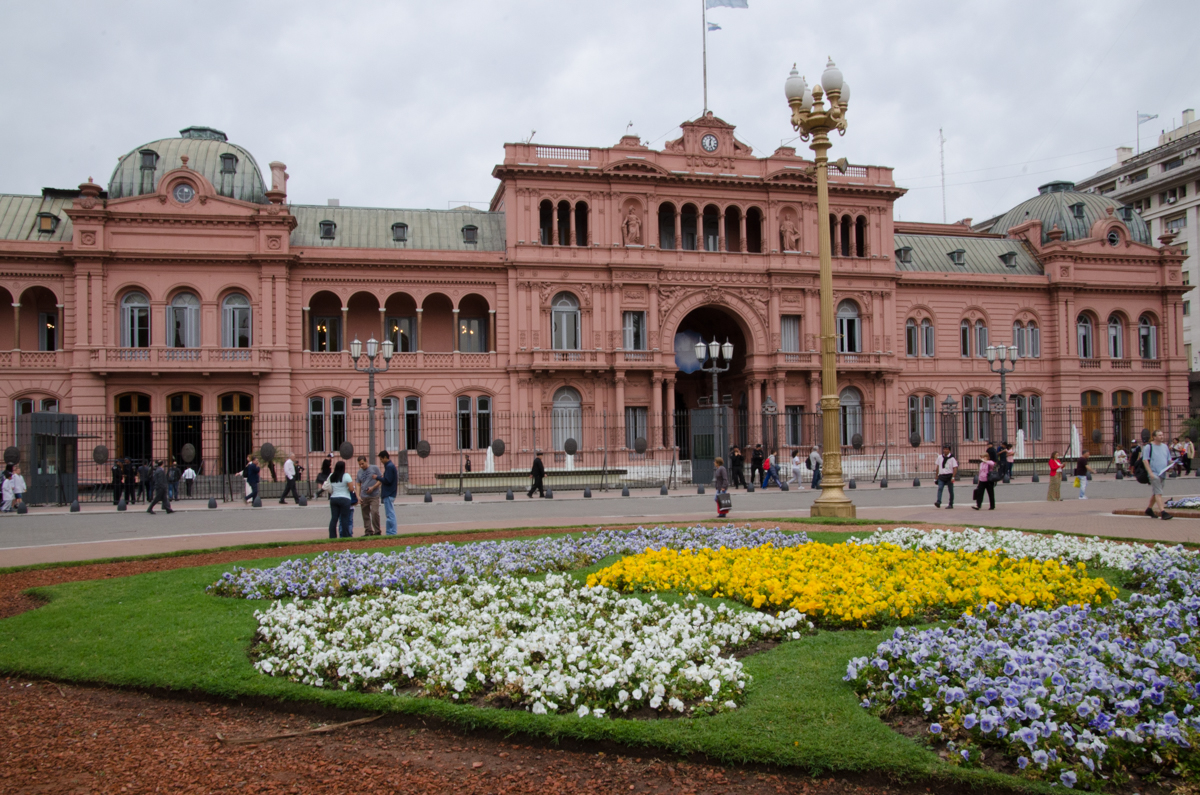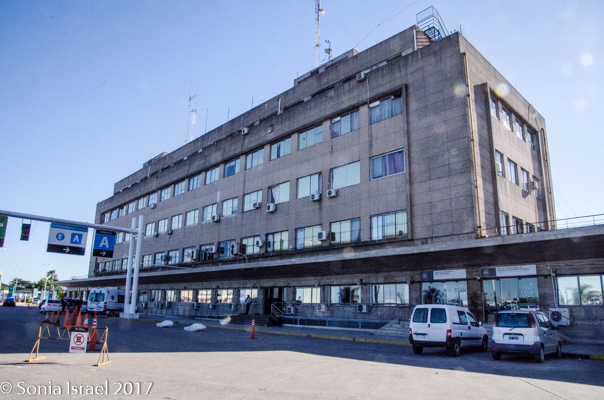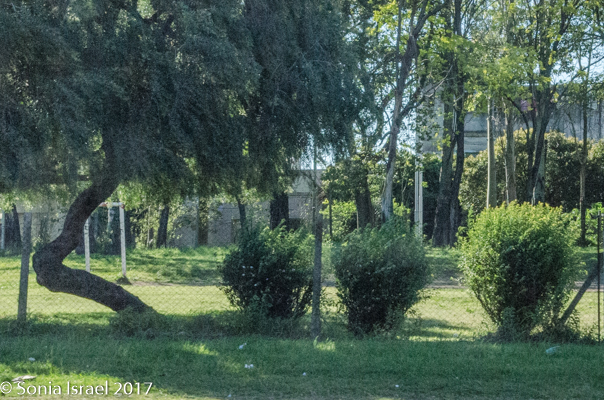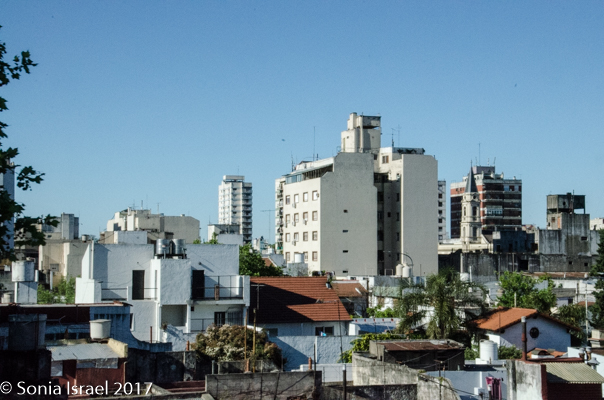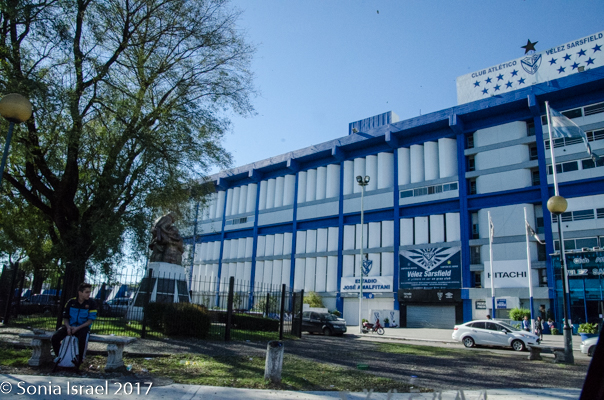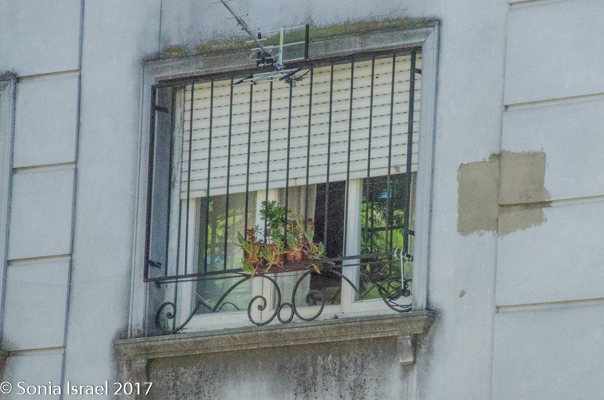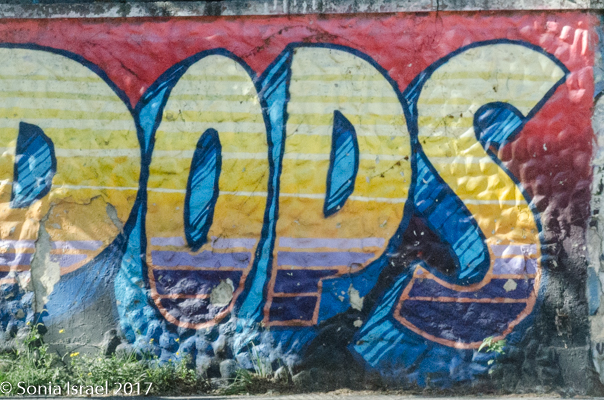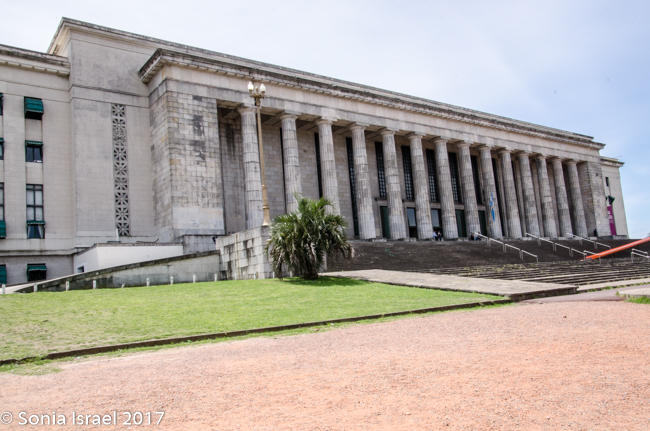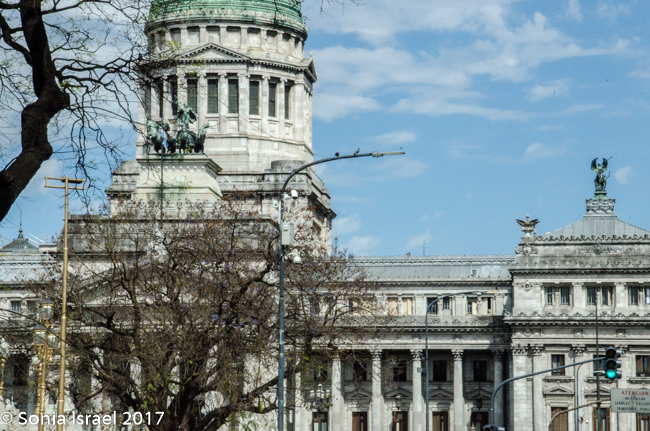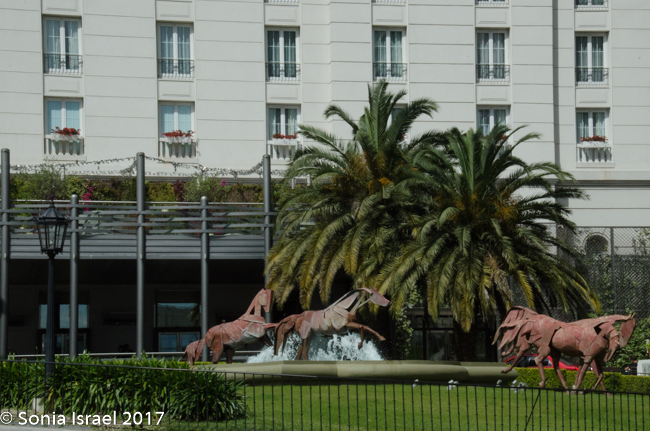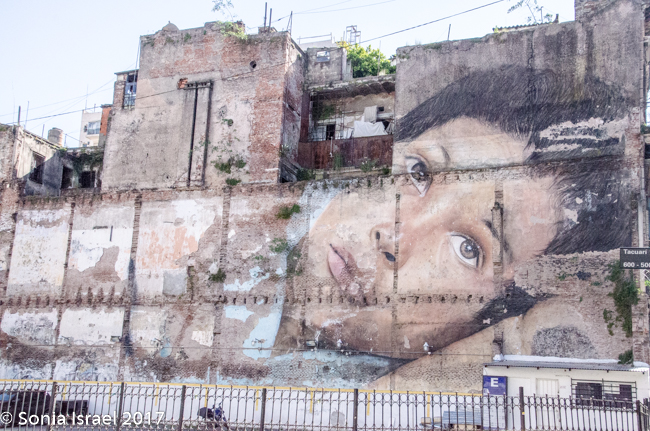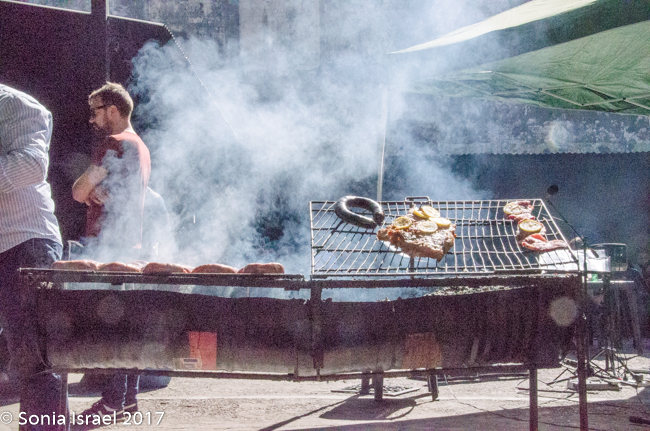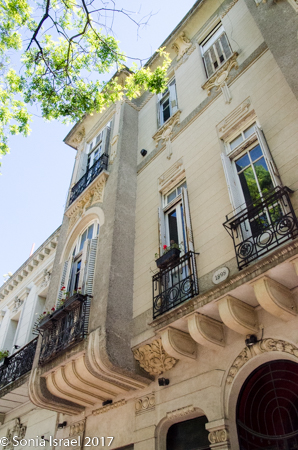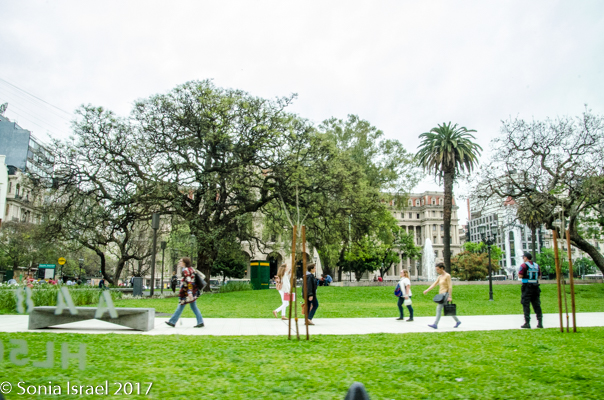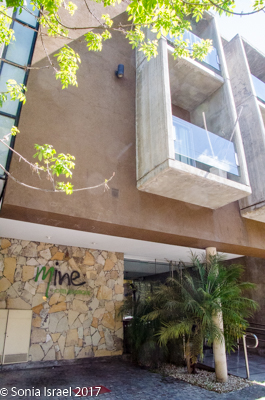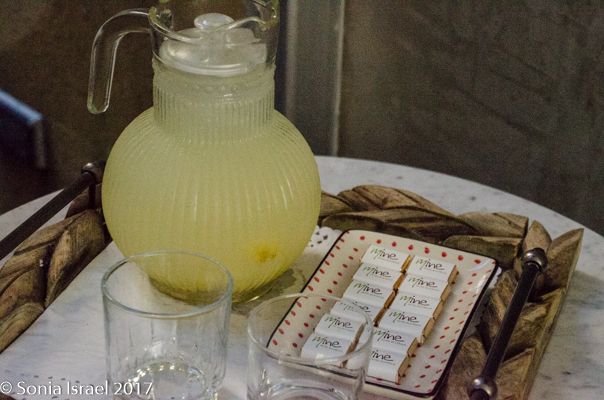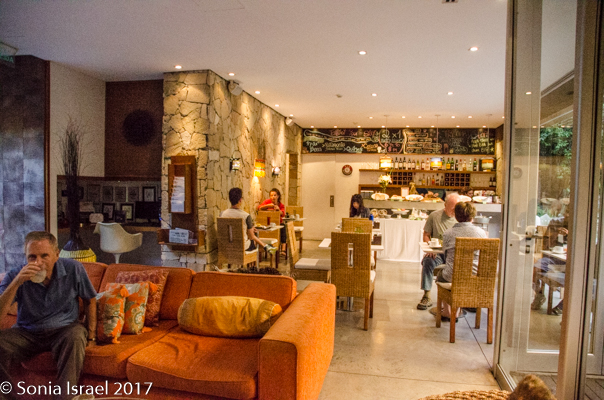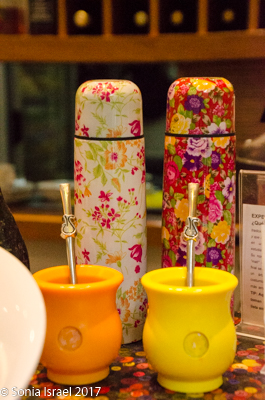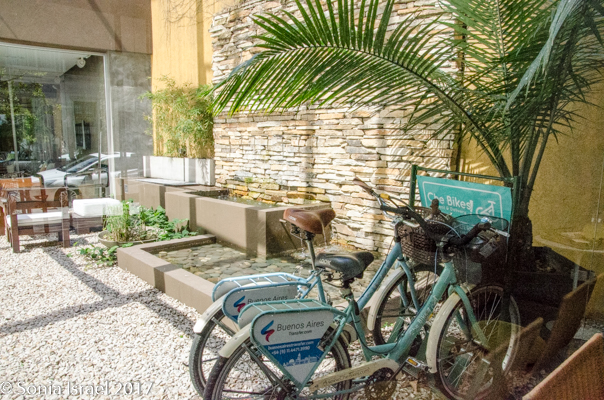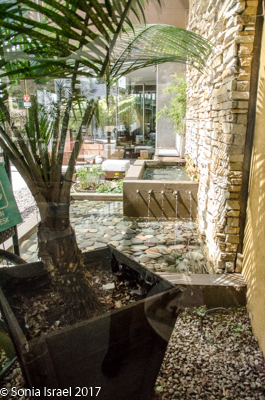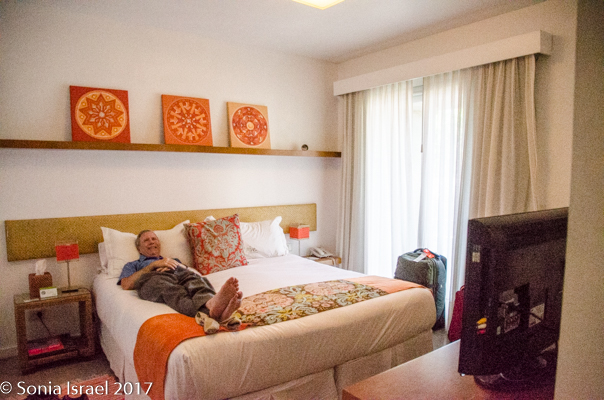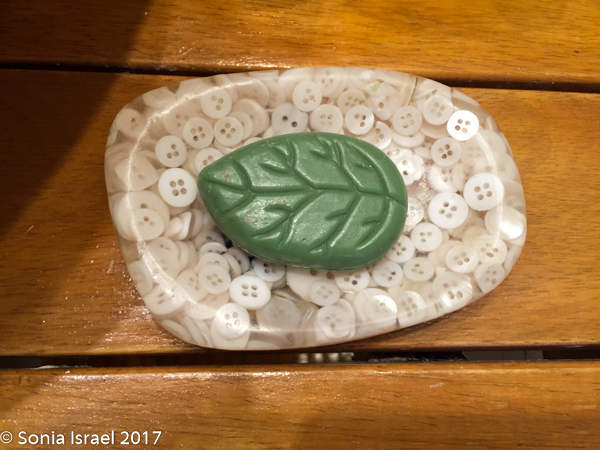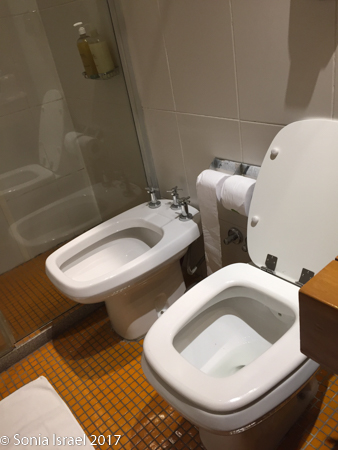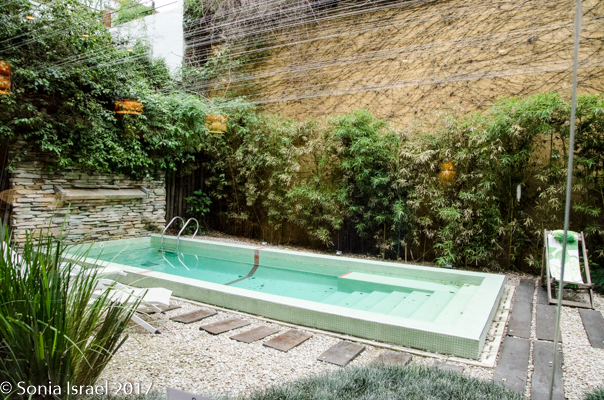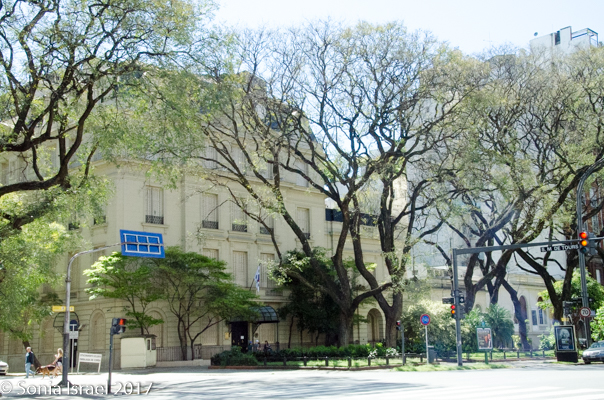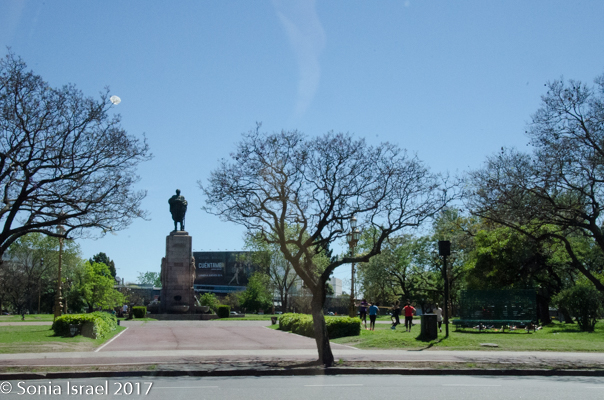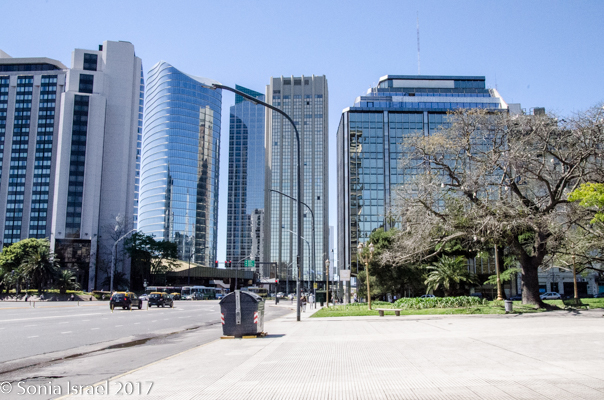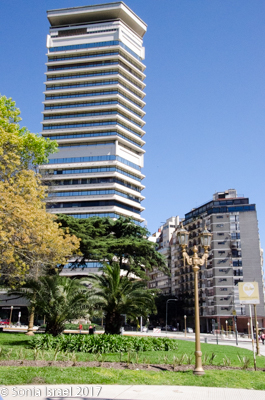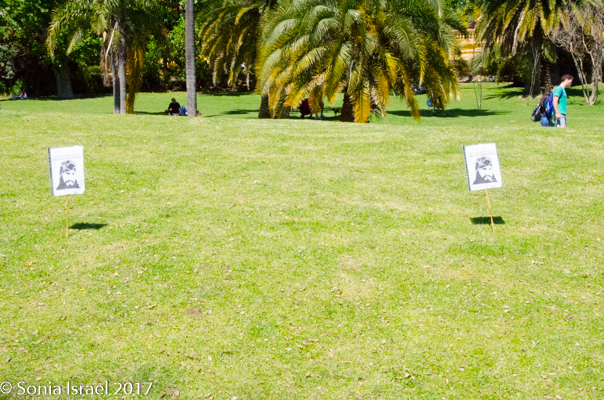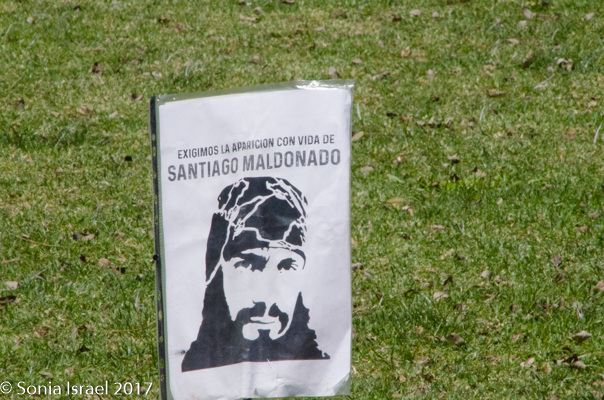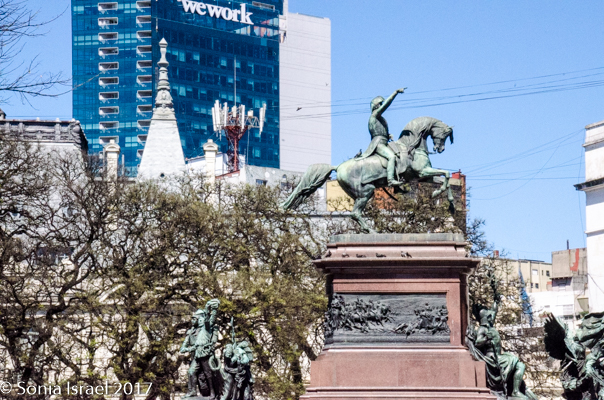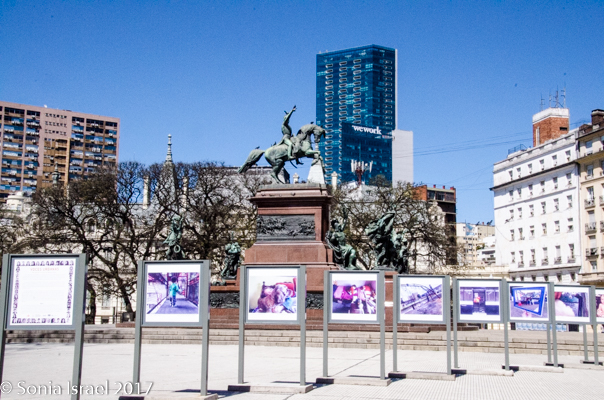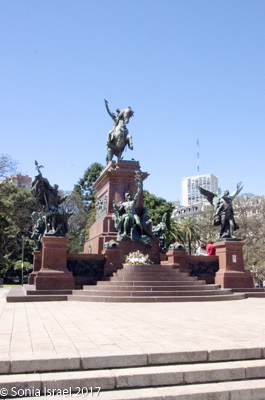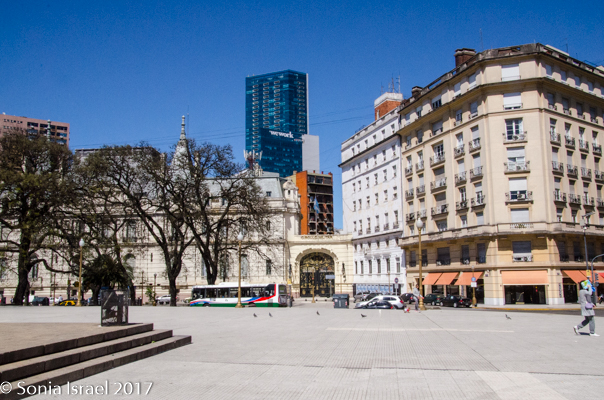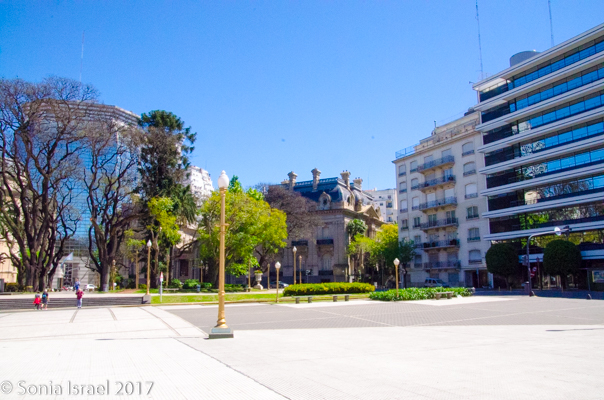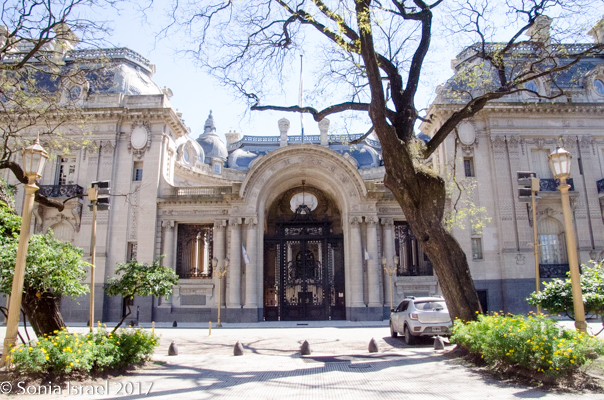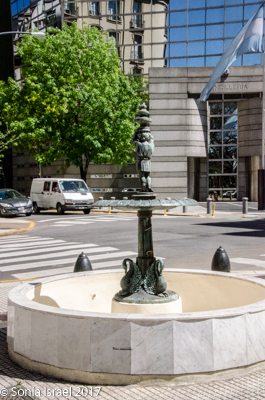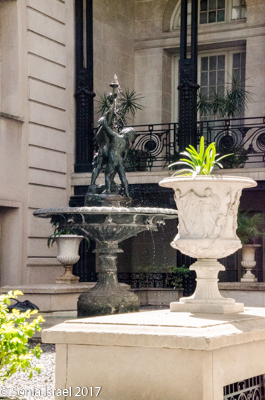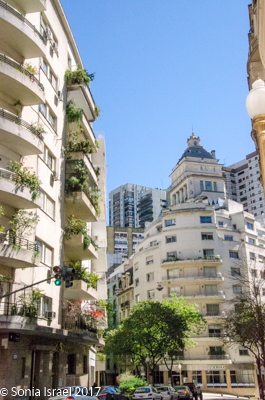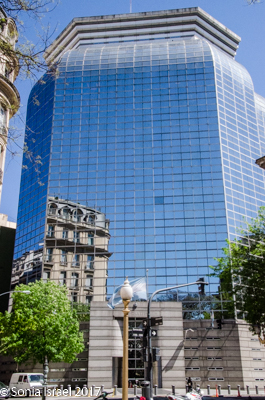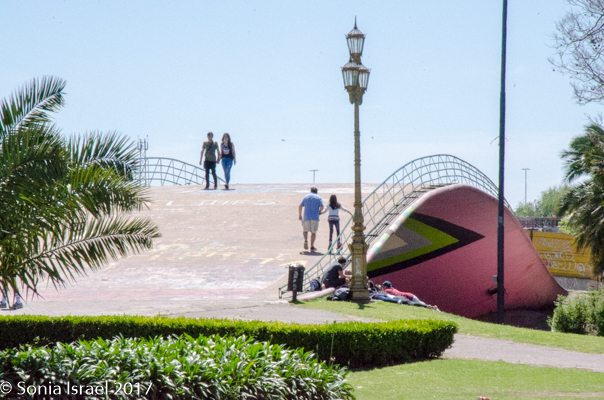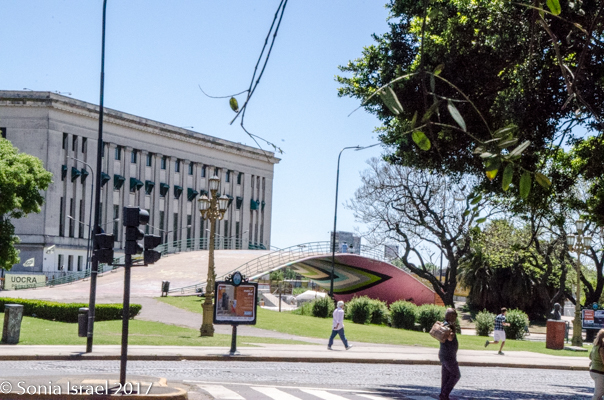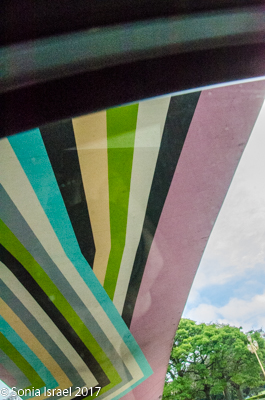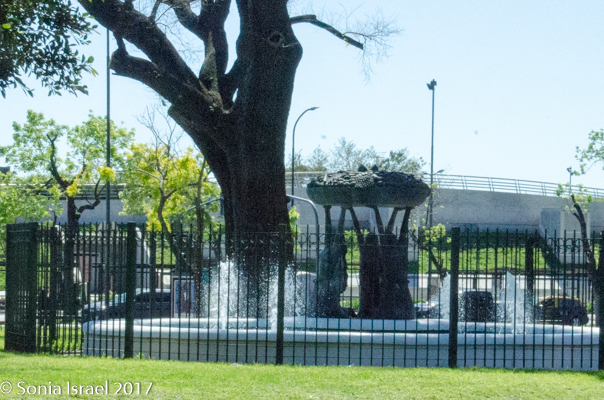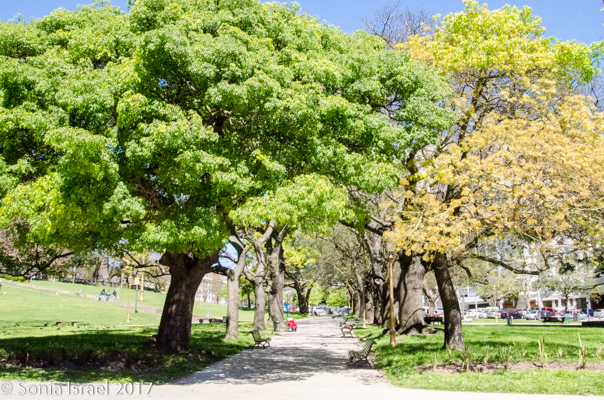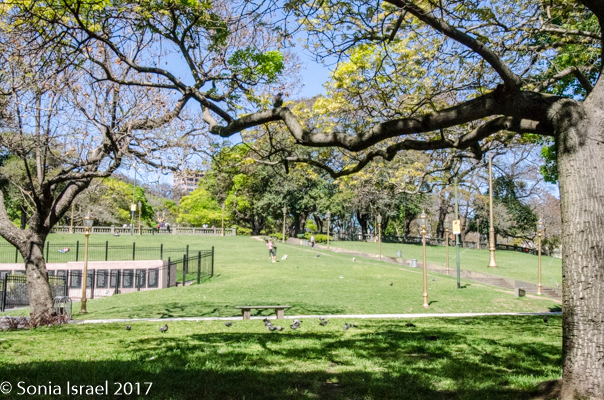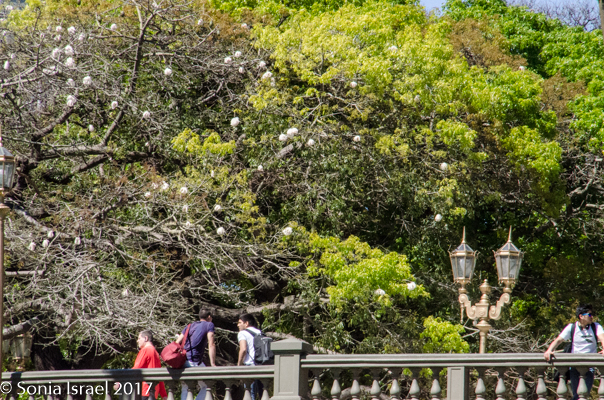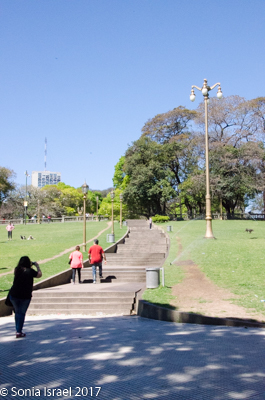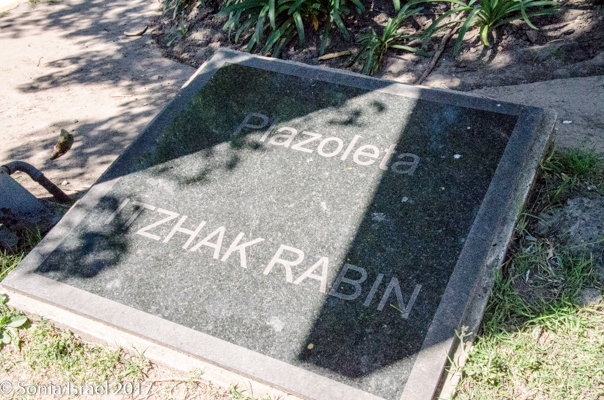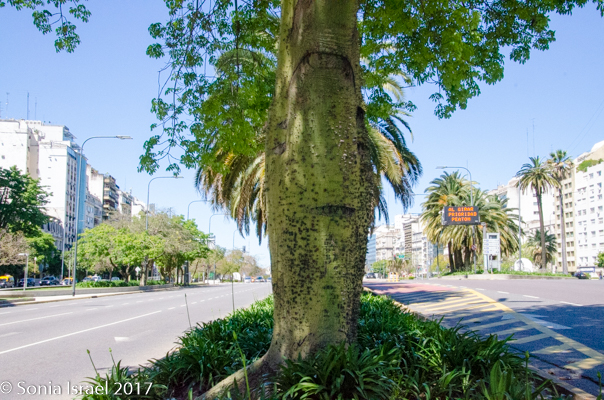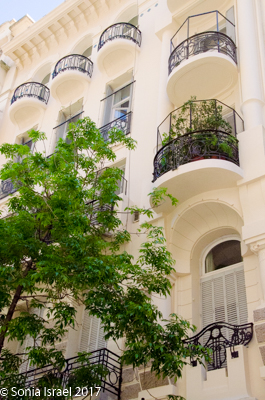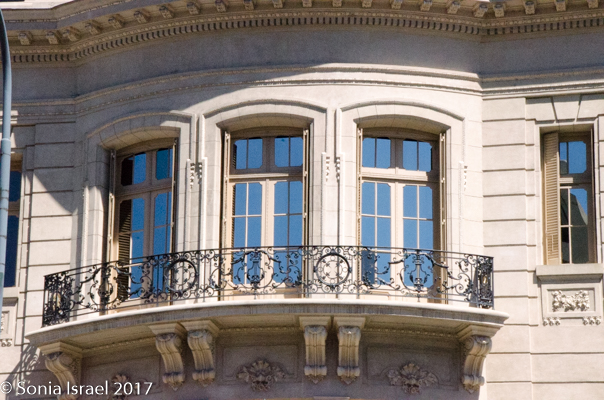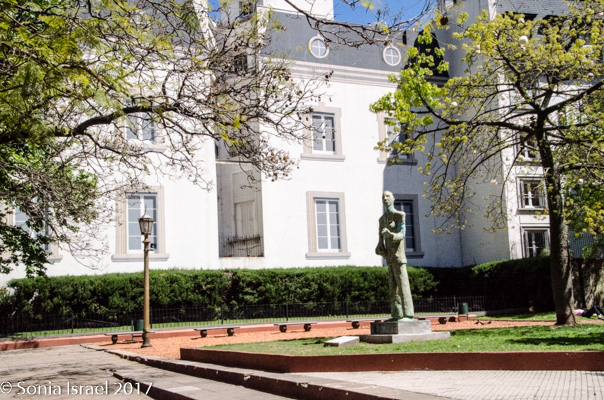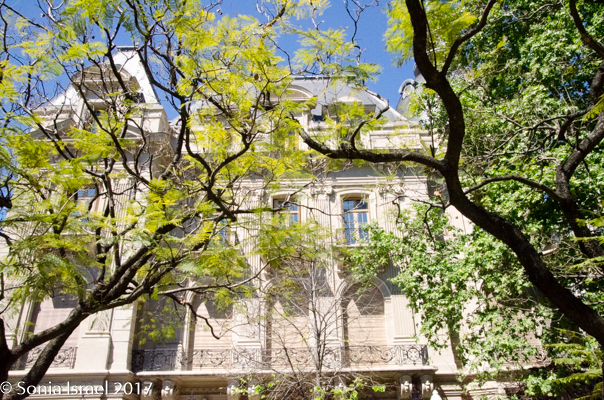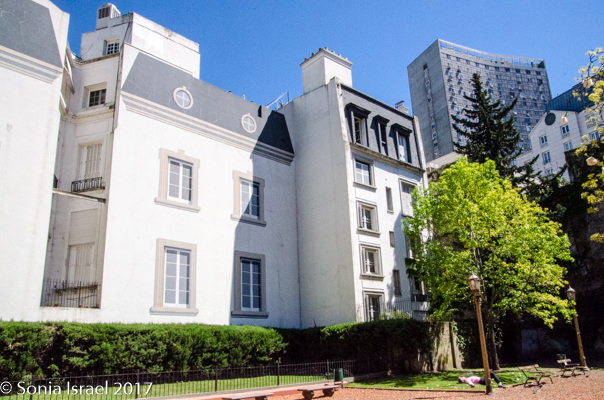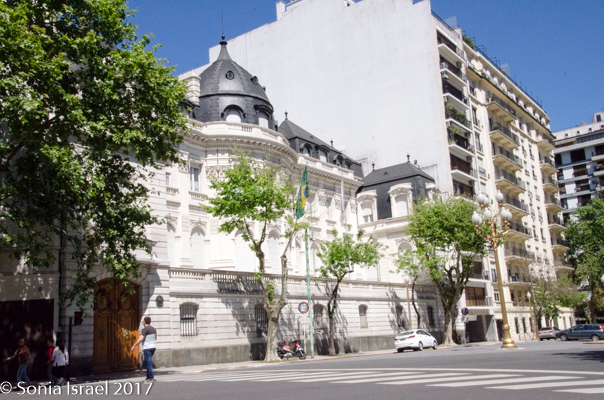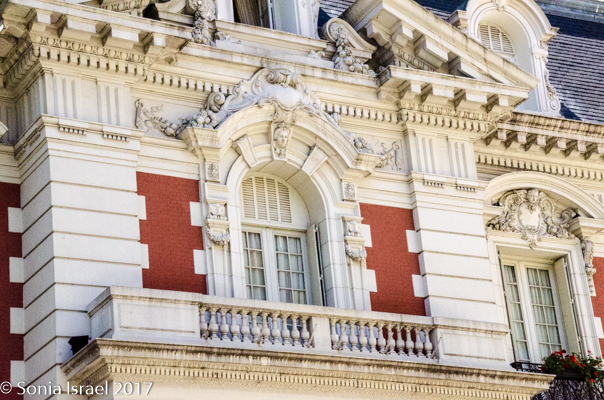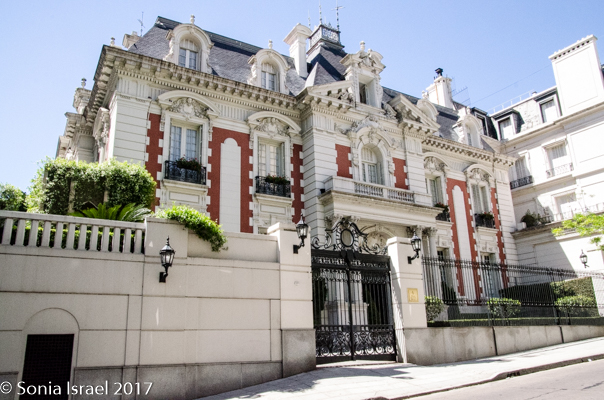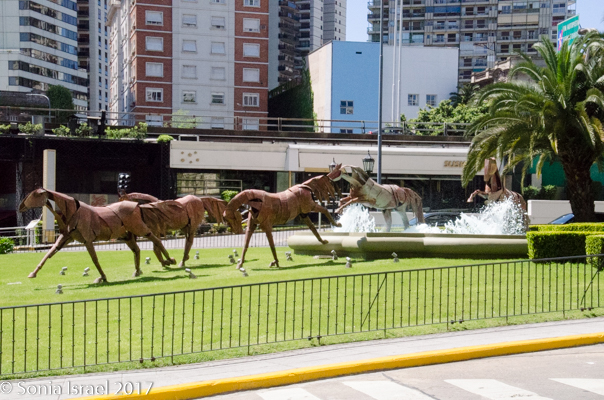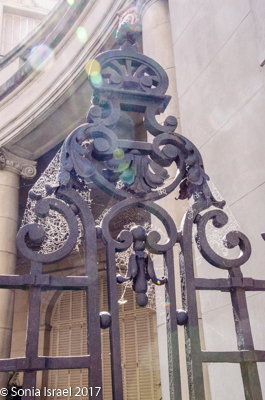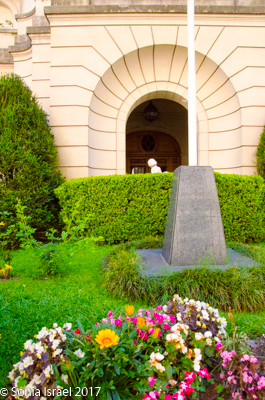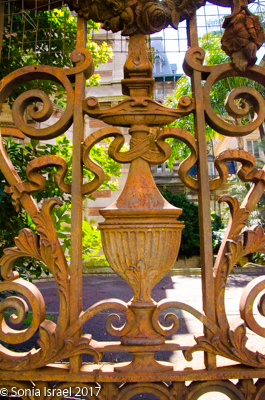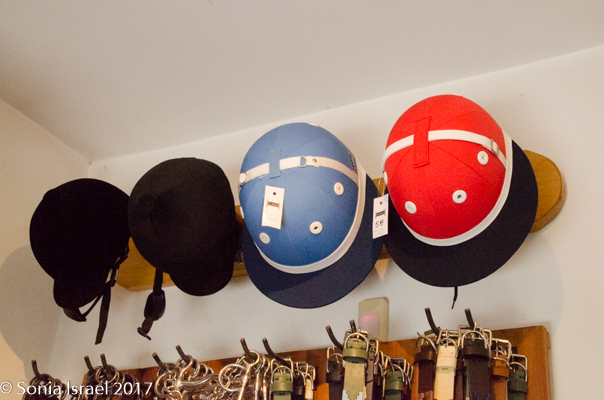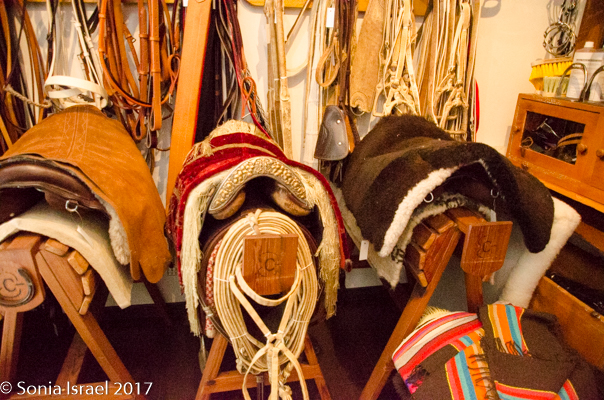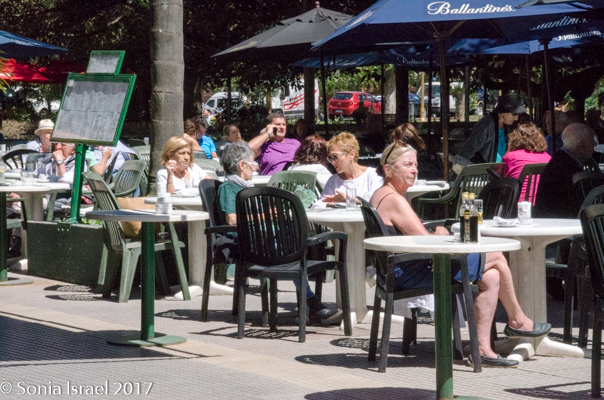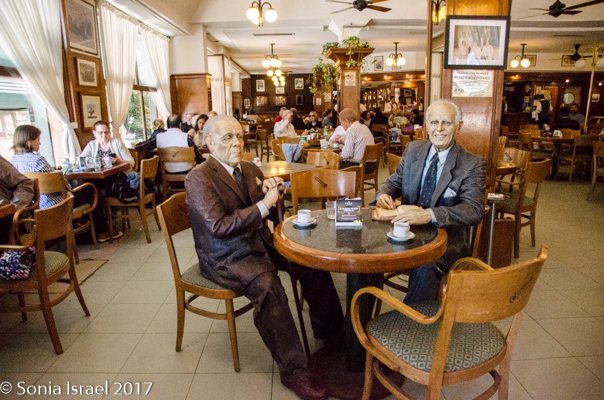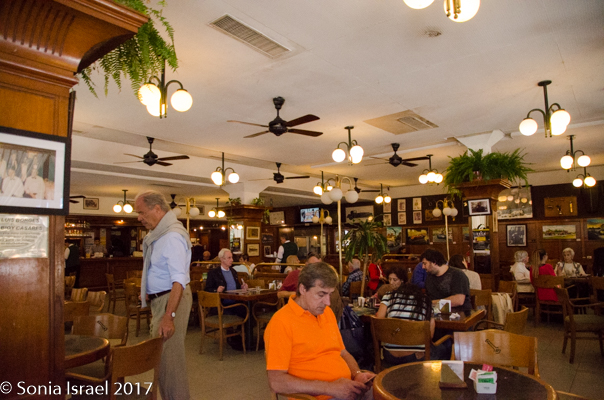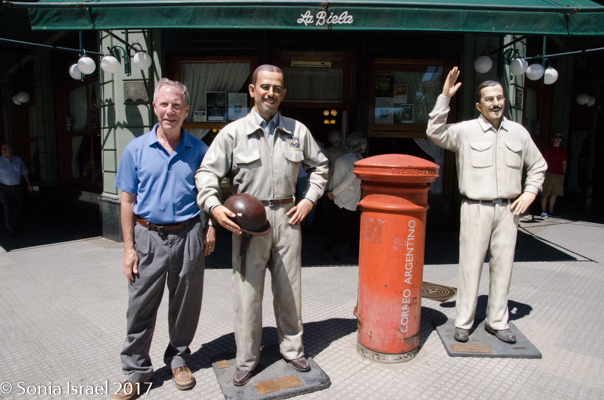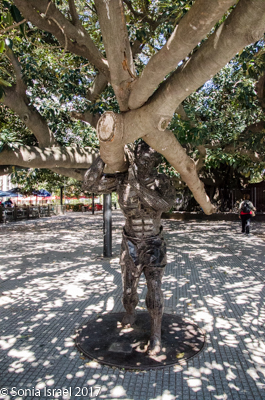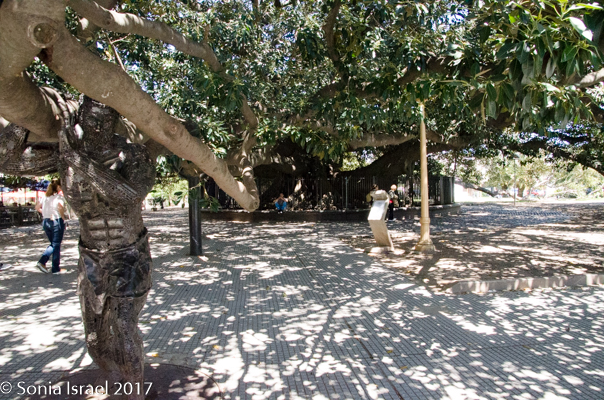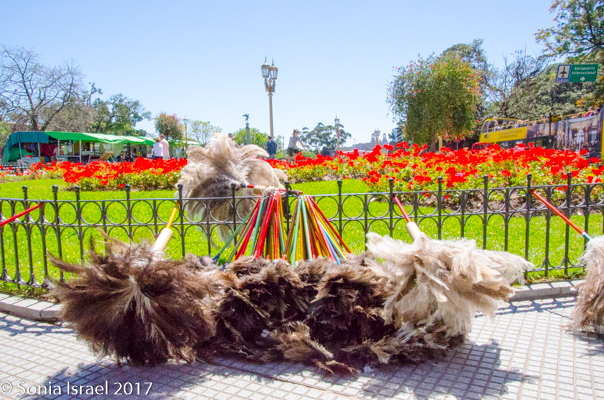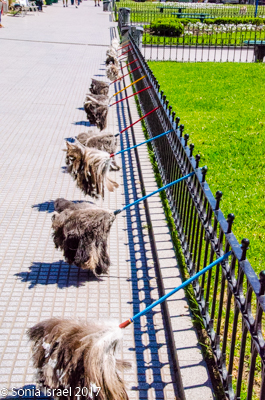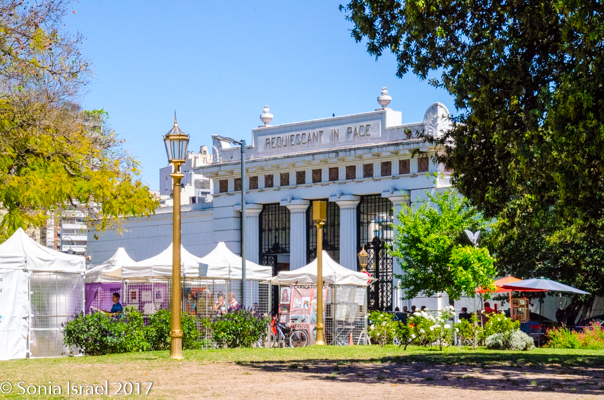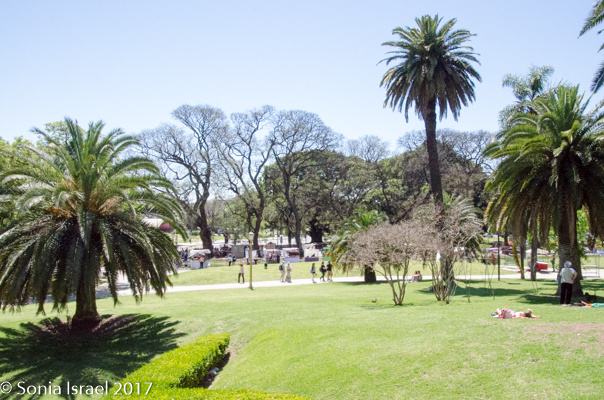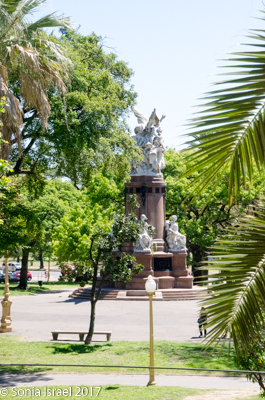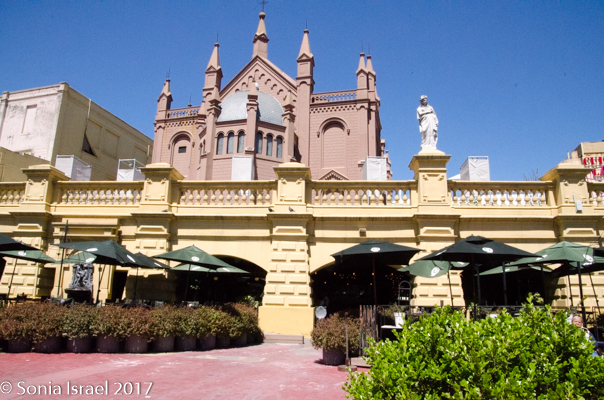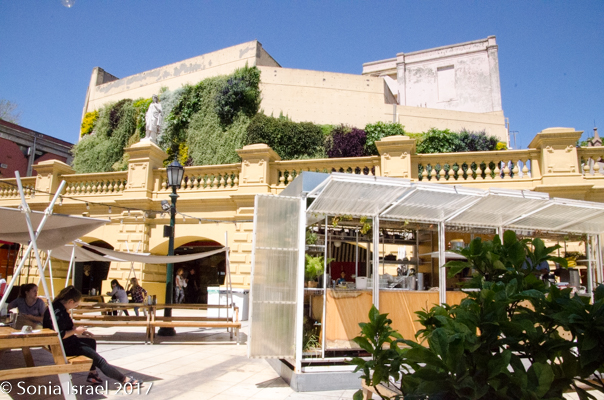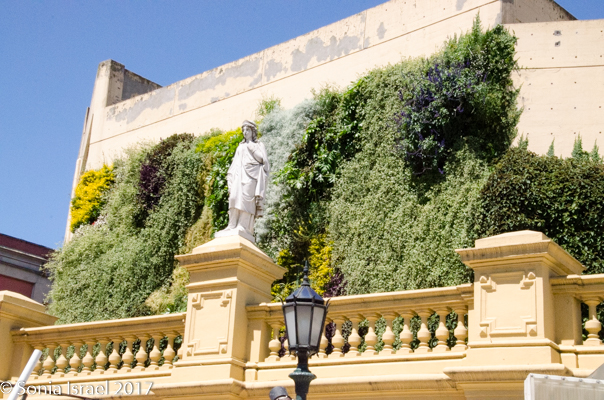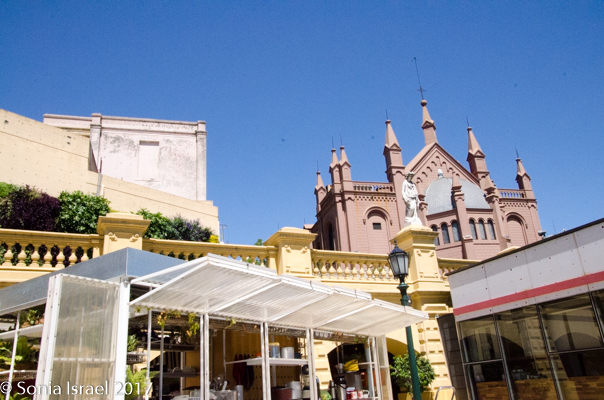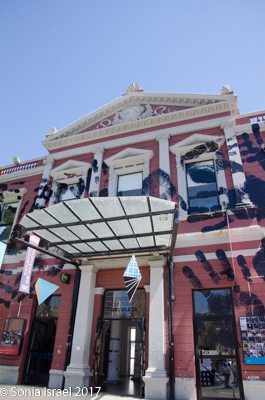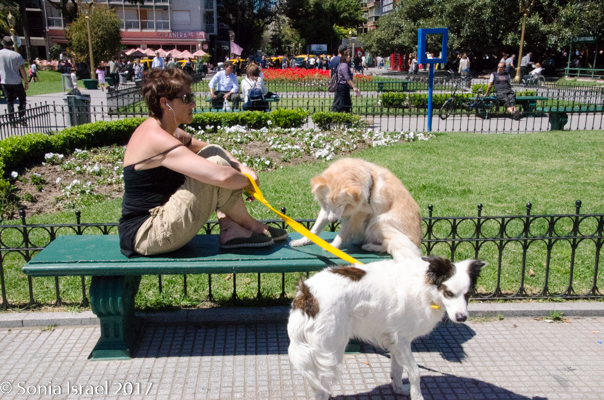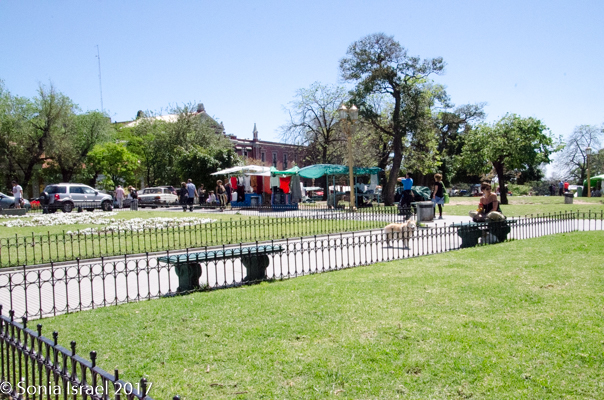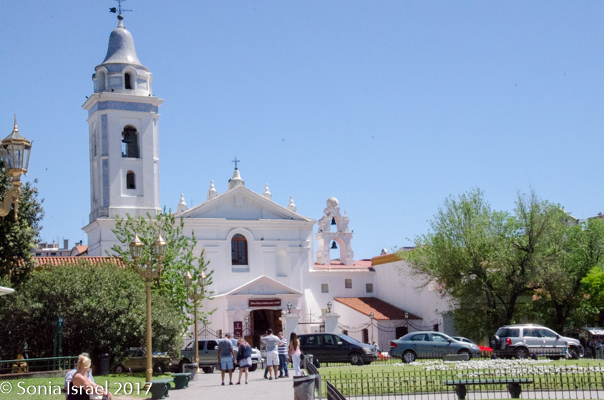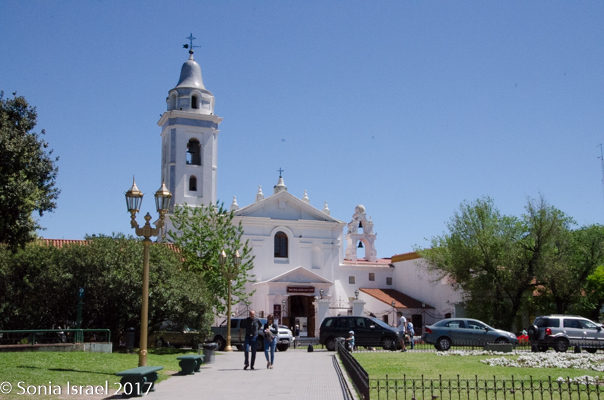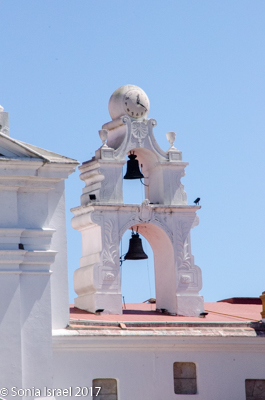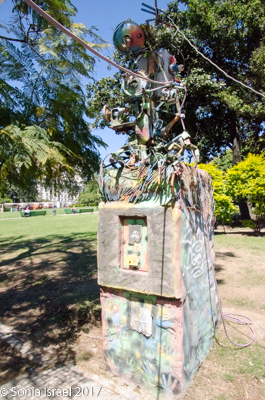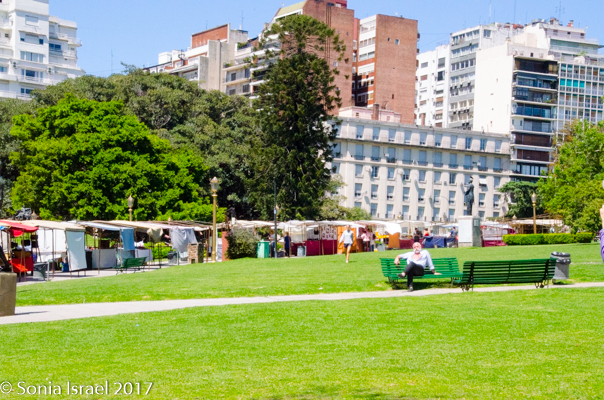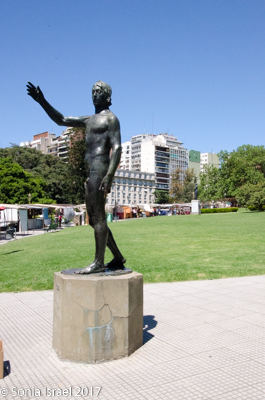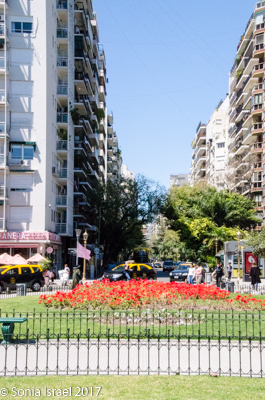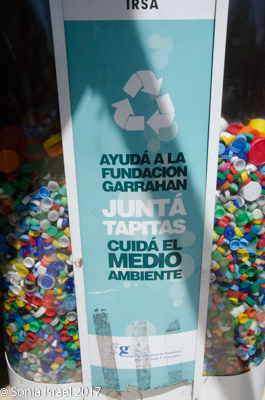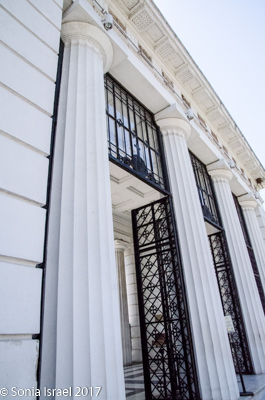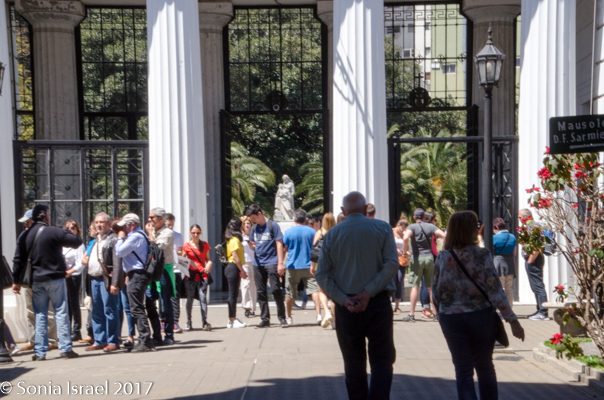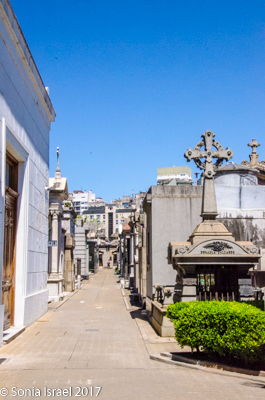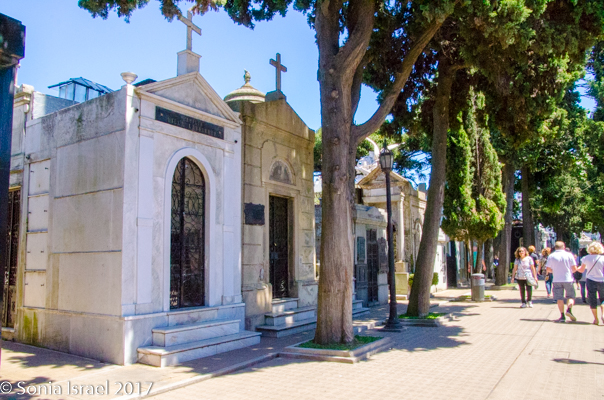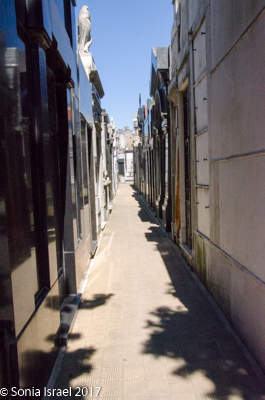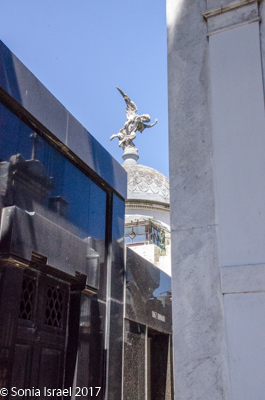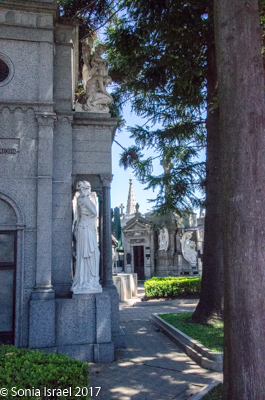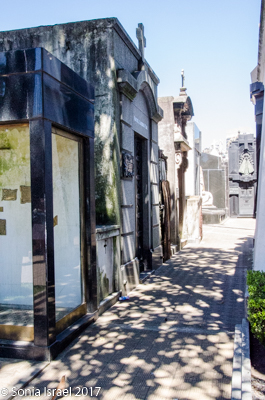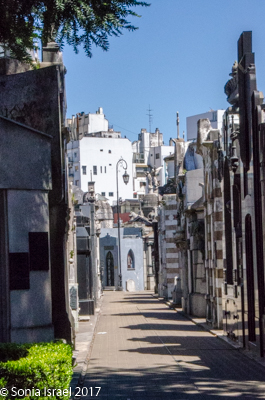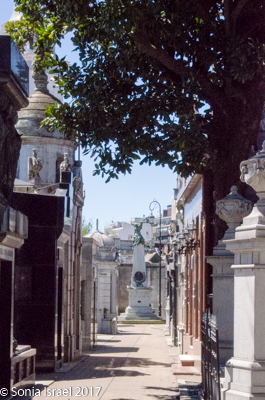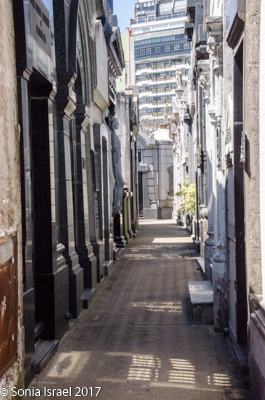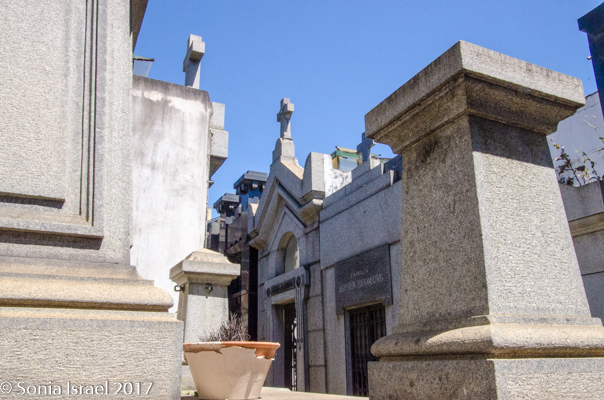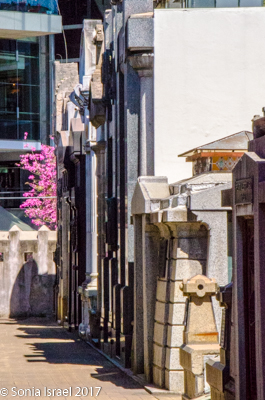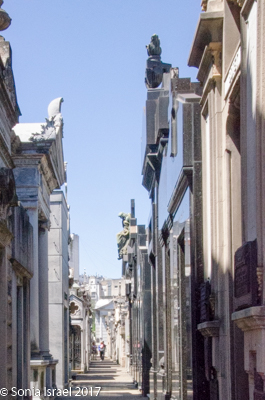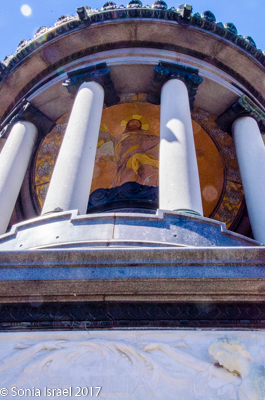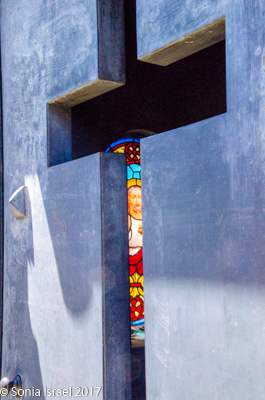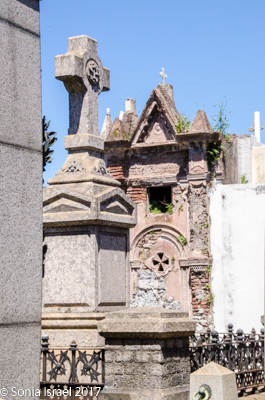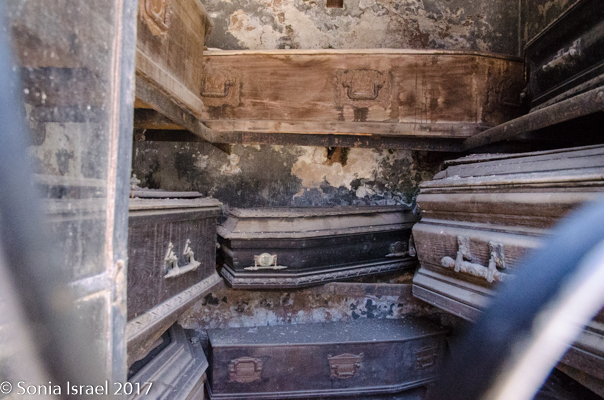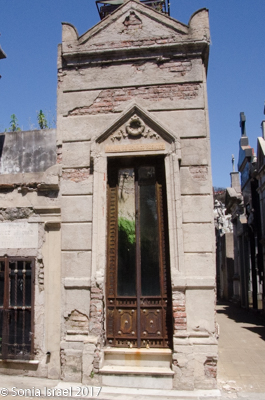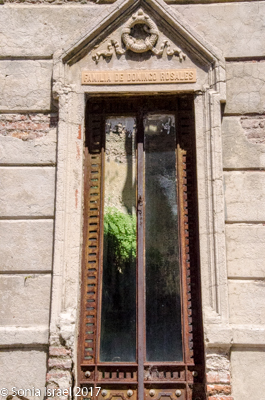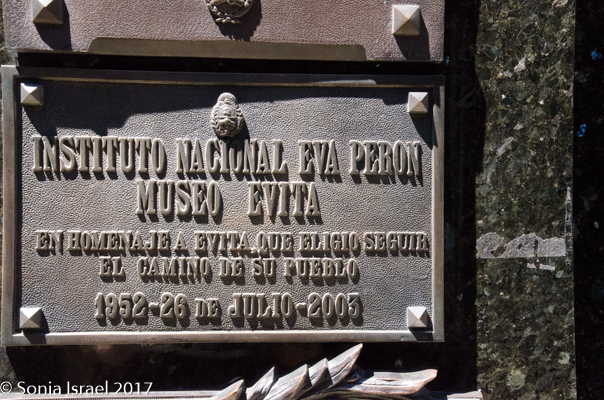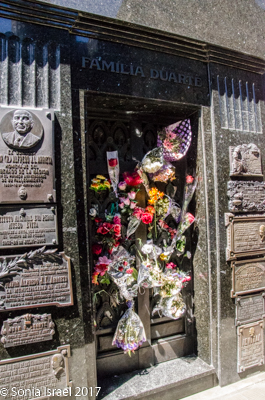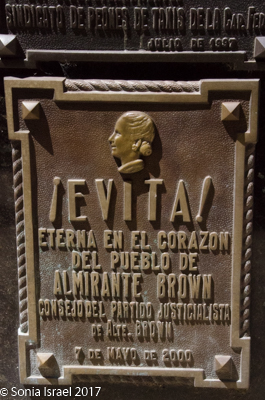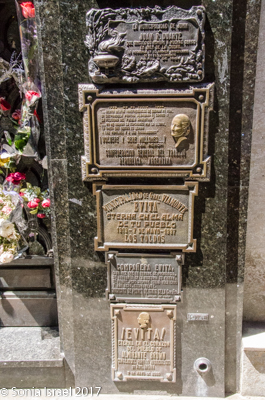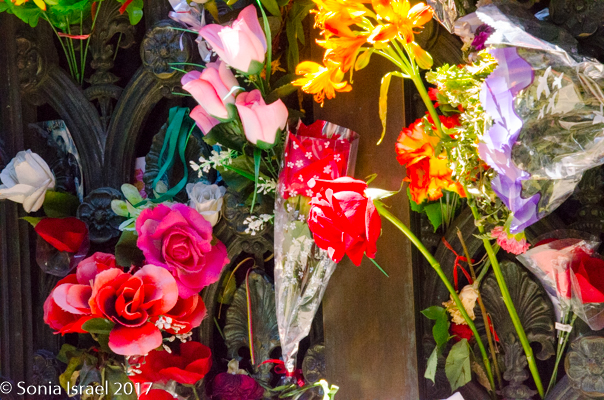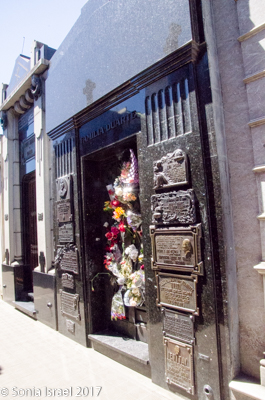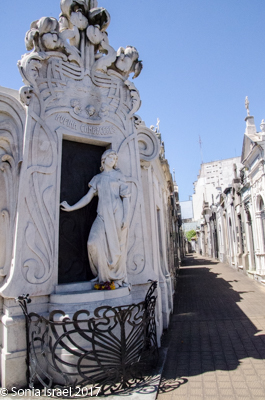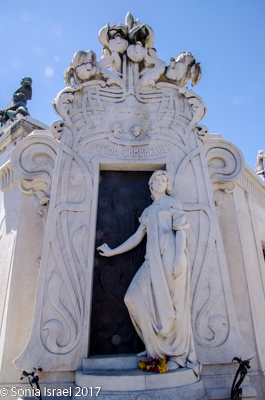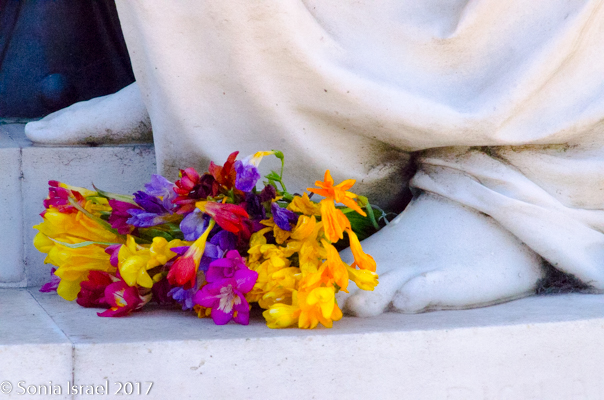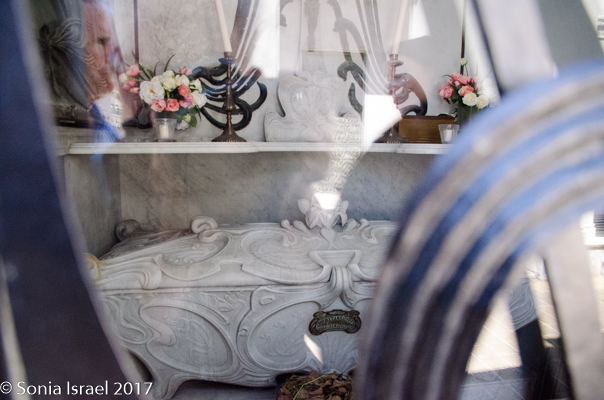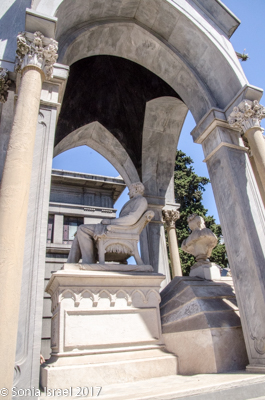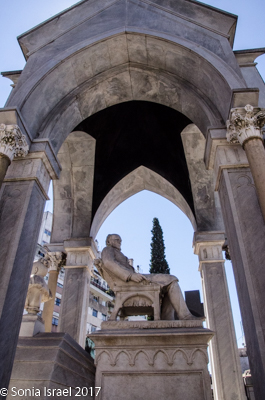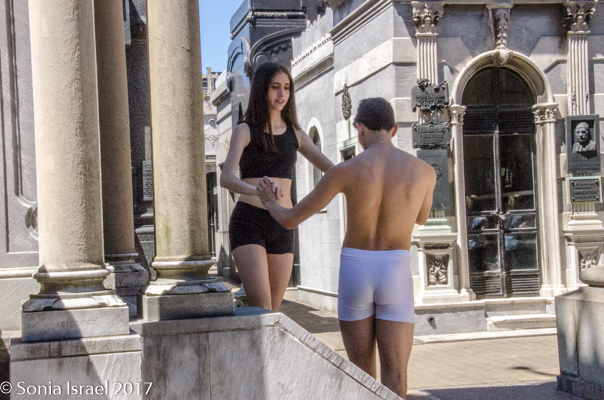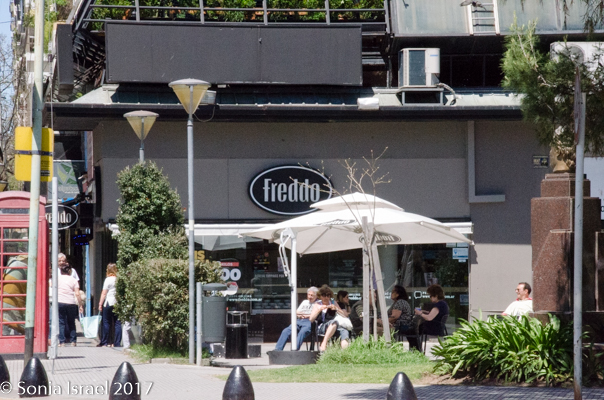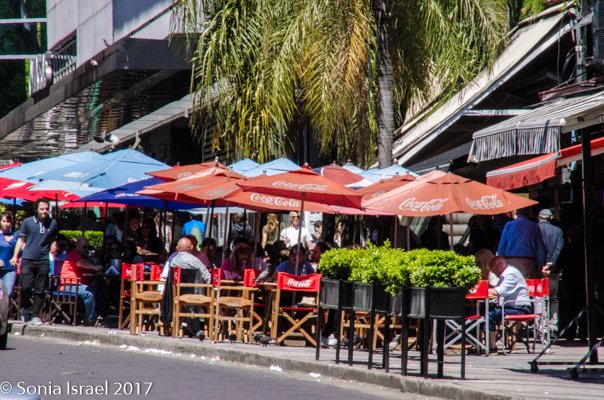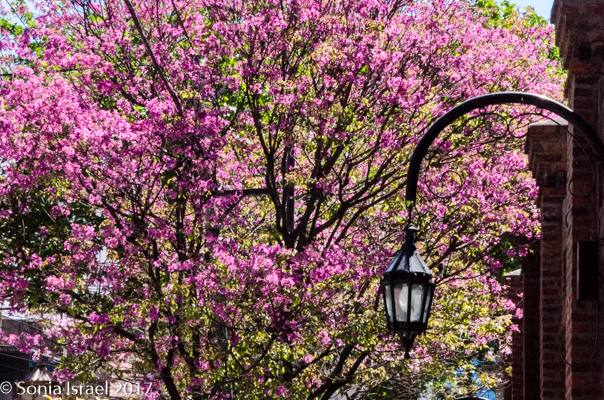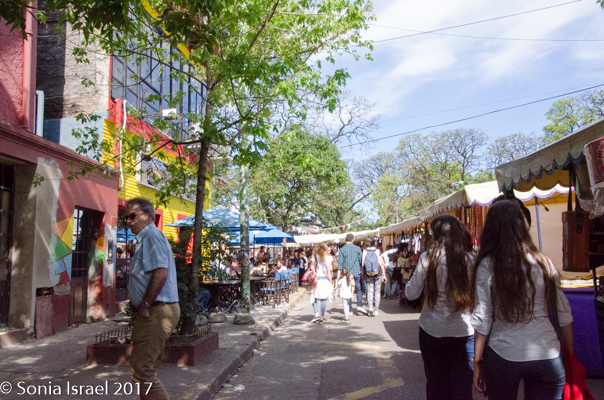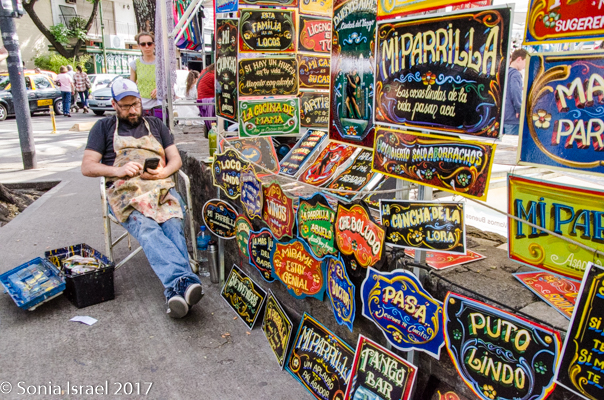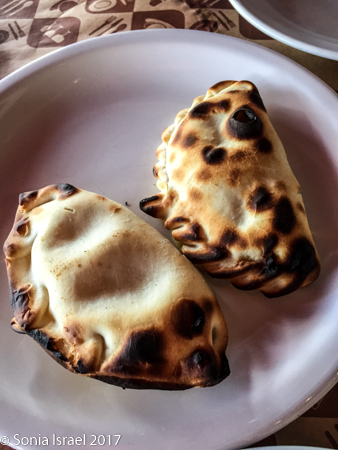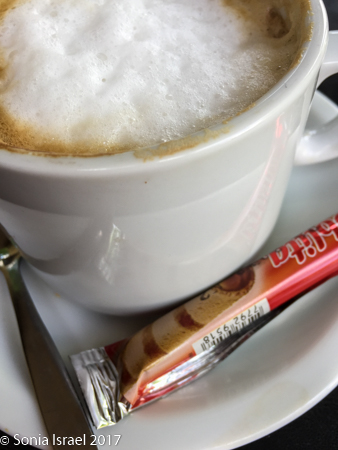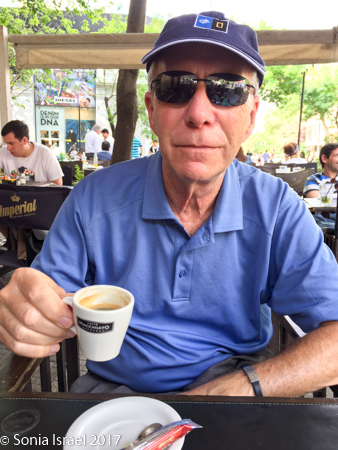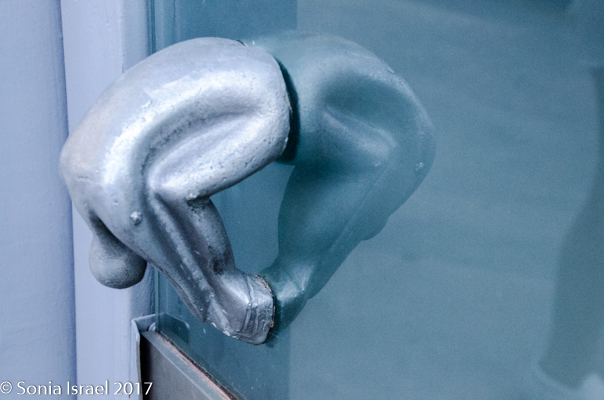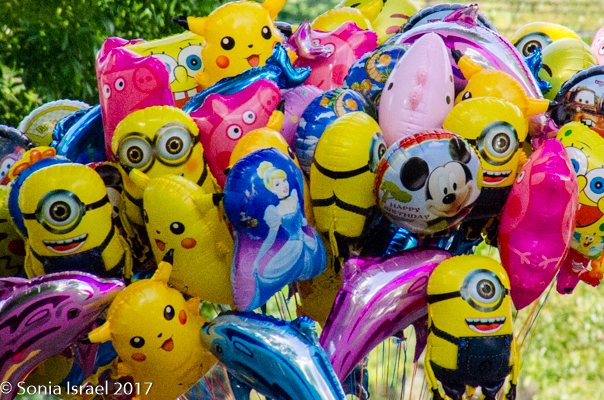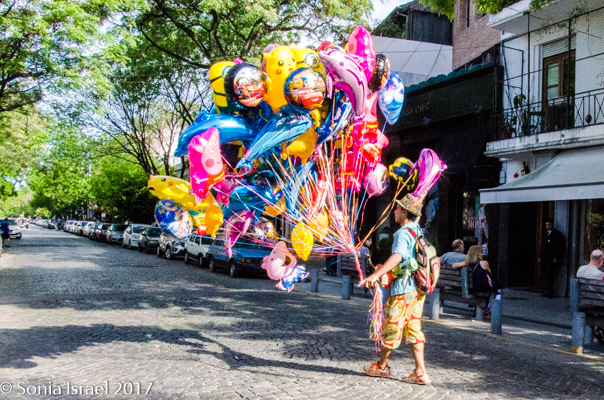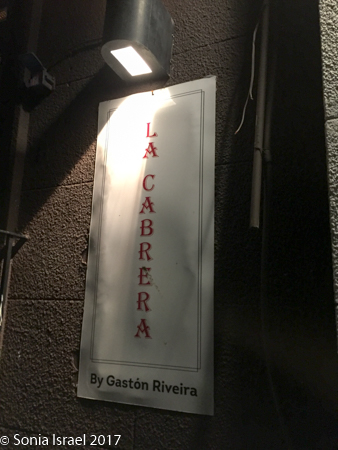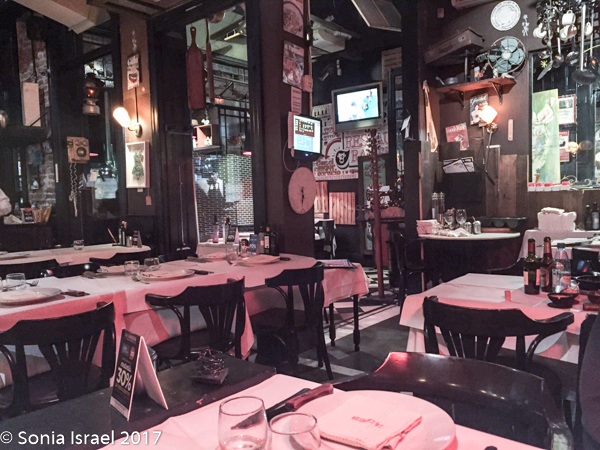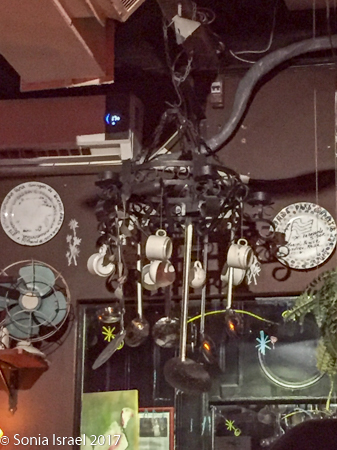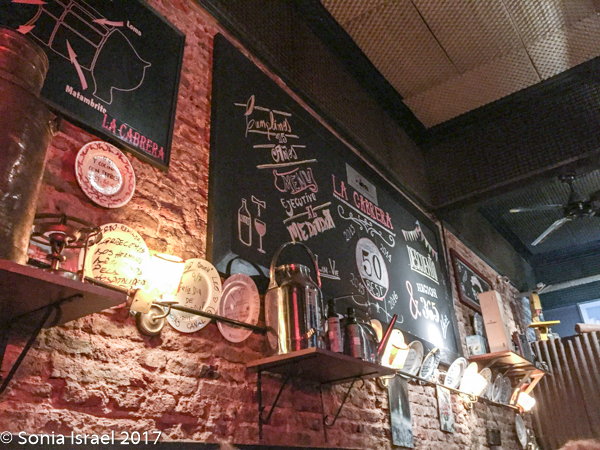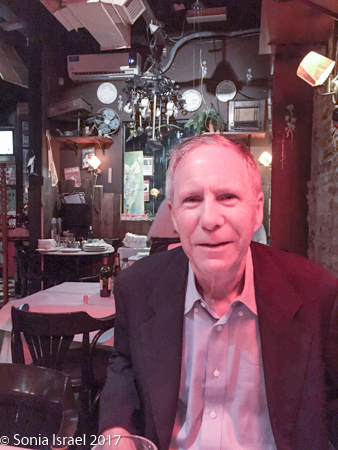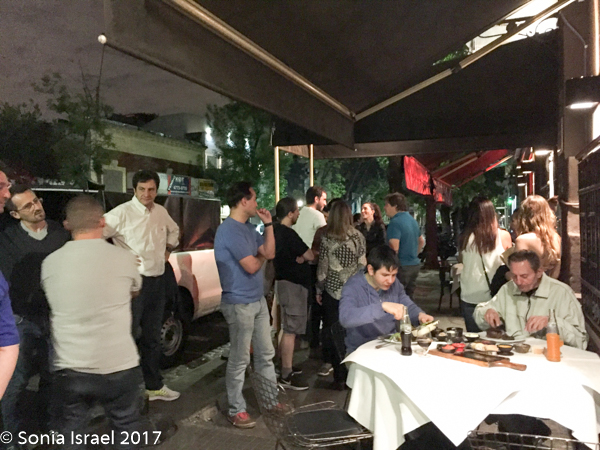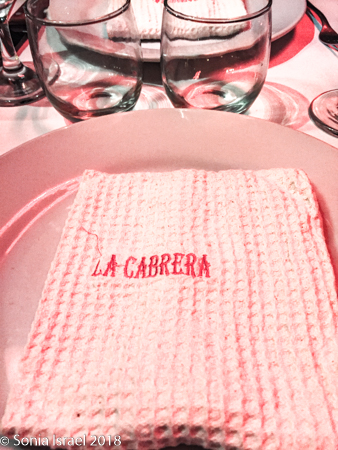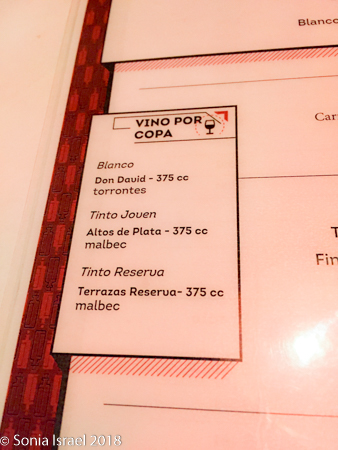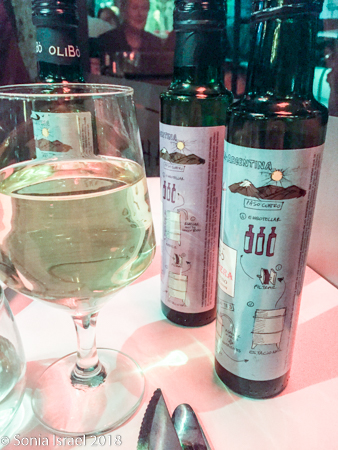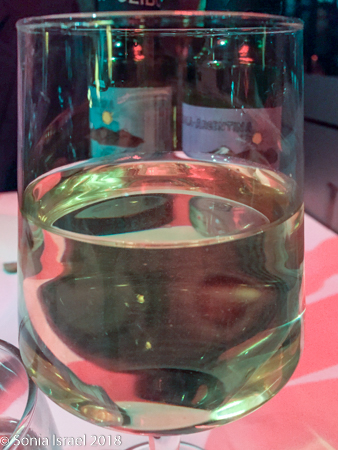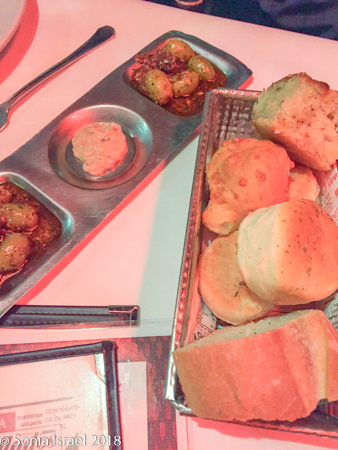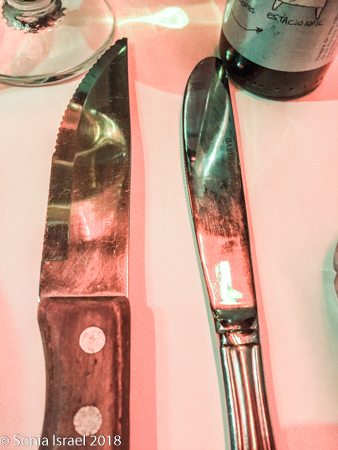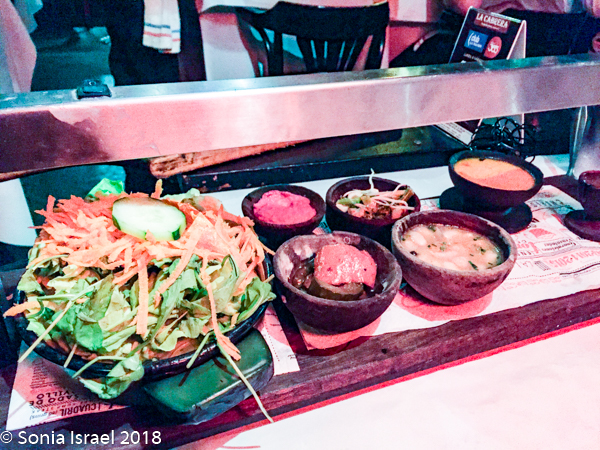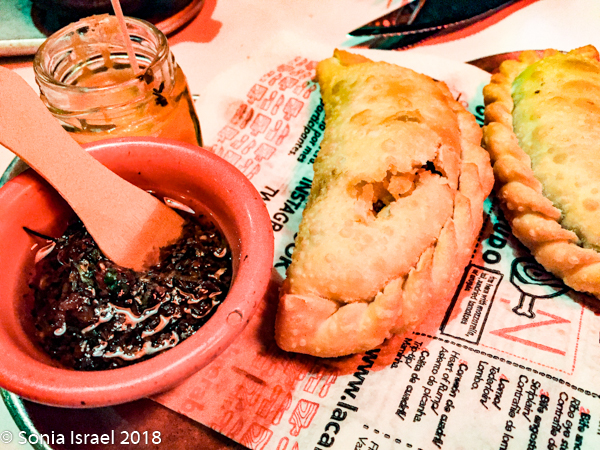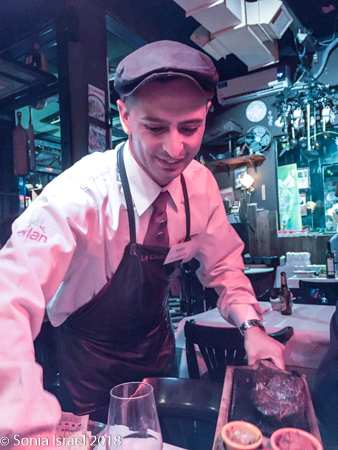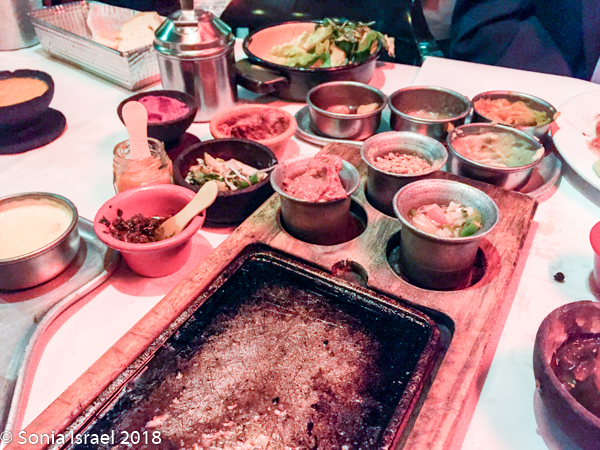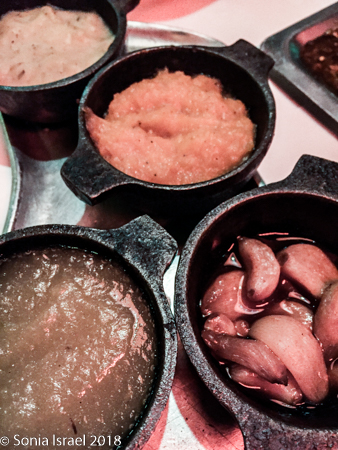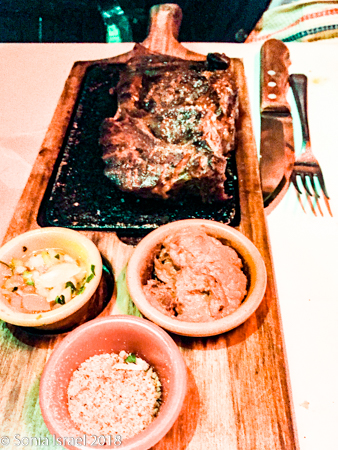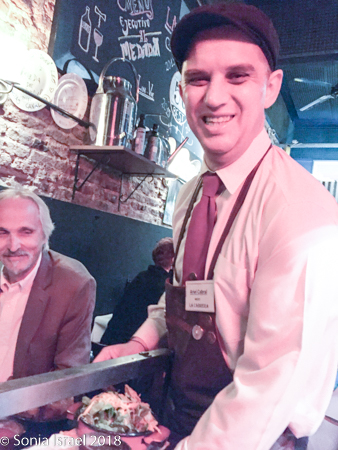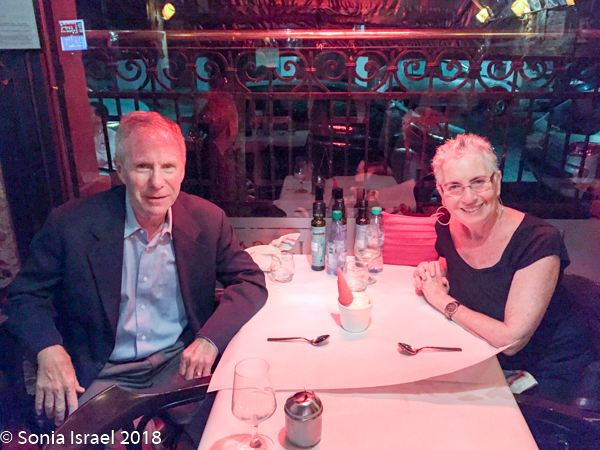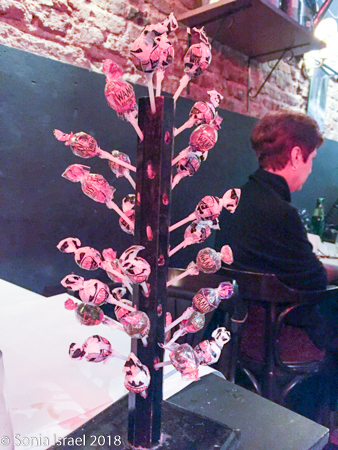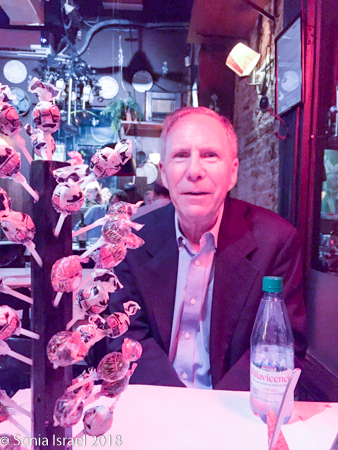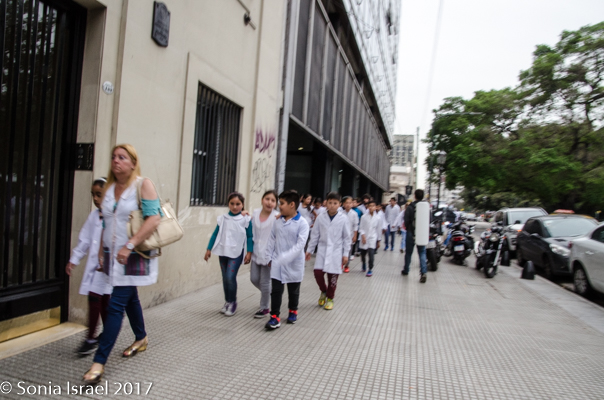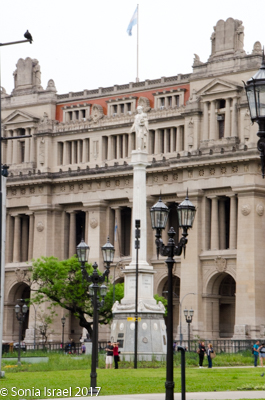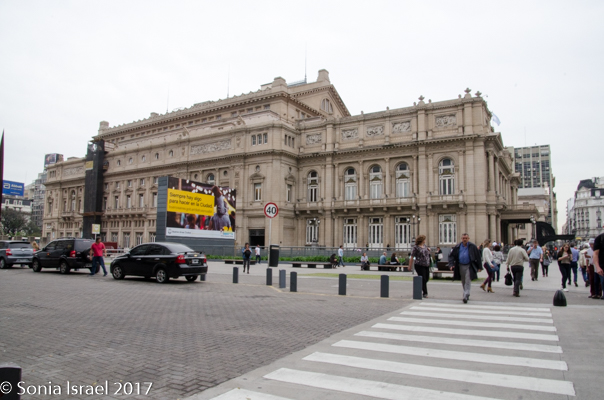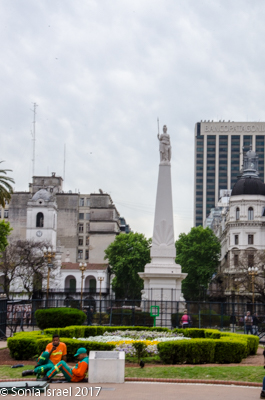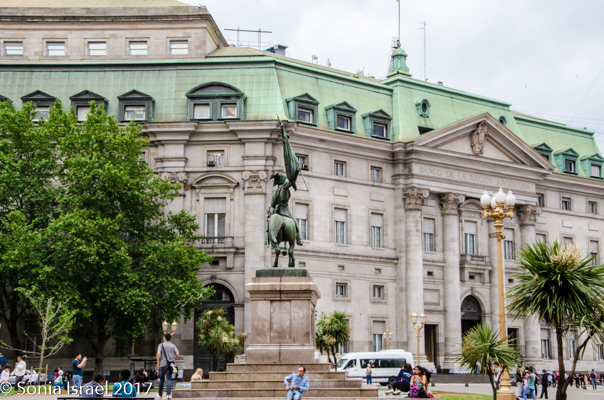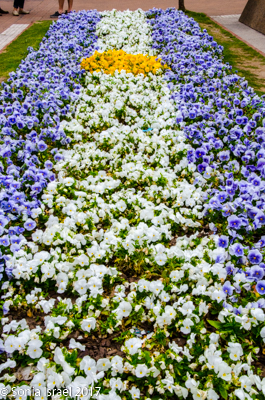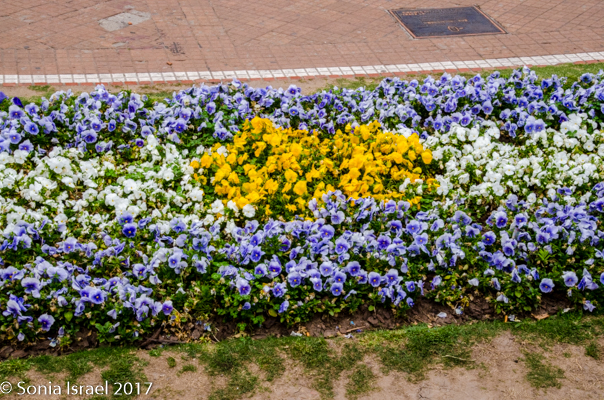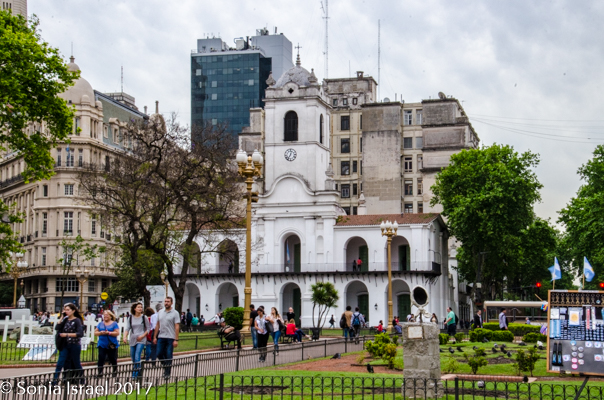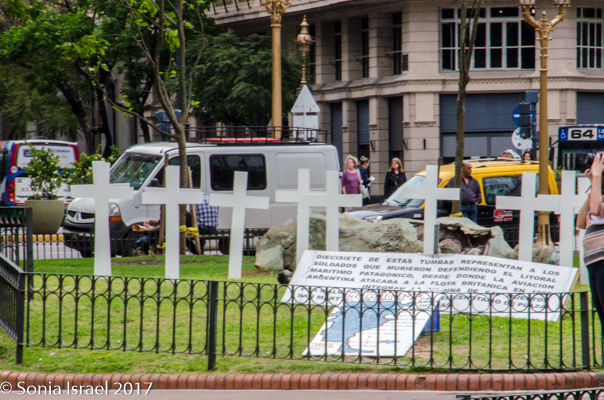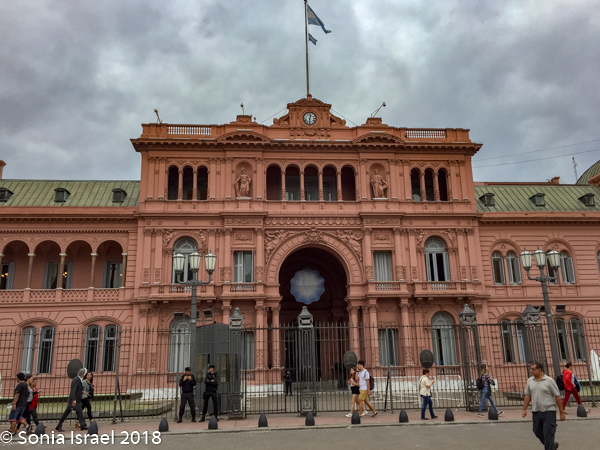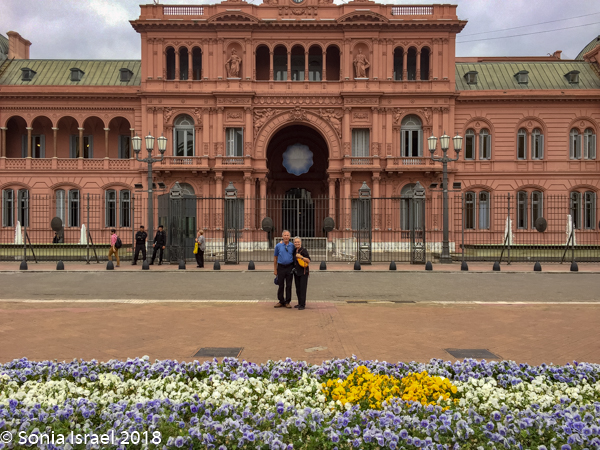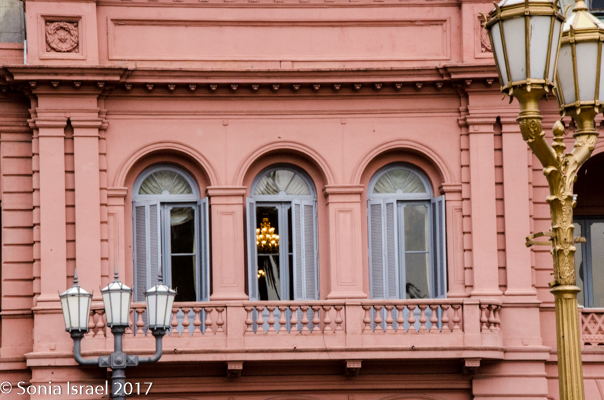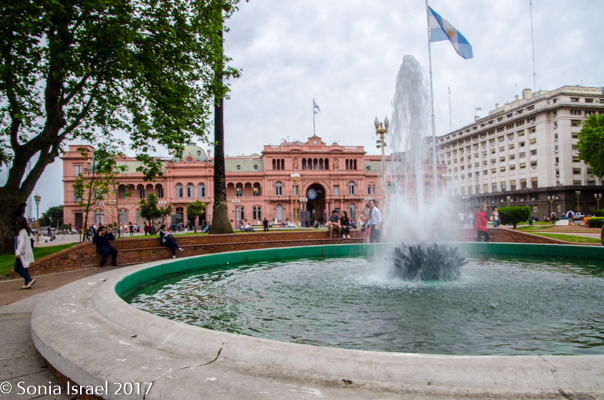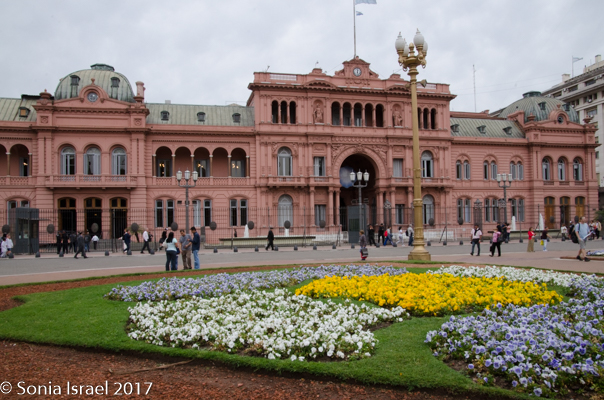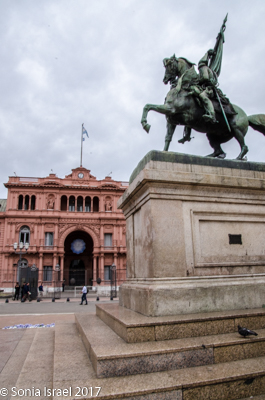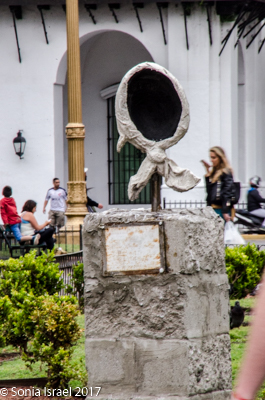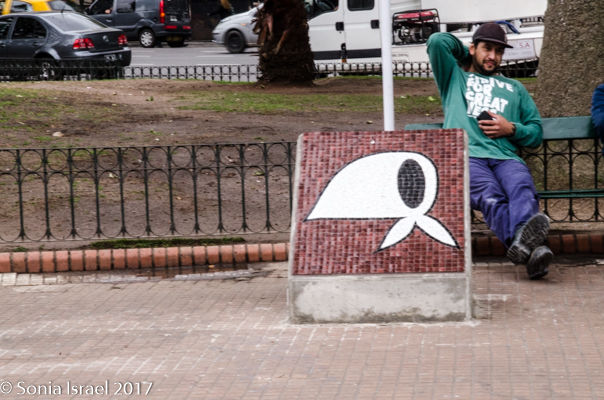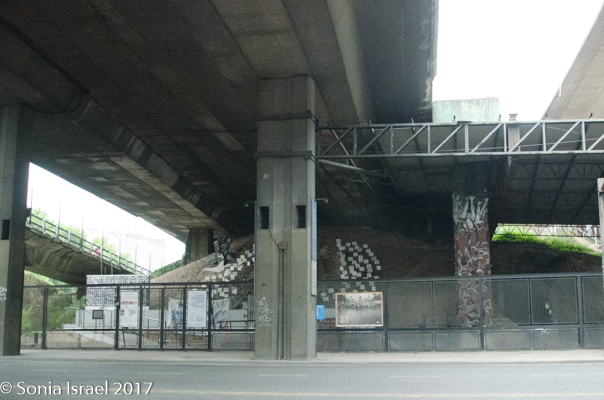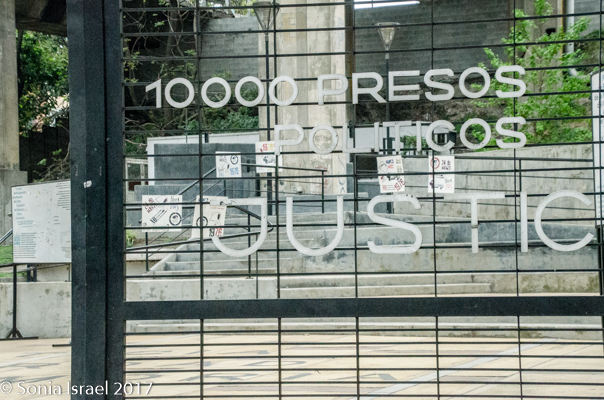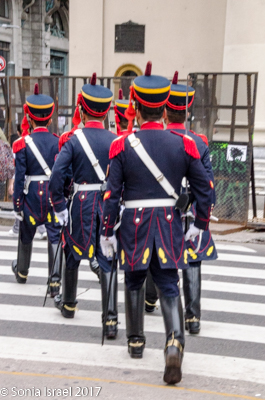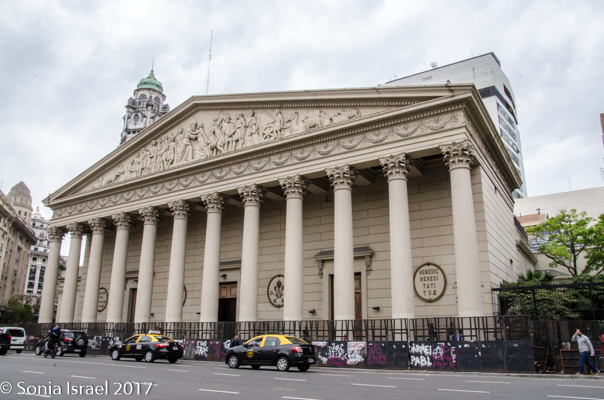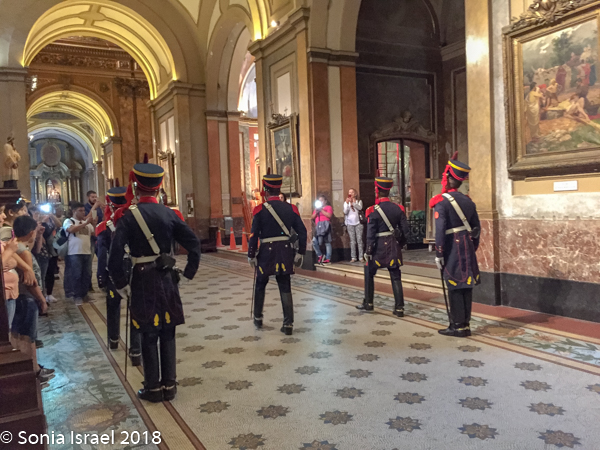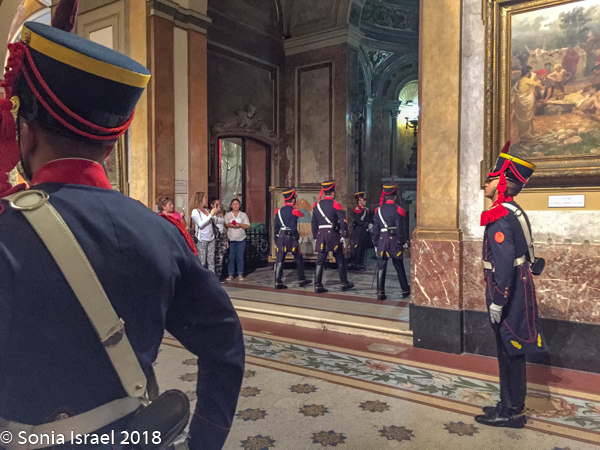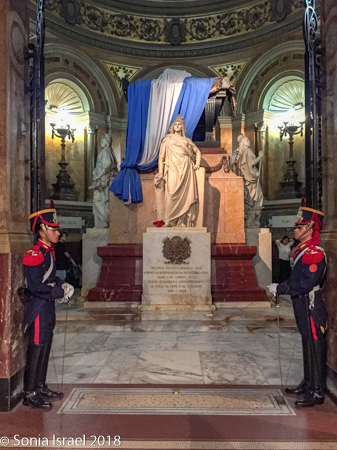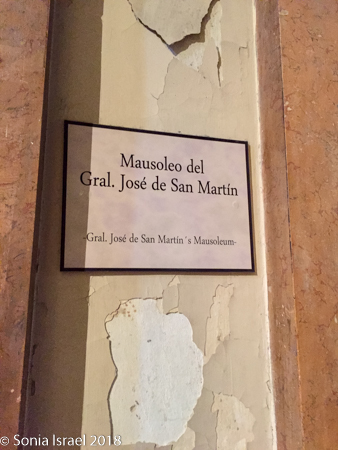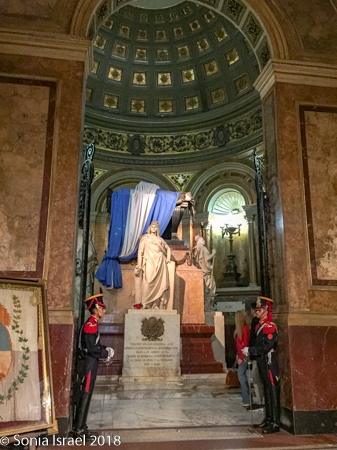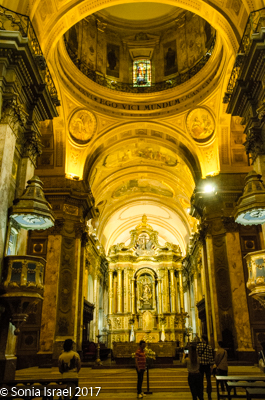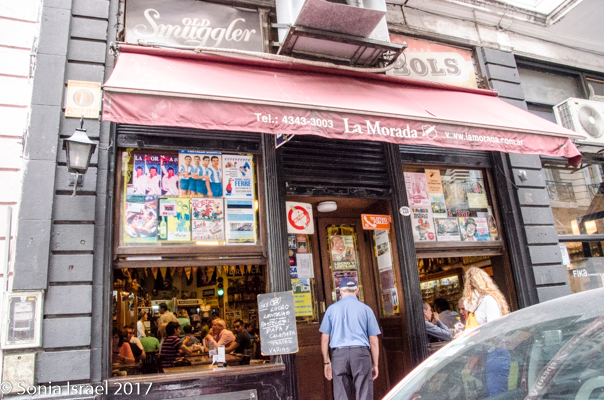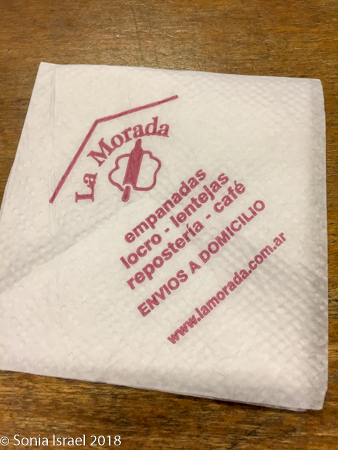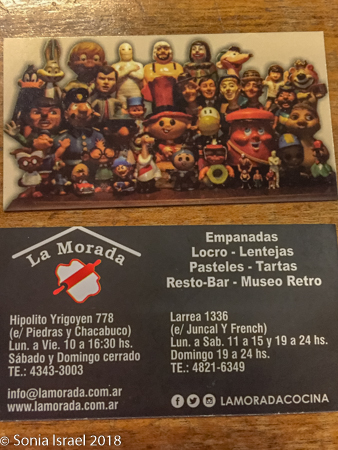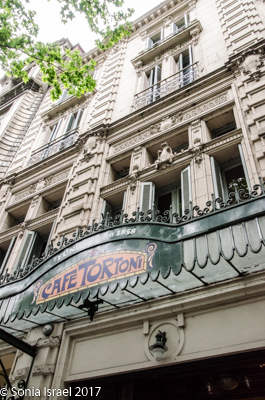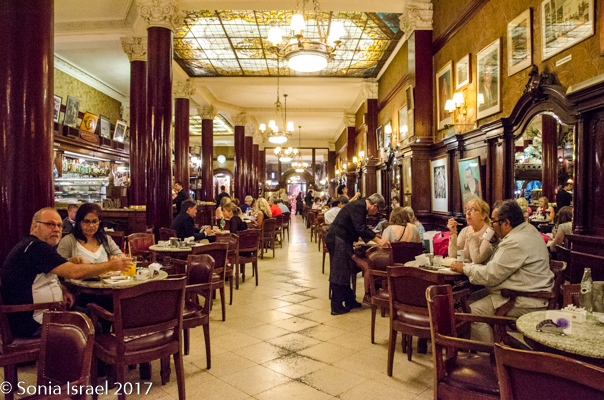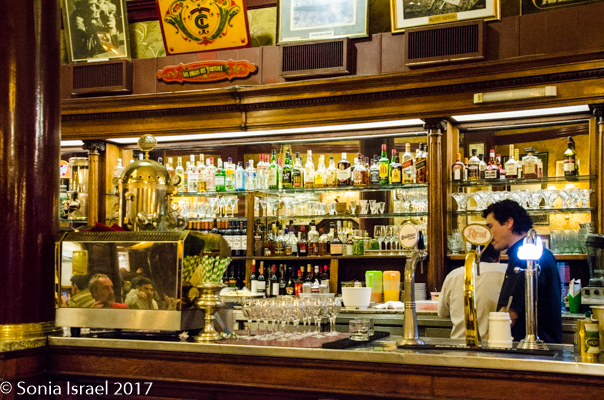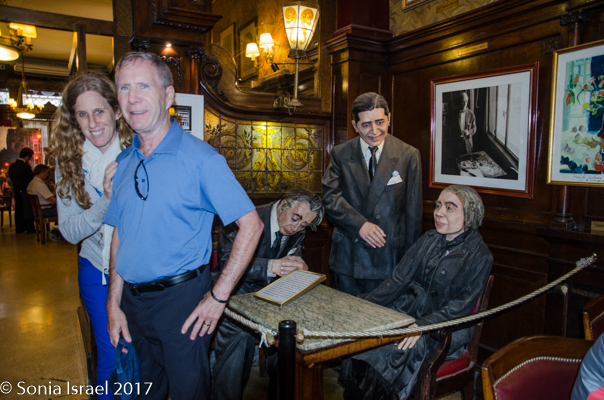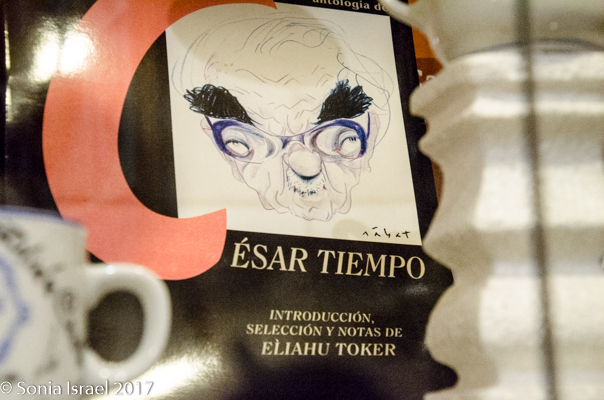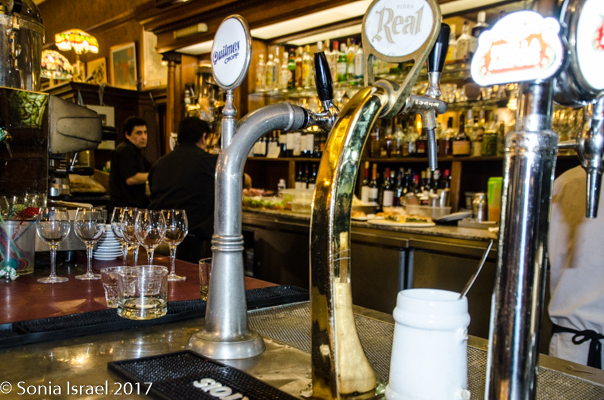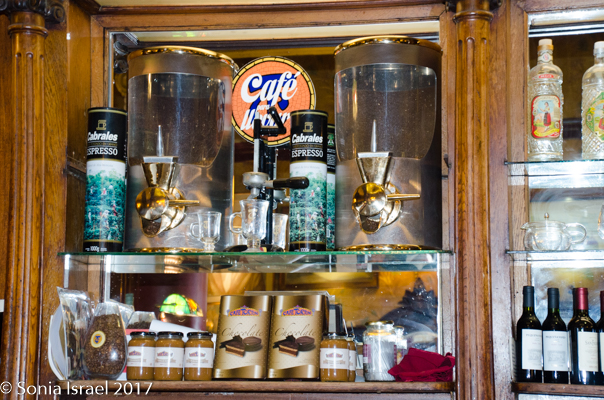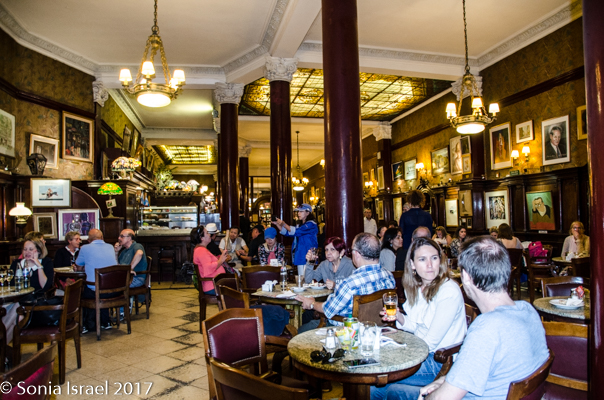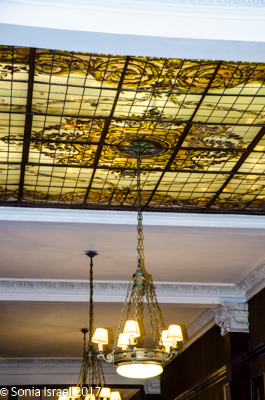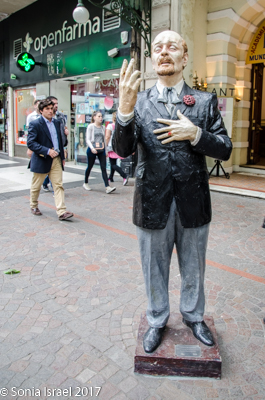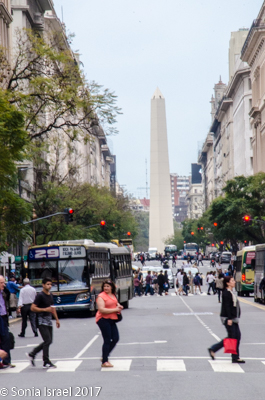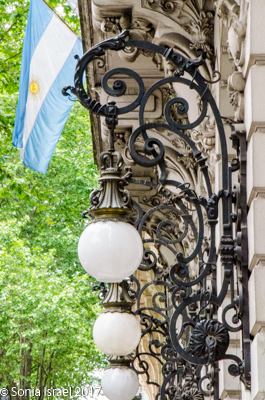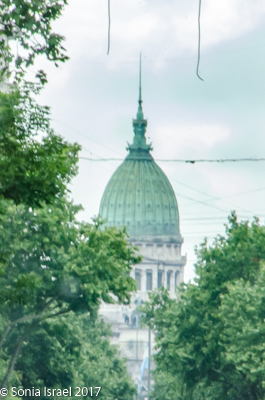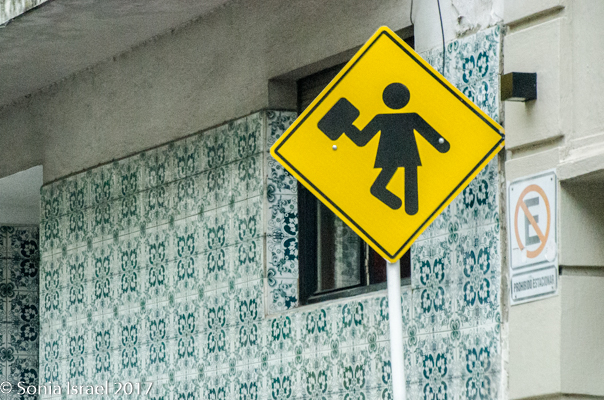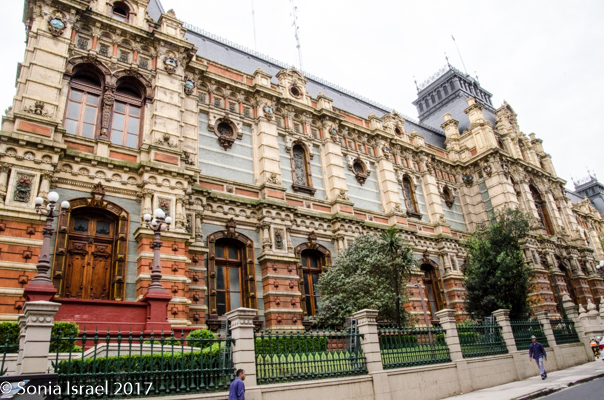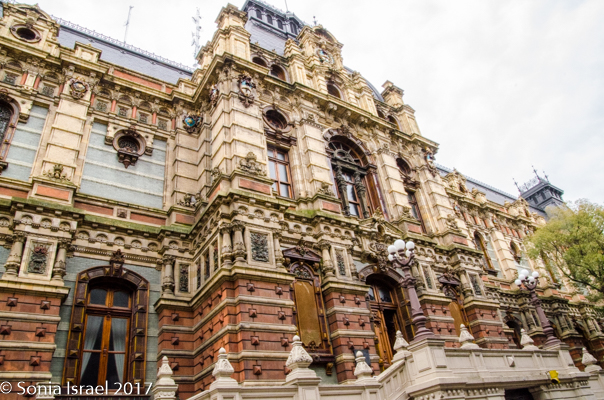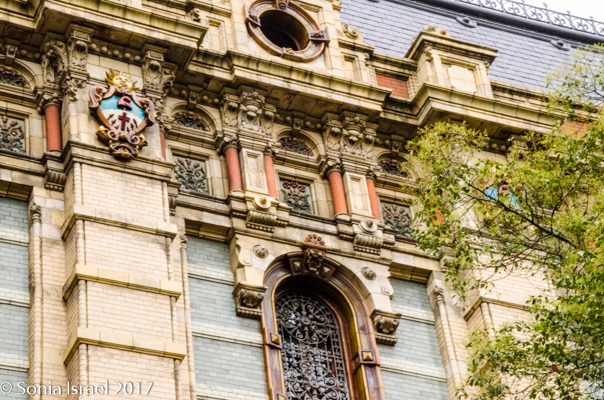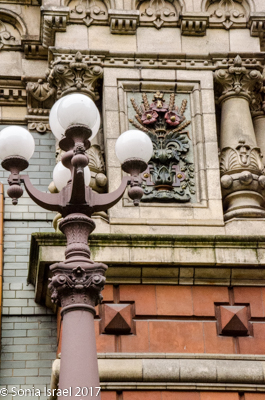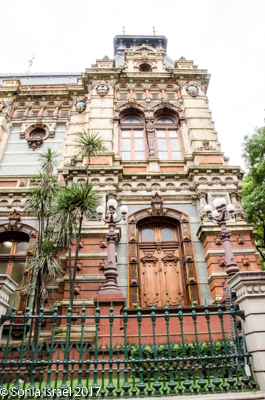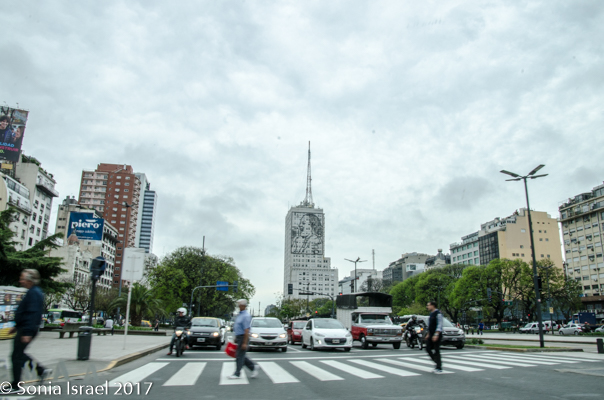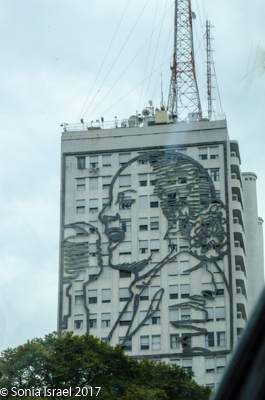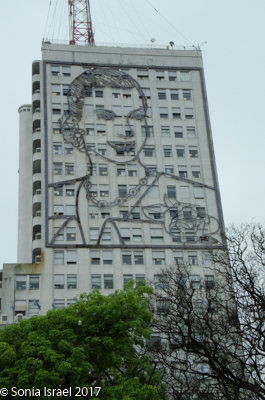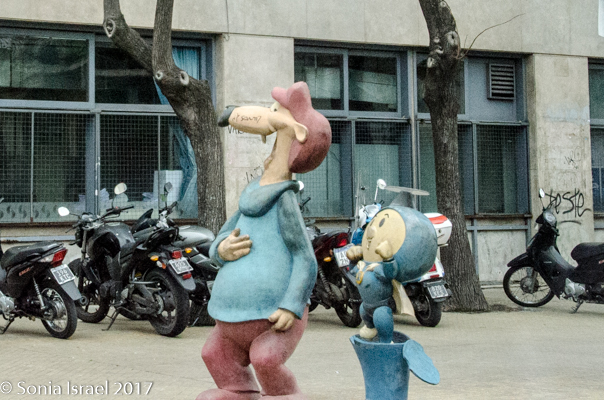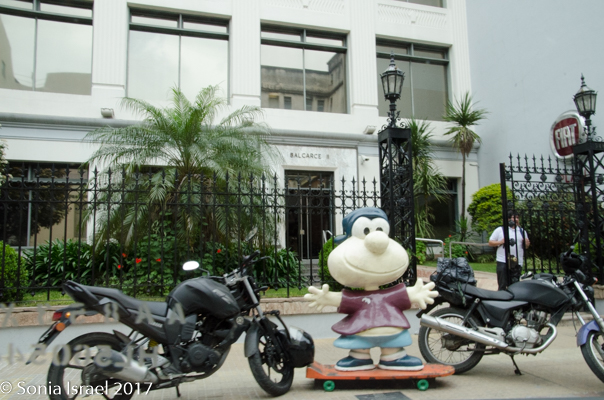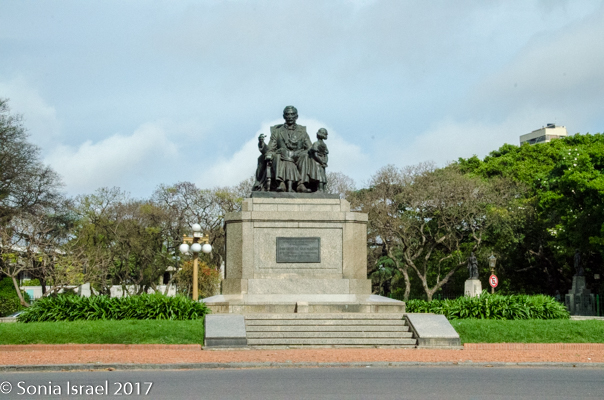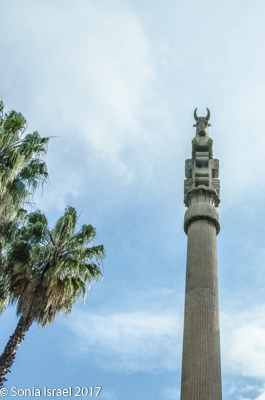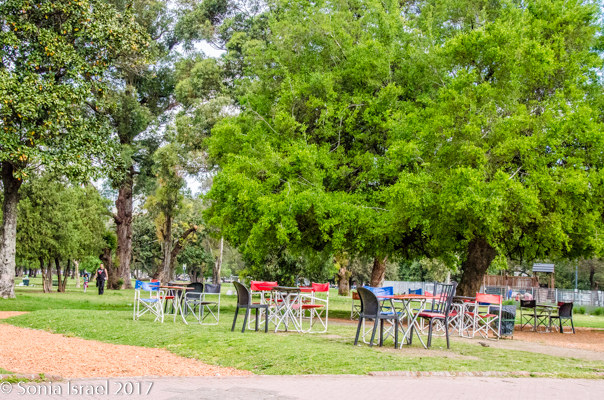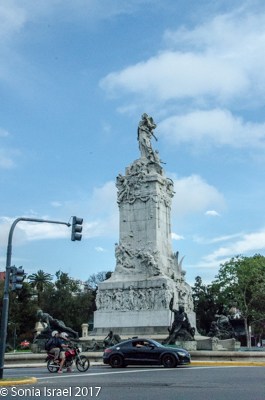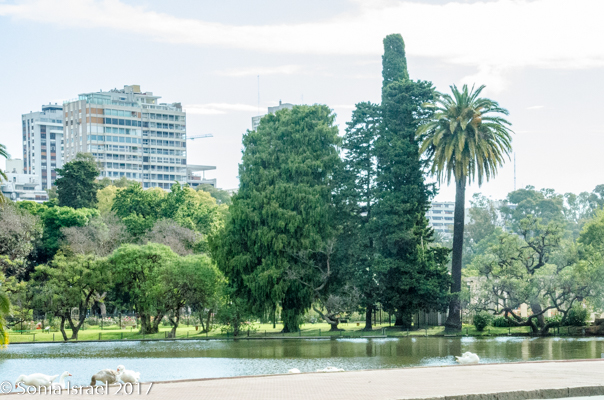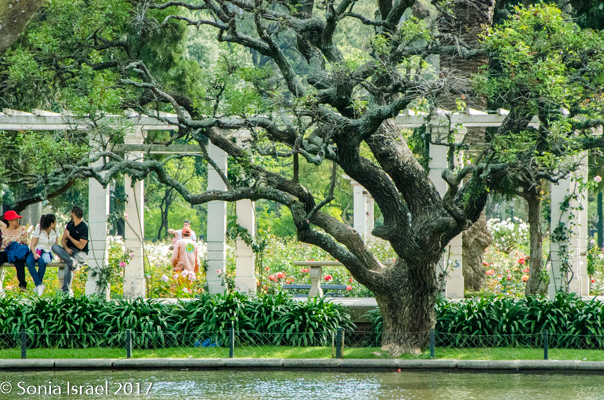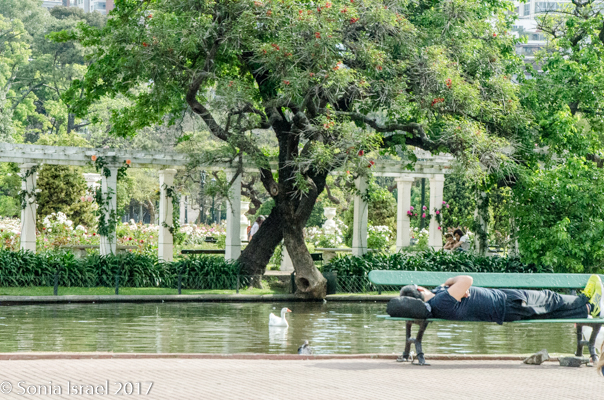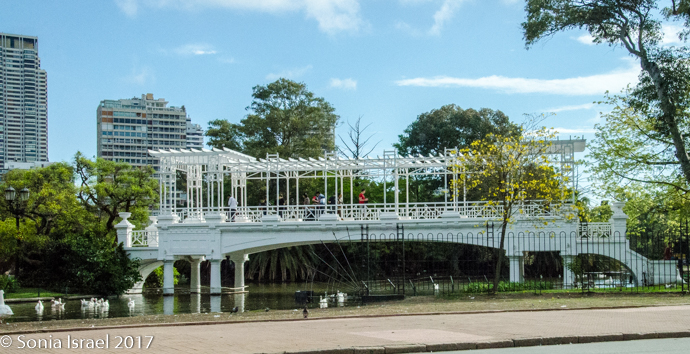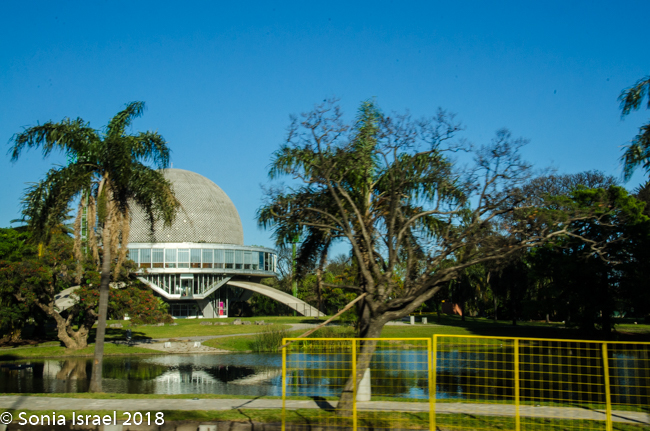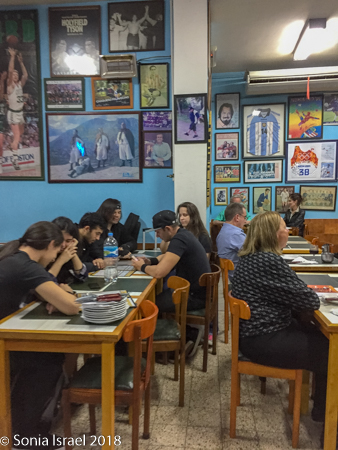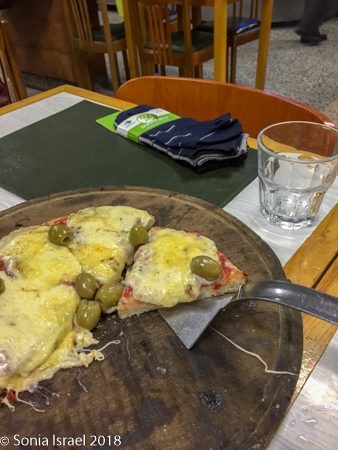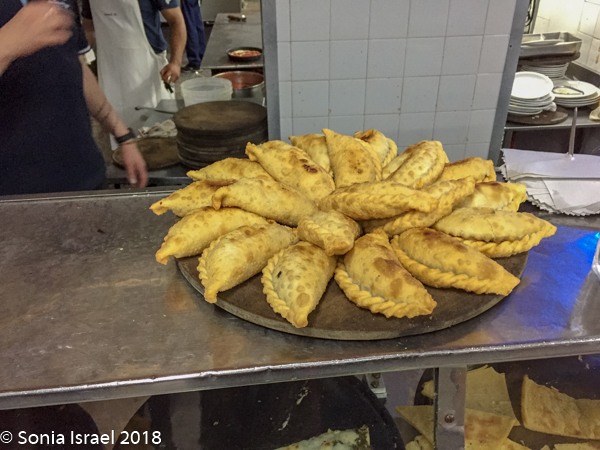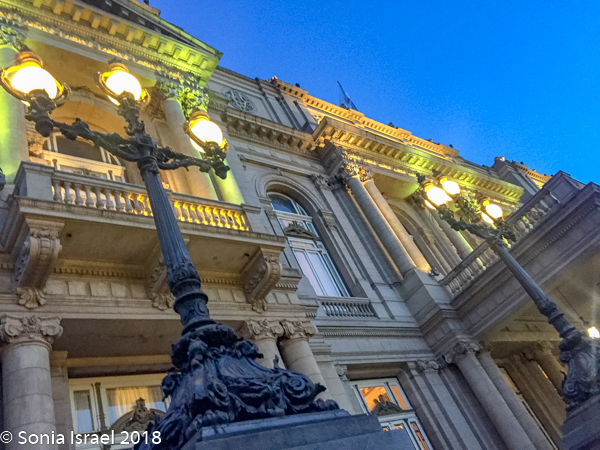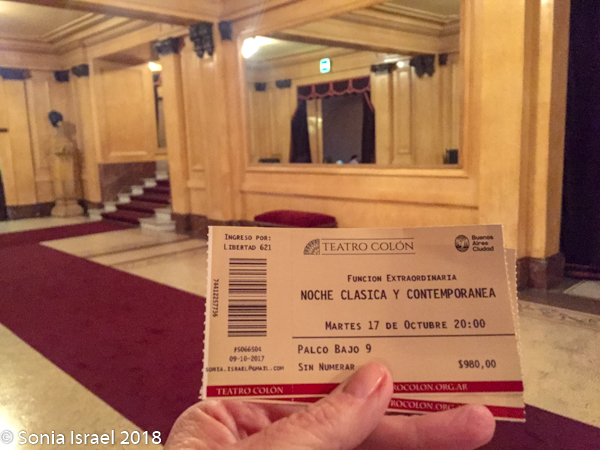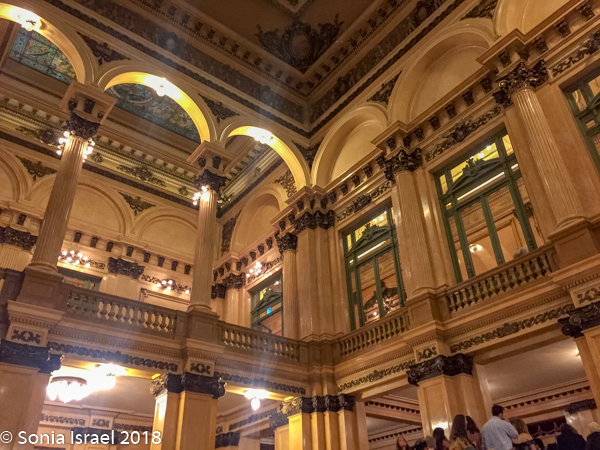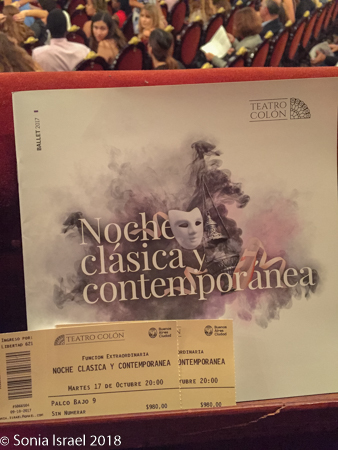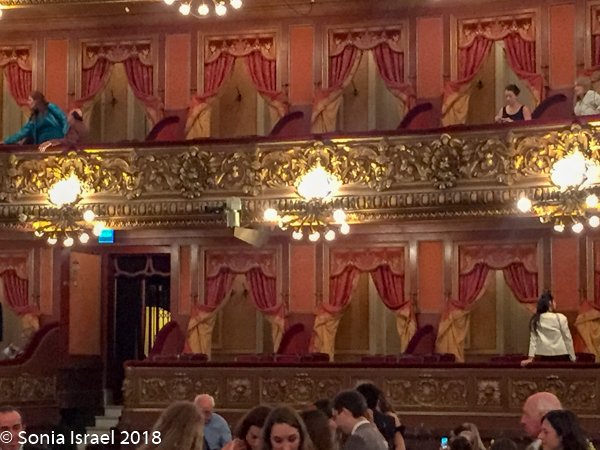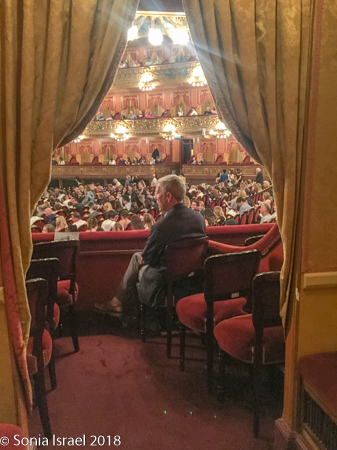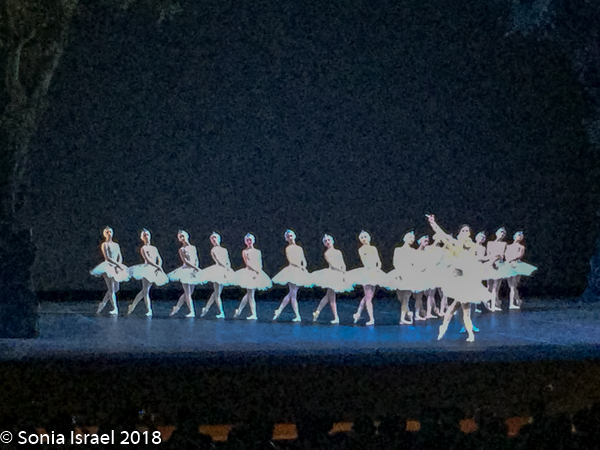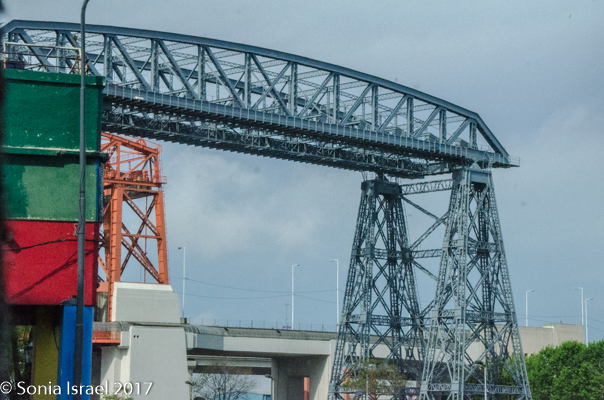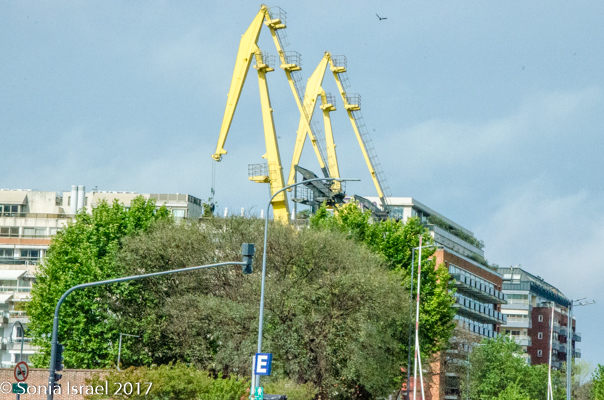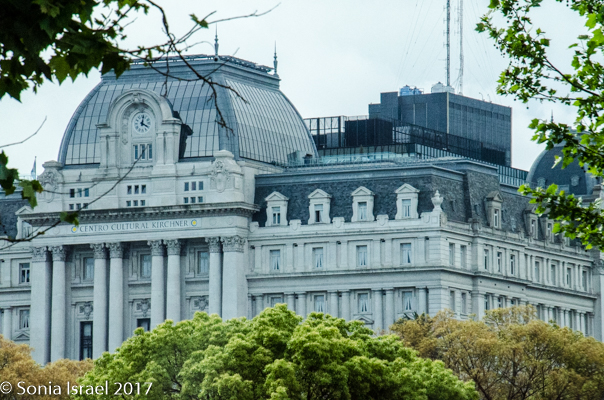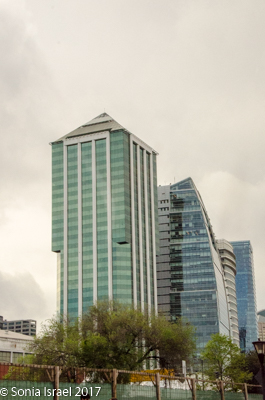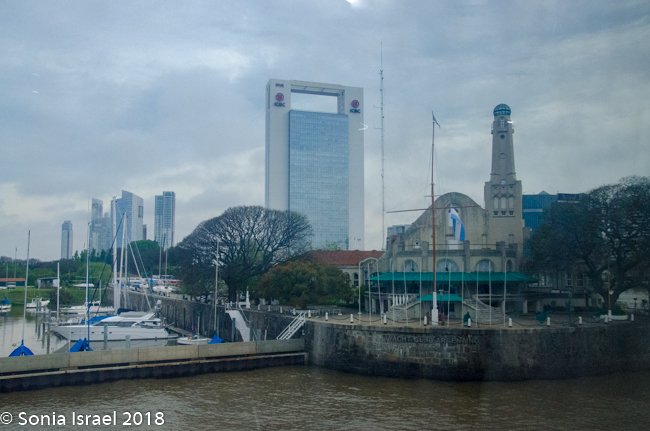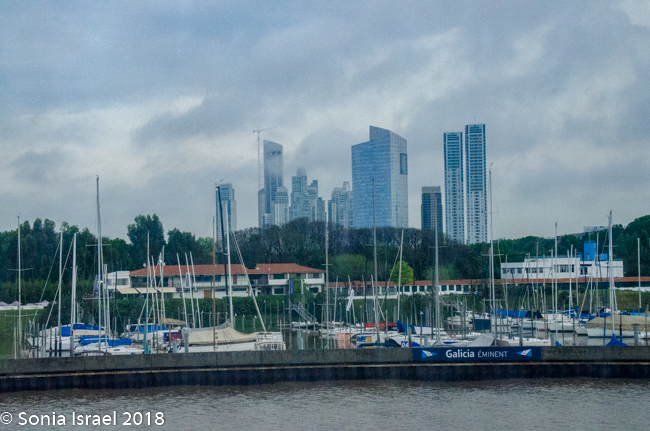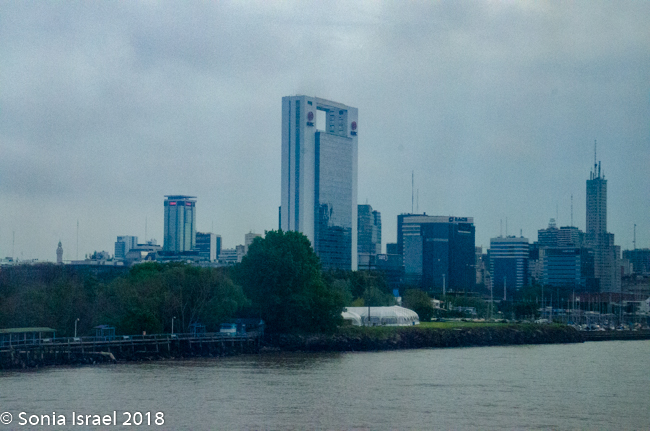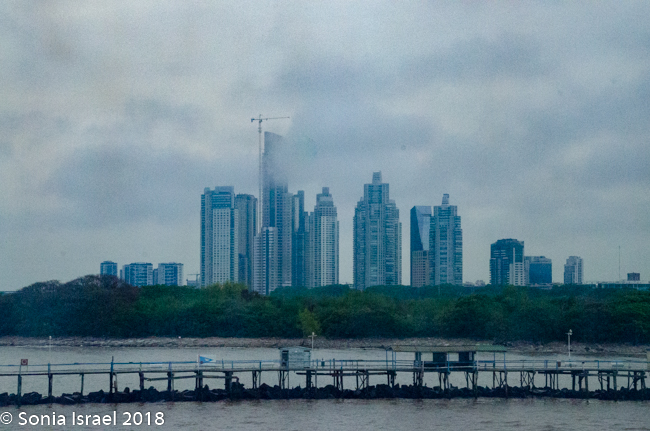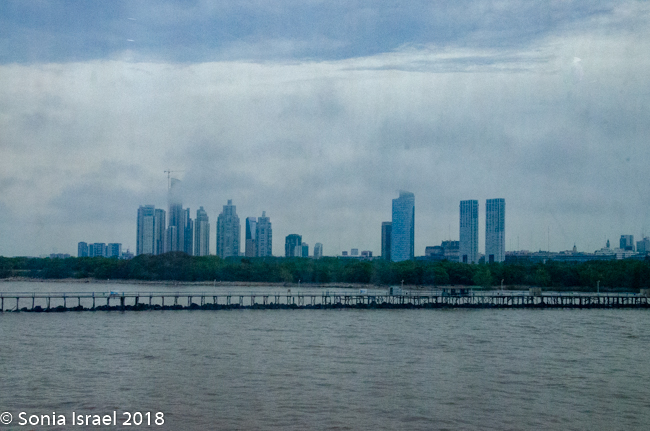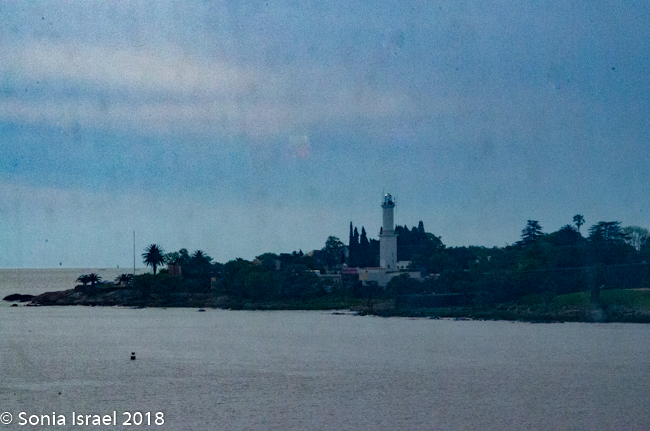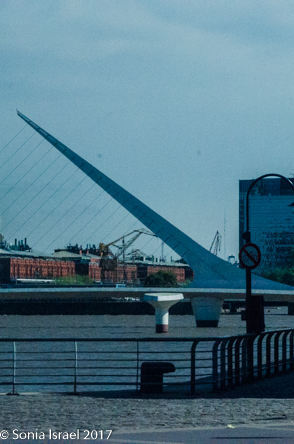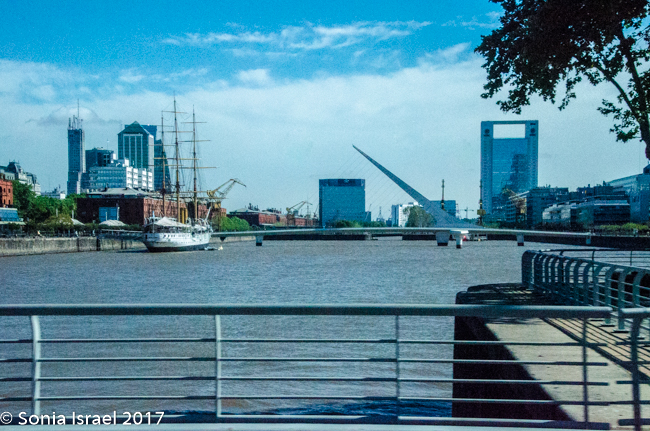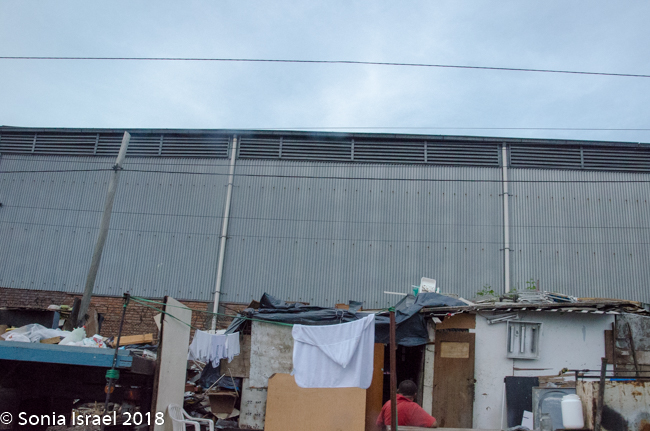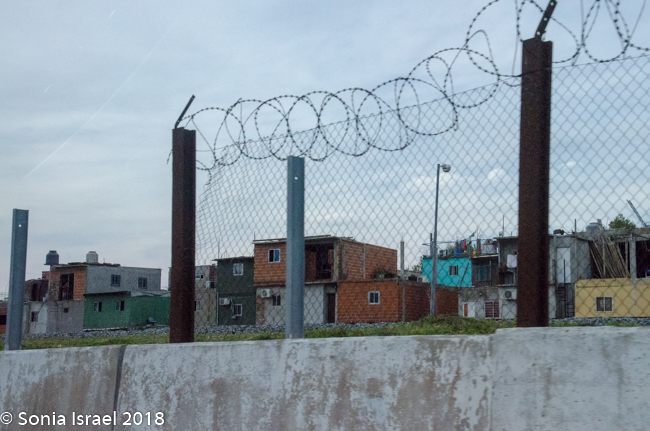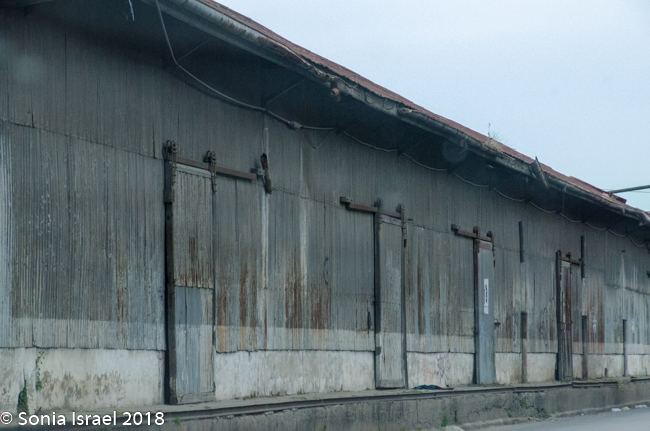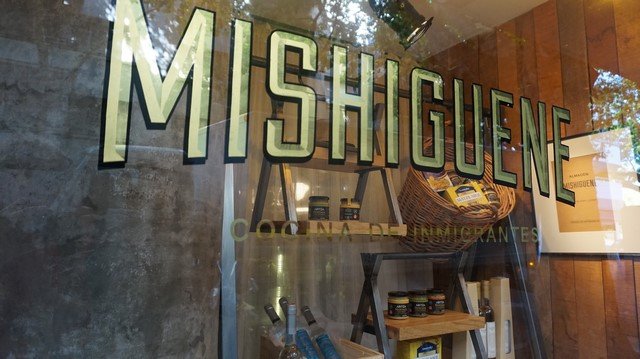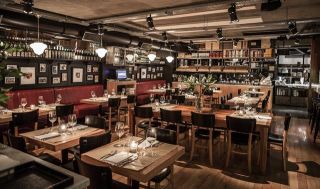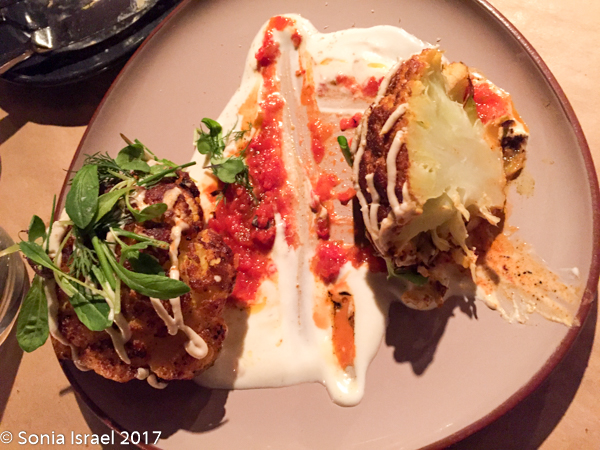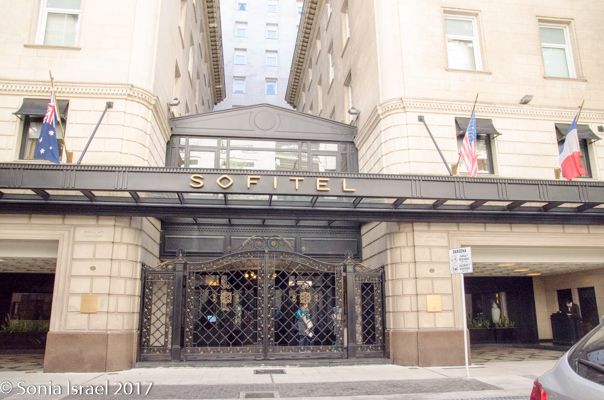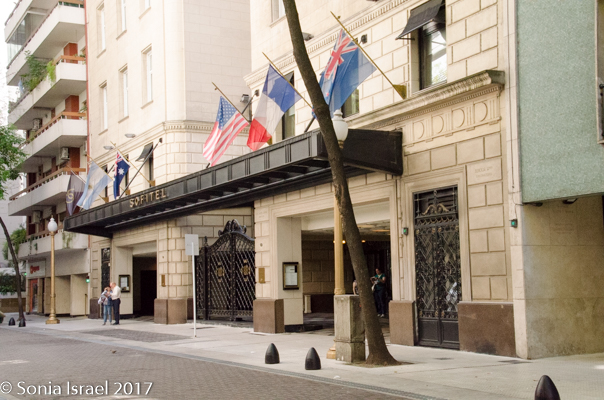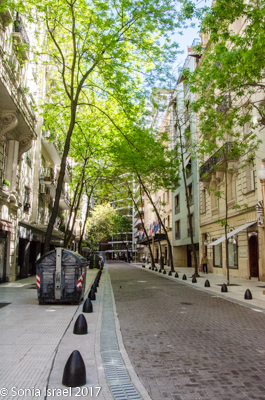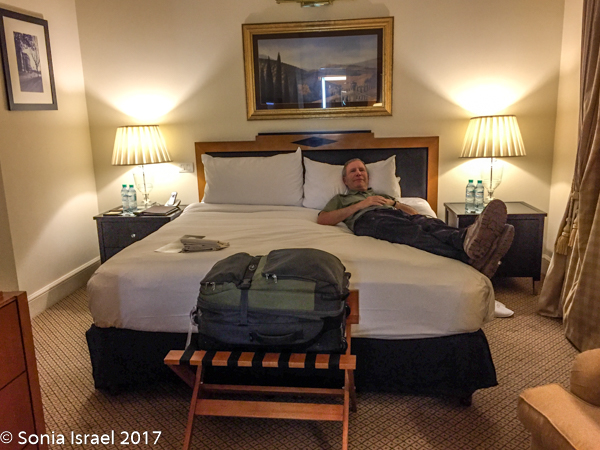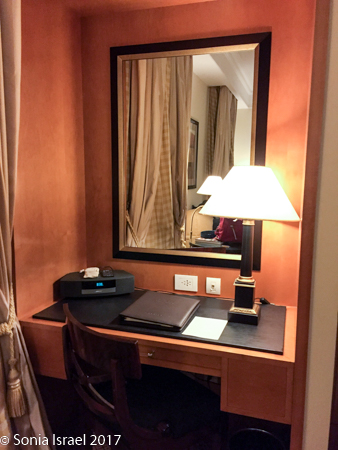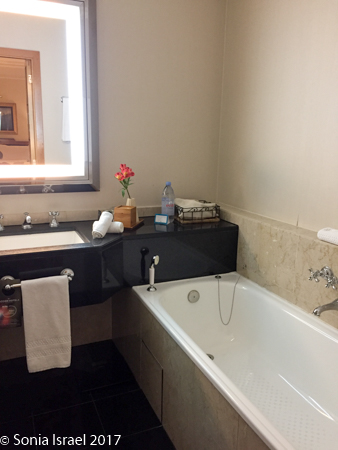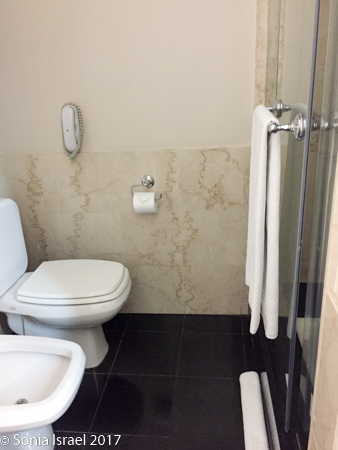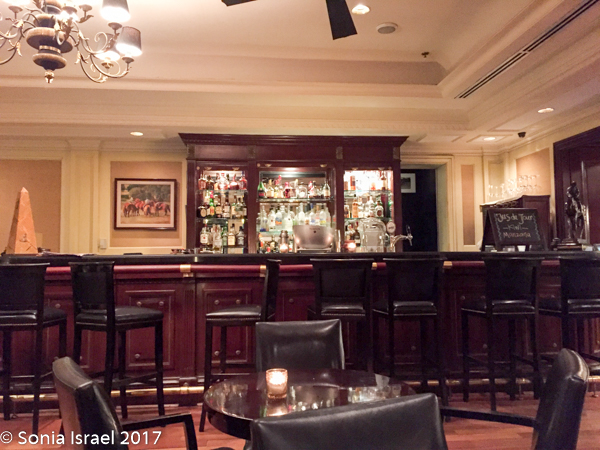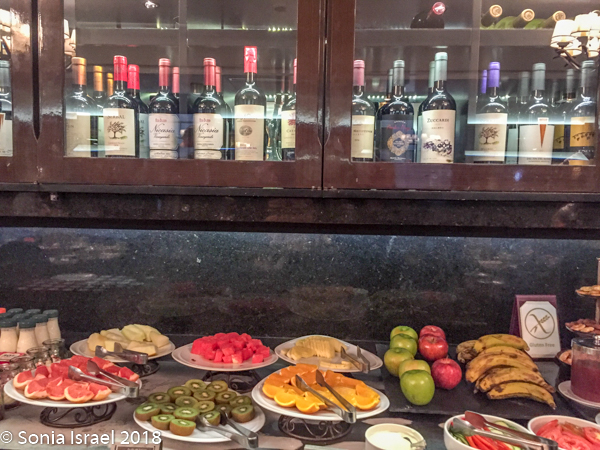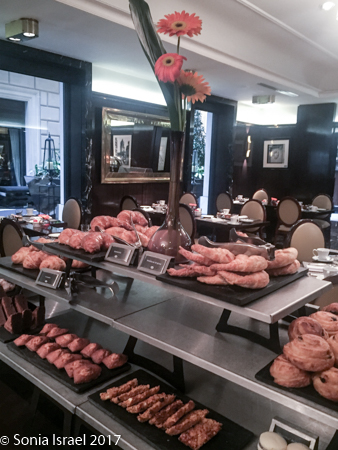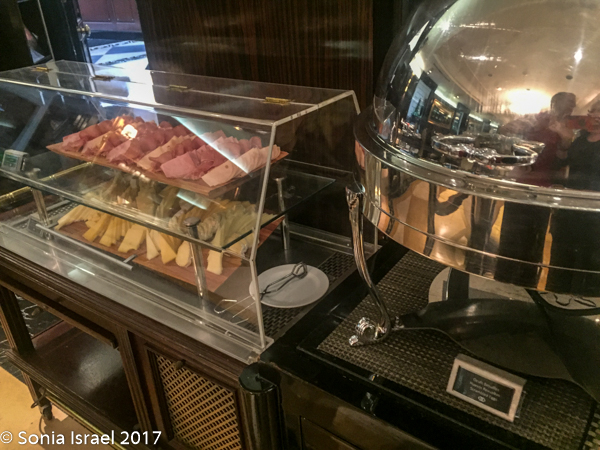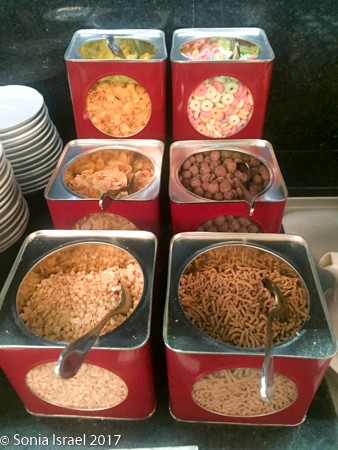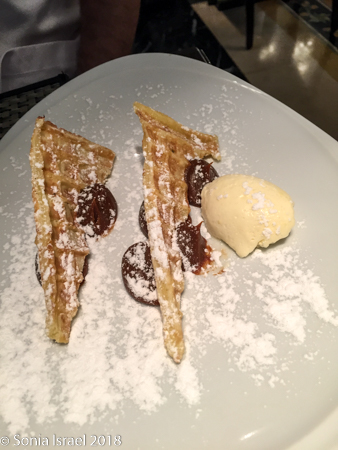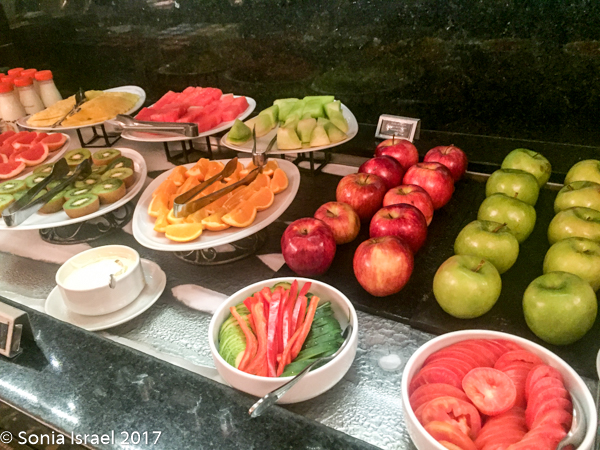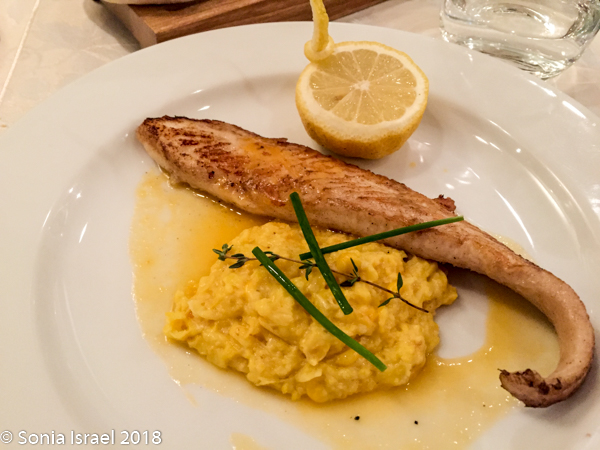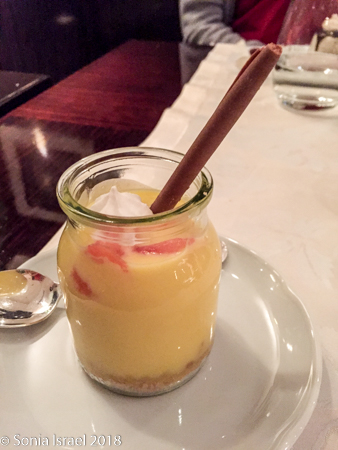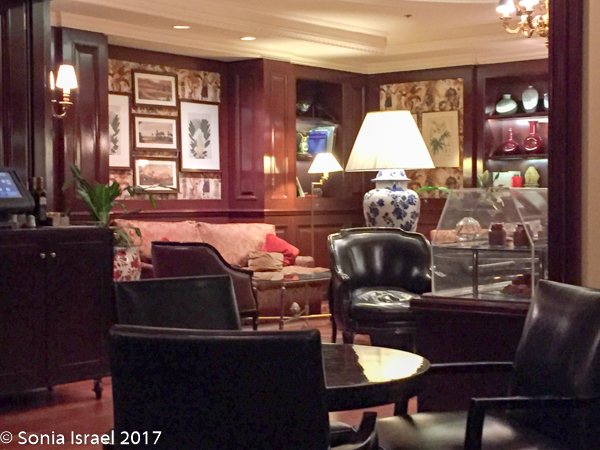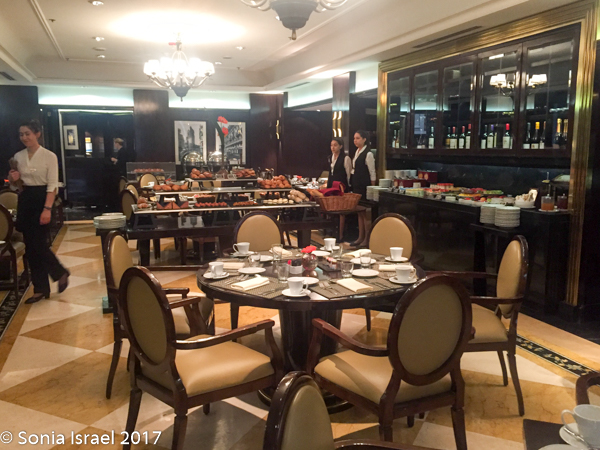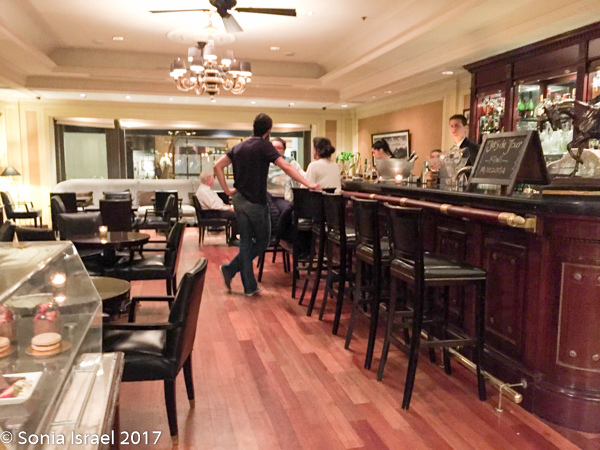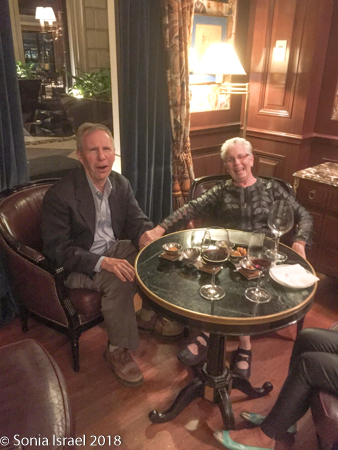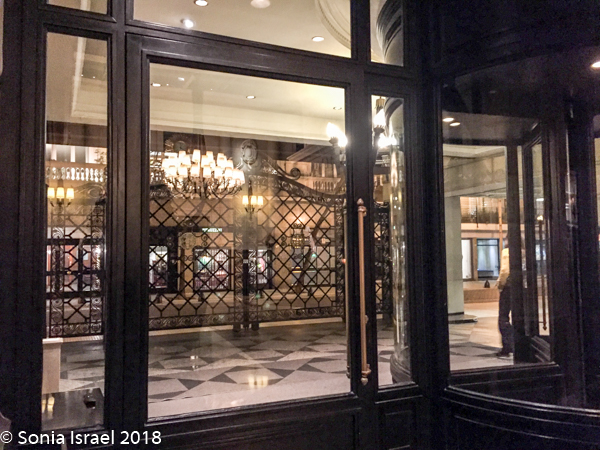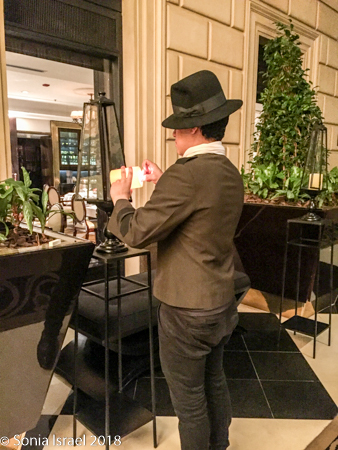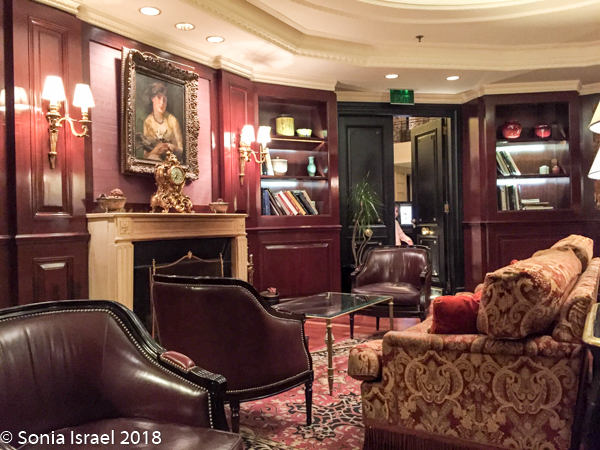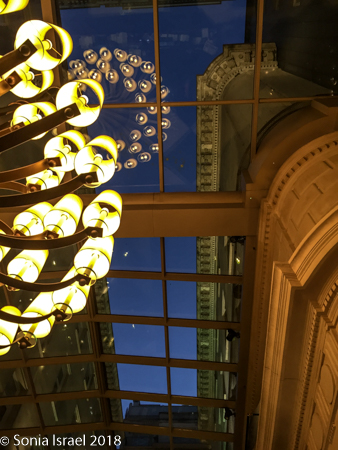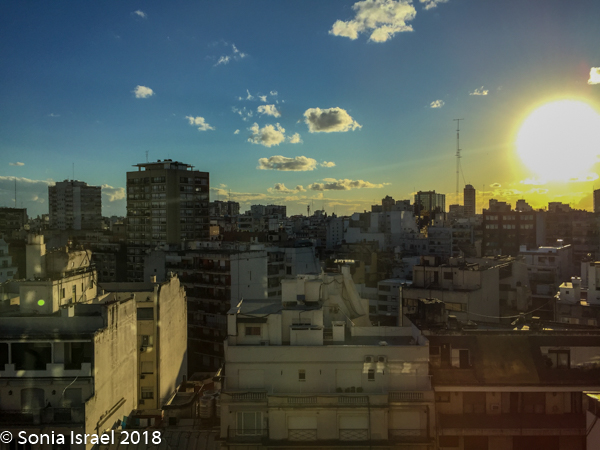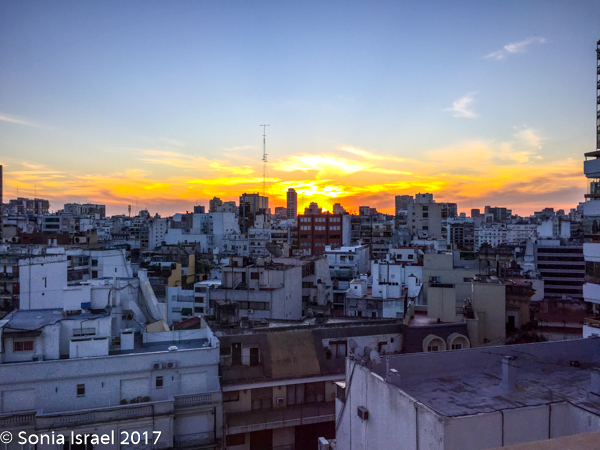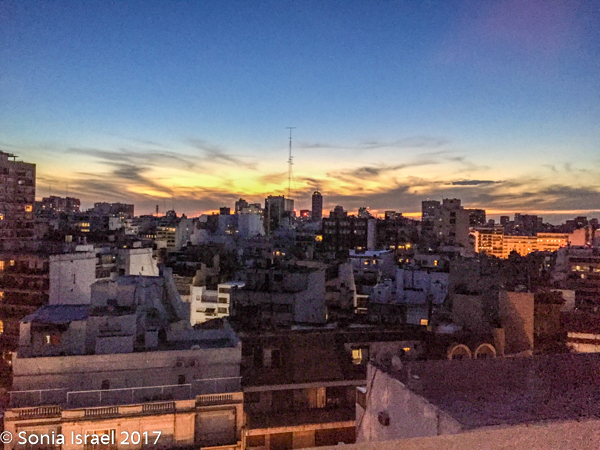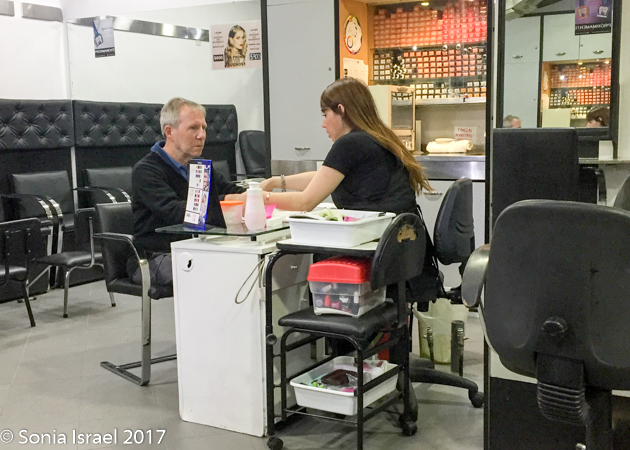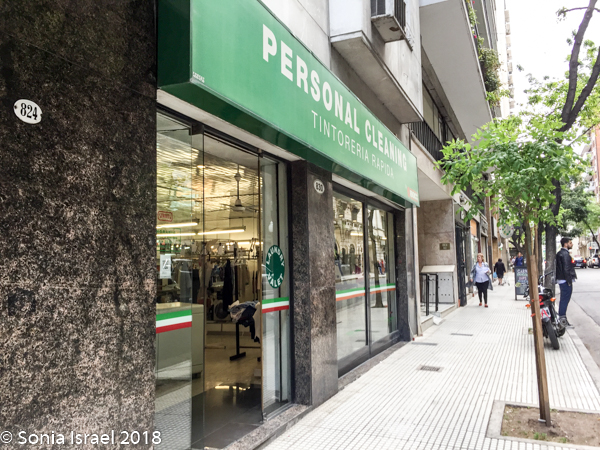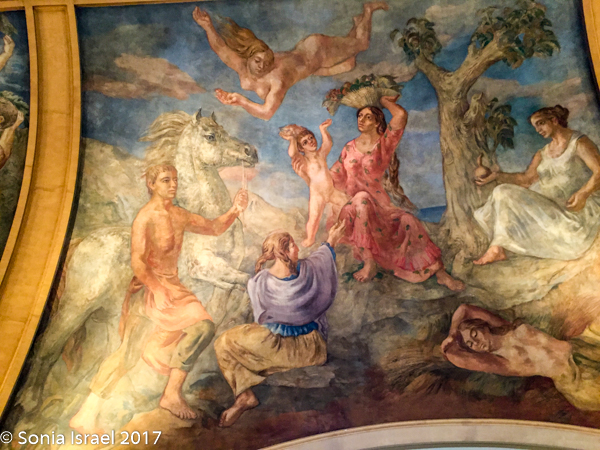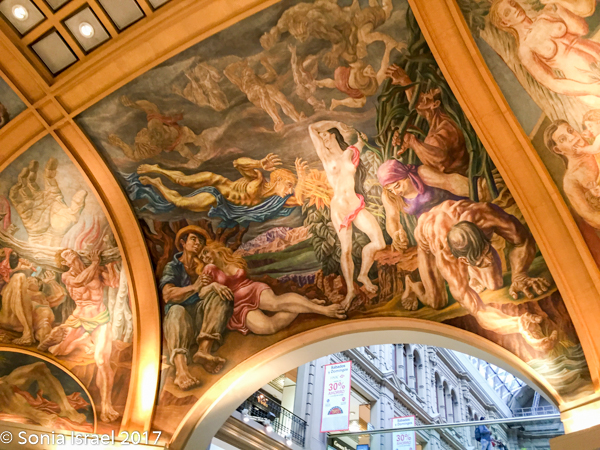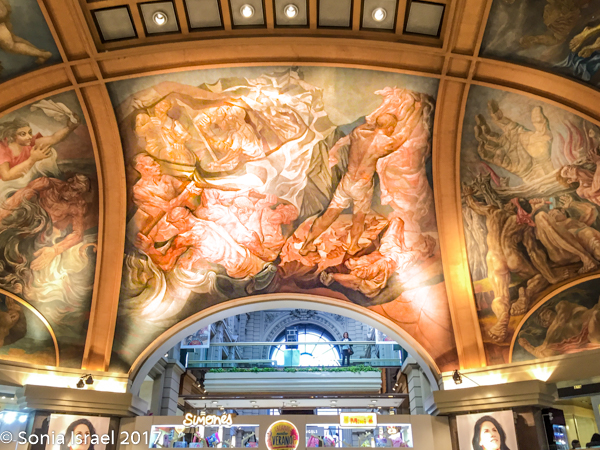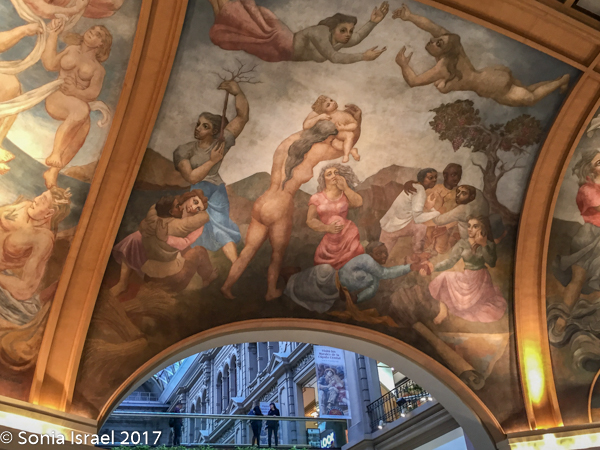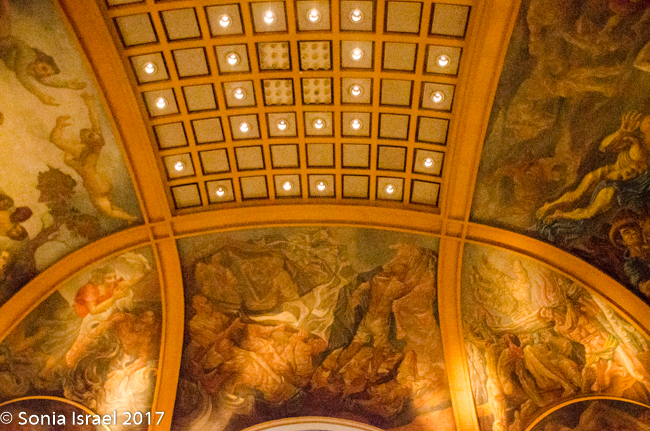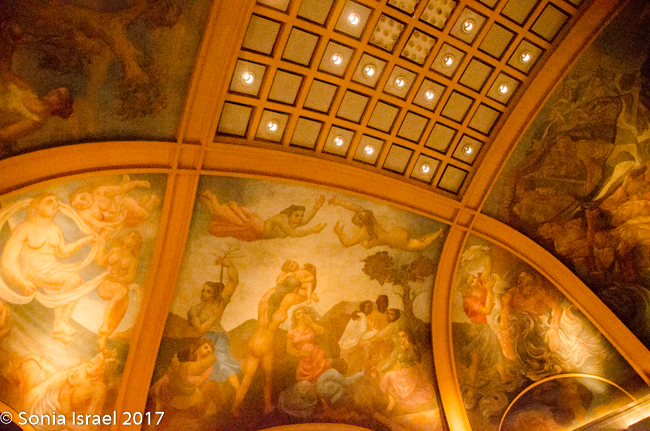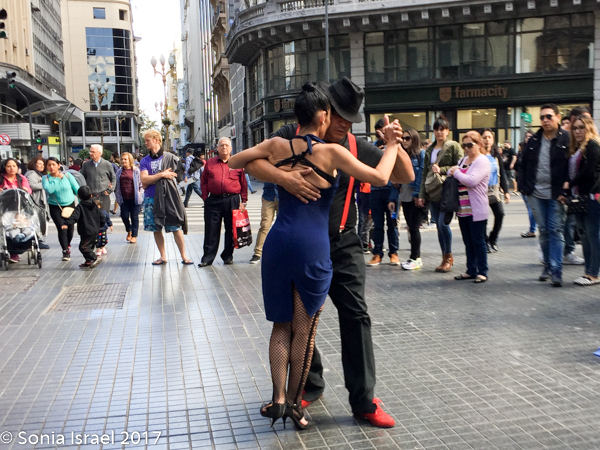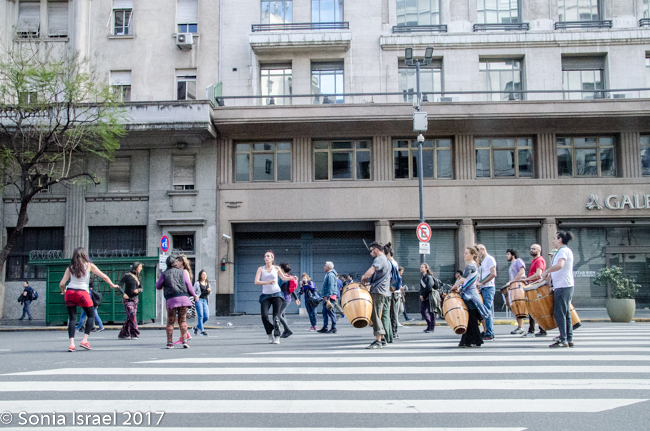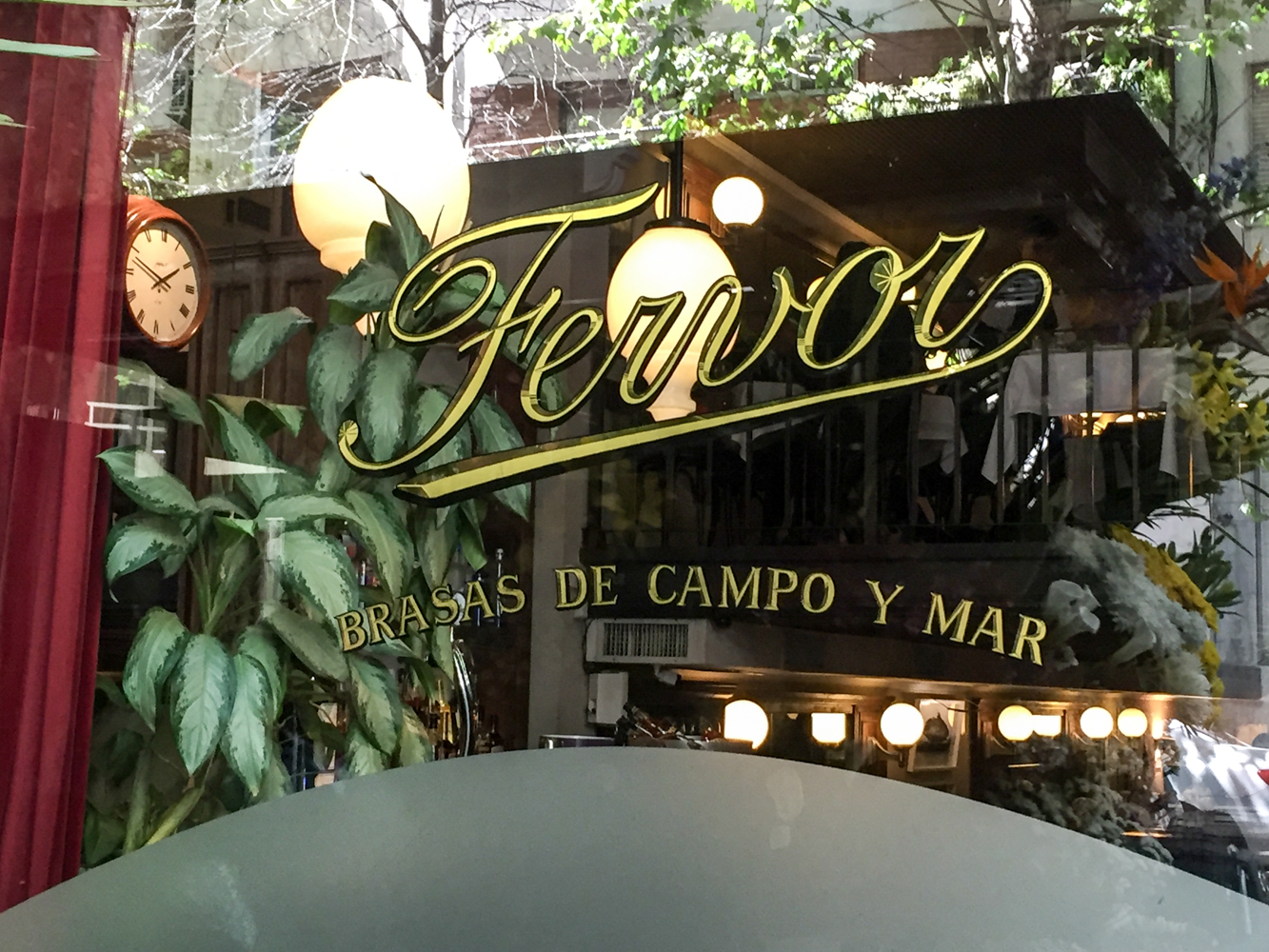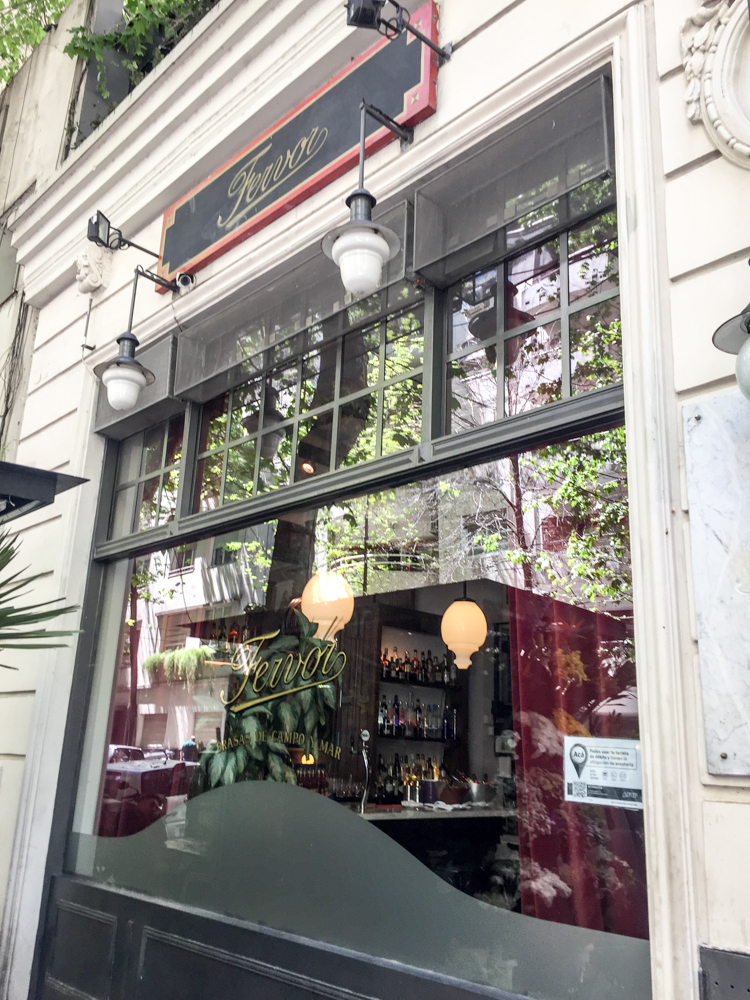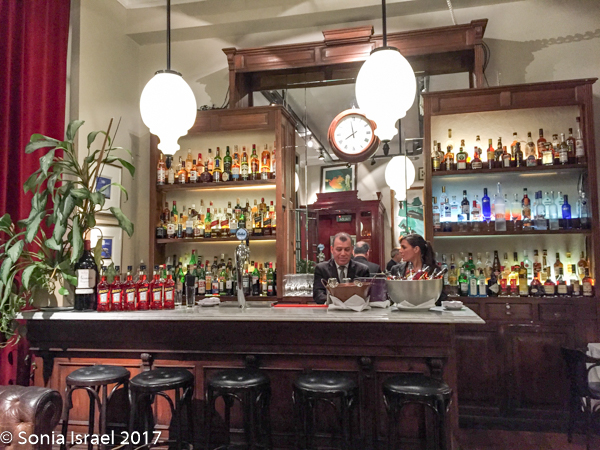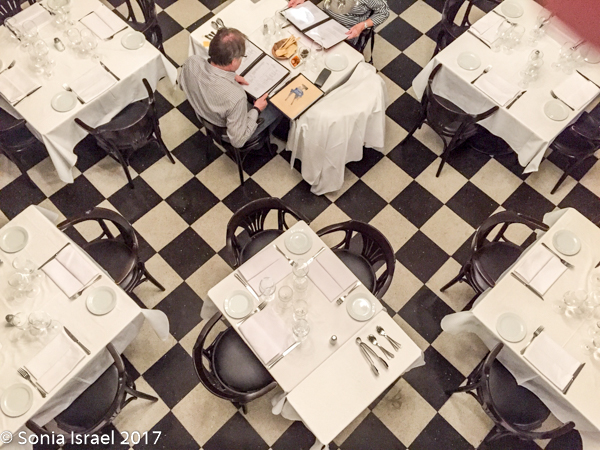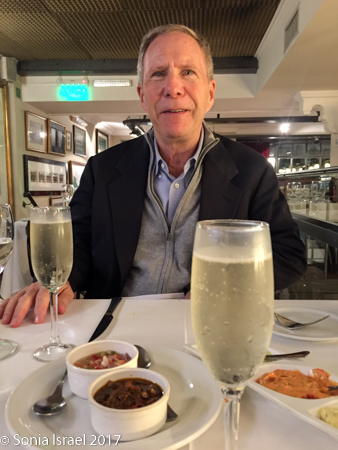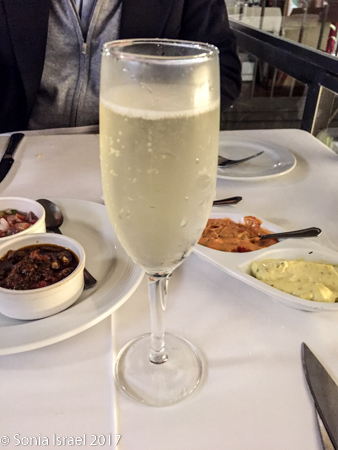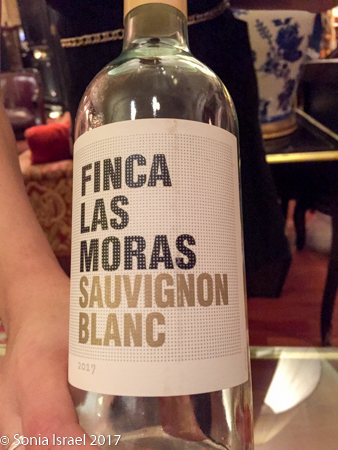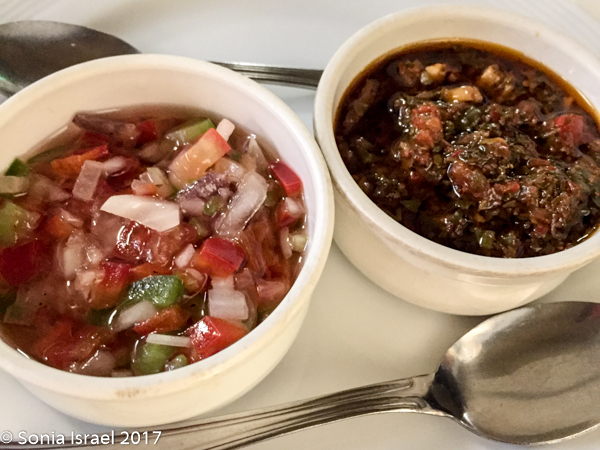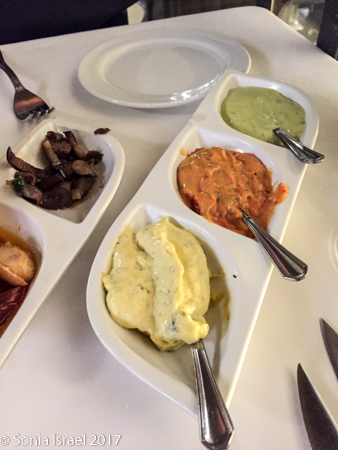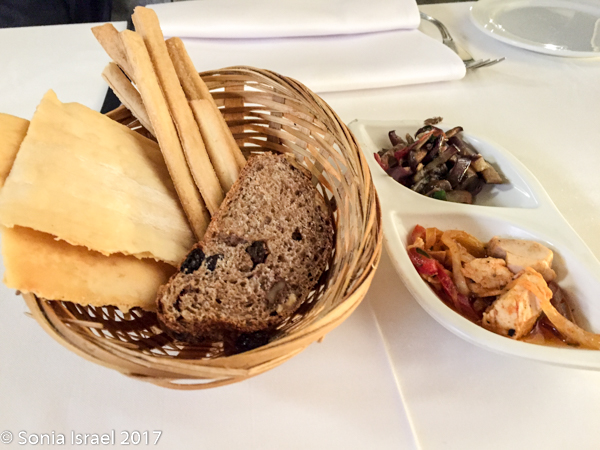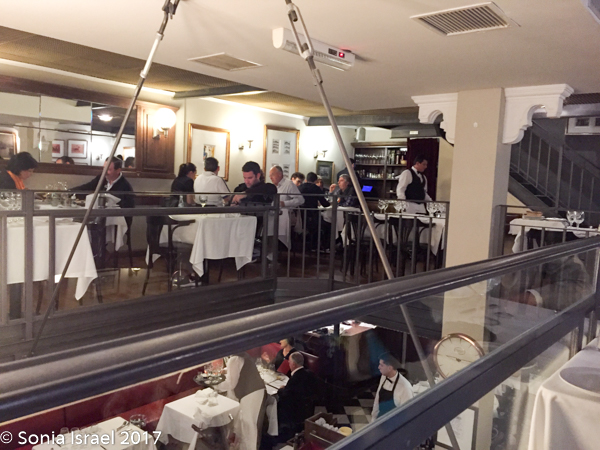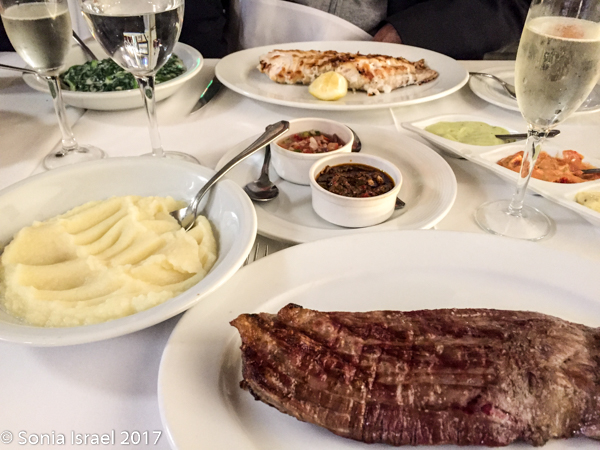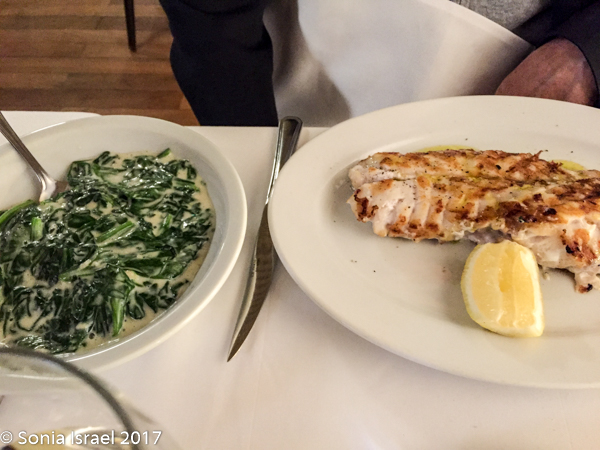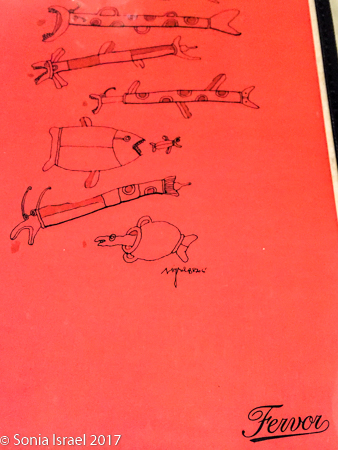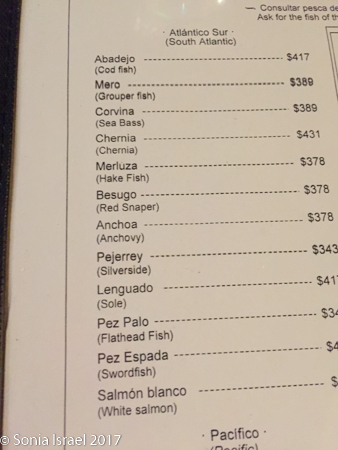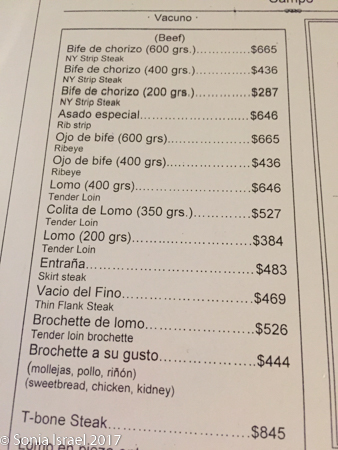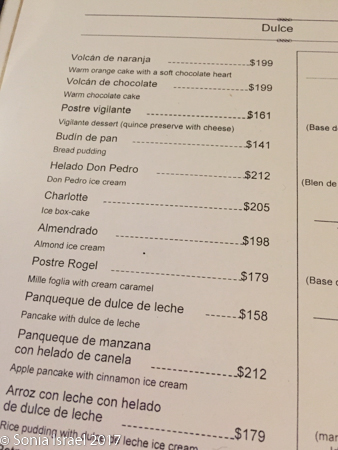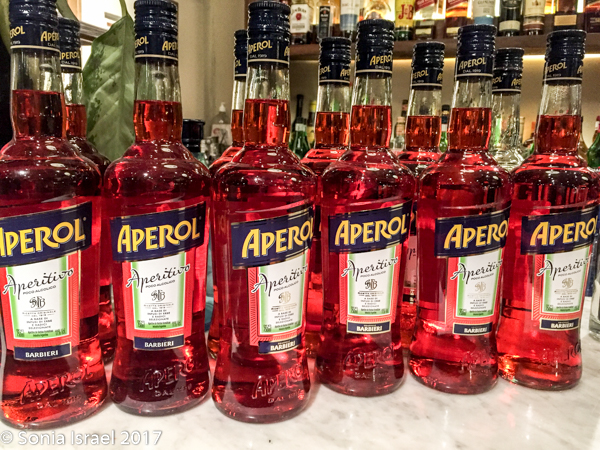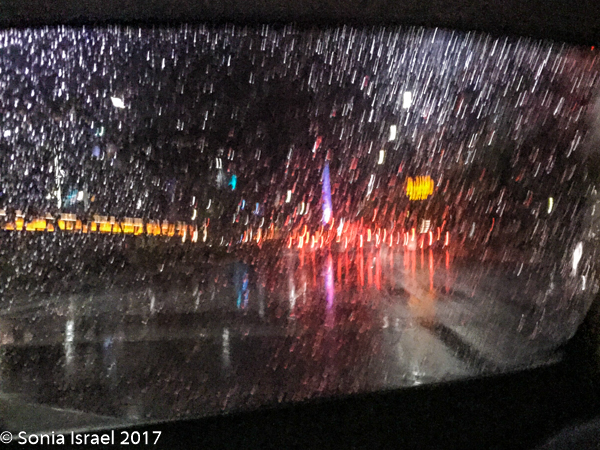Monday, October 16, 2017
Arriving in Buenos Aires
Buenos Aires, which means “fair winds” or ‘good airs,” is one of the largest cities in Latin America. The locals are called portenos, people from the port, implying that most of them are immigrants in one way or another. And this was our destination and would be our home for the next week.
Our flight arrived in Buenos Aires (BA) right on time at 740 in the morning. The airport looked and felt old and worn, especially for such a sophisticated city. Immigration had a very short line which moved quickly. And by the time we walked over to the luggage carousel, our bags had arrived. We walked out into the arrivals hall looking for the sign with our name on it. There were lots of men holding signs. None of them was ours. I walked around several times, but still no one holding our name. Another man with a sign asked us which company we were looking for, and by the time I pulled out our information, a man suddenly appeared with our name. He was a bit late, but at least he was there. Marcelo. And he was a very nice man. We would have him as a driver several times while here.
We all walked out into the sunlight to the car. Marcelo spoke very little English, but he did manage to point out a few sights (like the football – i.e, soccer – stadium; at least one of them. Seems different teams and different neighborhoods each have their own and there are over 25 in all of BA). We immediately admired the architecture in the grand French and Italian-style, and the street art. There is something about European cities that is so beautiful, probably because they are so old but kept up. Oh, you say Buenos Aires in not in Europe? You are of course right. But Buenos Aires is called the “Paris of South America” because so much of the city was built in the golden era when Argentina was one of the richest countries in the word and looked to Europe, and especially Paris, as inspiration. So the homes, the squares, the boulevards the gardens etc all have a European, or to be more exact, a Parisian, flavor. It has been said that Buenos Aires combines faded European grandeur with Latin passion. In another post I read that, “BA feels like a European city that got lost in South America.”
We made it to the hotel in no time. Although this should be been the midst of rush hour, it was Columbus Day (a week later than in the US) and a national holiday, so the streets were empty.
Before I continue, let me say that there is so much to write about Buenos Aires that I have broken it into several posts, to keep each one from being too long. This one is the longest. Please see the other posts on La Boca, San Telmo, the Tigre, Jewish Buenos Aires and the food of Buenos Aires and Final day, final thoughts.
The Mine Hotel
We had booked our flight as part of the American Airlines vacation package which gave us business class plus three nights of hotel. We had a choice of hotels and picked the Mine, a boutique hotel in the Palermo Soho district of BA. We walked in and were greeted with a pitcher of lemonade and chocolates. What could be bad after that?! The Mine is a small boutique hotel with only 20 rooms, but with a garden, a swimming pool and a bi-lingual staff, which came in very handy. It also included free WiFi and free breakfast. The breakfast was lovely with eggs made fresh, wonderful famous Buenos Aires croissants, cereal, fruit etc.
The hotel is in the Palermo Soho district, a section of Palermo Viejo around Plaza Serrano. It is full of stores, cafes. restaurants, bars and street culture. It is full of the traditional low houses, but they have now been converted to boutiques and bars. which turned out to be very convenient to many of the places we wanted to go in the first three days. After that we would be flying to Iguazu (see the Iguazu blog) and then moving to the Sofitel where we would meet up with our group for the second part of this trip, to the Falklands and South Georgia with National Geographic (you can read all about that trip in my other blogs).
A word more about the croissants that everyone, including us, has for breakfast. The croissants here are called medialuna which literally means “half moon.” What makes them different from other croissants is that they are a little smaller and a little sweeter, often glazed with butter. There are actually two types of medialuna. One looks more like a small croissant and the other looks more like flakey crescent moon cookie. Both are delicious and a great way to start the morning or for a mid-morning snack.
There is a craft fair on the square which we would get to visit.
“Don’t wear you camera.” Safety tips for Buenos Aires
It was too early to get a room, so we pulled a few things out of our bags, left the luggage at the front desk, and relaxed for a bit in the back “living room” while waiting for our guide. This would be our first walking tour of BA. Andrea Columbi, 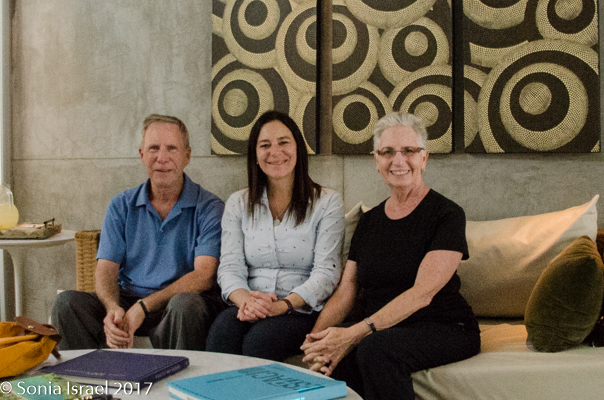 arrived a bit later and off we went. But not before she had a talk with us about safety in BA. Pickpockets abound here. She warned us to keep all our valuables in a safe place where they would not be easy to get to. Backpacks should be worn in front. And hide your camera. Now that would be a problem. If you read my blog, you know I take lots of pictures. Can’t take pictures if my camera is hidden away. Not much point in even carrying a camera if it has to be in your backpack. So I wore it around my neck anyway. I tried to had it a bit by wearing a shirt (you know the one – the one all American tourists wear. Sun-proofed. Insect proofed. Quick drying – and a bit big enough to put over the camera). And later in the week I wore my big backpack in the front with the camera around my neck but in the backpack, so I could easily get it out to photograph.
arrived a bit later and off we went. But not before she had a talk with us about safety in BA. Pickpockets abound here. She warned us to keep all our valuables in a safe place where they would not be easy to get to. Backpacks should be worn in front. And hide your camera. Now that would be a problem. If you read my blog, you know I take lots of pictures. Can’t take pictures if my camera is hidden away. Not much point in even carrying a camera if it has to be in your backpack. So I wore it around my neck anyway. I tried to had it a bit by wearing a shirt (you know the one – the one all American tourists wear. Sun-proofed. Insect proofed. Quick drying – and a bit big enough to put over the camera). And later in the week I wore my big backpack in the front with the camera around my neck but in the backpack, so I could easily get it out to photograph.
Andrea hailed a taxi and we got our second lesson about BA. All taxis in BA are black and yellow. But only take Radio Taxis. There are the ones that have a sign on top of the cab and say “Radio Taxi” on the door. They are the licensed ones with the name of the driver where you could easily see it. Other taxi drivers might cheat you. And always carry small Argentinian bills to pay.
Plaza San Martin
Our first stop was Plaza San Martin. The taxi dropped us off and we just stood for a moment, slowly turning in a full circle, to take it all in. Plaza San Martin is actually a park in the Retiro neighborhood. The reason we stood there for a bit is that the park is surrounded by some of BA’s most impressive buildings. In the center is the statue of Jose de San Martin on his horse. General José de San Martín, led the movement for independence from Spain and is considered the father of Argentina. So as you can imagine, this spot is often visited by dignitaries who come to honor this country’s liberator and leave wreaths at his feet (or at least at the base of the monument).
But the statue of San Martin is not the only one in the plaza. Not far away is a memorial, Monumento a los Caidos de Malvinas, dedicated to the men who died in the Falklands War or as the Argentinians call it, the Malvinas War (see my blog on the Falklands to read more about this).
Over the years this park was a slave market, a military fort and a building. Today it has large expanses of lawn, trees and on a beautiful day like today, full of people walking their dogs, jogging, sitting on the park benches or sunbathing on the grass.
Big Ben
Right across the street from the park is a clock tower, affectionately called the 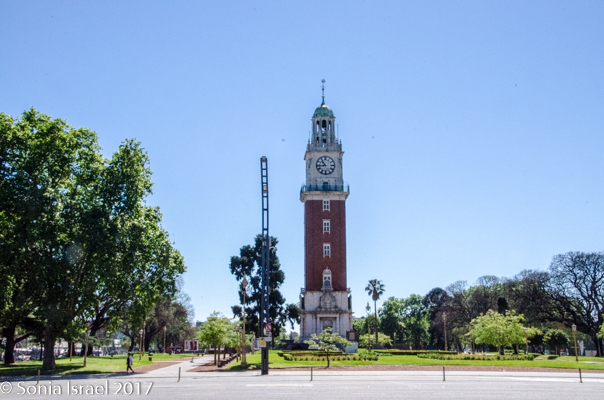 Argentine Big Ben. It was a gift from the British community for BA. As you can imagine, relations between Argentina and Great Britain have not been the best, especially after the Falklands/Malvinas War. In fact, the Islas Malvinas-Falkland Islands War Memorial described above was purposely placed across the street as a permanent reminder of Britain’s battle with Argentina.
Argentine Big Ben. It was a gift from the British community for BA. As you can imagine, relations between Argentina and Great Britain have not been the best, especially after the Falklands/Malvinas War. In fact, the Islas Malvinas-Falkland Islands War Memorial described above was purposely placed across the street as a permanent reminder of Britain’s battle with Argentina.
Revenge is sweet
This area was once full of rich aristocrats. The homes are very large and very beautiful and most are now embassies or museums. Andrea told us one story of a very rich old lady who had a handsome son. A young lady fell in l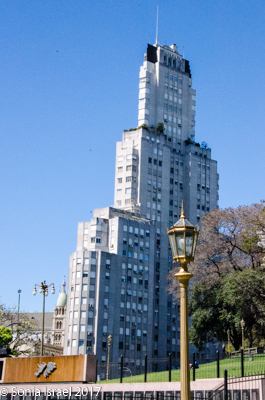 ove with him, but she was “new money” and so the old lady would not allow her to marry her son. This old lady felt that since she had such a wonderful view of the park, her God also deserved one, so she built a church on the other side of the park where she could see it from her windows. But, revenge is sweet. The young lady, who wasn’t allowed to marry her loved one, built a tall building next to the church, forever blocking the old lady’s view of her church.
ove with him, but she was “new money” and so the old lady would not allow her to marry her son. This old lady felt that since she had such a wonderful view of the park, her God also deserved one, so she built a church on the other side of the park where she could see it from her windows. But, revenge is sweet. The young lady, who wasn’t allowed to marry her loved one, built a tall building next to the church, forever blocking the old lady’s view of her church.
Avenue 9 Julio
We made our way to Avenue 9 Julio (July 9th) passing by the Itzhak Rabin Plaza. The Avenue 9 Julio is the widest avenue in the world and honors Argentina’s Day of Independence on July 9, 1816. The avenue runs over half a mile and has seven lanes in each direction with a service road of two more lanes on each side, with wide medians between them and the main road. The medians, full of trees, are great places for walkers, bikers and those just strolling. And the type of trees that were planting bloom either in spring, summer or fall, sot here is always a tree blooming.
The corner we crossed was surrounded by a former palace, beautiful homes that were now offices or embassy’s, street art, trees. It was elegant. It was sophisticated. It was just what I was expecting from Buenos Aires. What surprised me was, that as sophisticated the houses and streets were, the locals were not. I expected the men and women to be dressed to the T’s, like in Madrid where everyone dresses. I was surprised to see so many in jeans and t-shirts. I guess the whole world is becoming more casual.
We stepped into a local store selling local, typical Argentinian products. Lots of leather saddles and belts and hats.
Cars, bicycles and traffic
We kept walking and walking through neighborhoods. Some interesting facts about the streets of BA. You are bound to run into two things – traffic and demonstrations, which close down the streets and cause more traffic. The lanes are 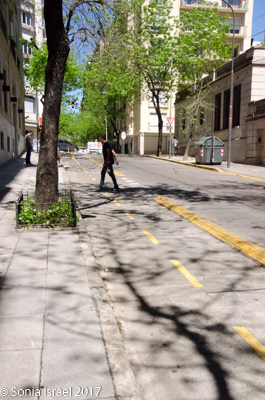 just suggestions and drivers jockey with each other to see who can get closest to the red light and be the first to take off. And pedestrians definitely do not have the right of way. The sidewalks are totally broken (I caught myself a few times and actually fell once). But because of all those cars, bicycles have become a popular way to get around. How are the bikes protected from all the cars? There are special bike lanes that are separated from the car lanes by a small yellow wall. Great for the bikers. Not great Wewhen you keep tripping over them.
just suggestions and drivers jockey with each other to see who can get closest to the red light and be the first to take off. And pedestrians definitely do not have the right of way. The sidewalks are totally broken (I caught myself a few times and actually fell once). But because of all those cars, bicycles have become a popular way to get around. How are the bikes protected from all the cars? There are special bike lanes that are separated from the car lanes by a small yellow wall. Great for the bikers. Not great Wewhen you keep tripping over them.
Café La Biela
We were heading to Recoleta, but made a few stops along the way. The first was the Cafe La Biela. The site has been a café since about 1850, but became its current iteration on the 1950s. It became a local hangout for racing car champions and is still decorated with all sorts of motoring memorabilia such as radiator grills, lamps and horns. On the very first table at the entrance, are two very realistic, life-size statues of Argentine writer Adolfo Bioy Casares and his writer friend Jorge Luis Borges whose black and white photos are all around the café.
After taking pictures both inside and out, we walked across the park to the cemetery. Right across the street is a huge rubber tree (gomero) that was planted by a Fanciscan monk in the early 1800s. What was especially cool was the sculpture of the wire man holding up the tree. And right across the street from that was a man selling feather dusters, but his display was a work of art all its own. And there were two British phone booths. Given the animosity between Argentina and Great Britain, I was surprised to see those.
Sunday market on Monday
But wait. It still wasn’t time to enter the cemetery (no joke intended). Since it was Columbus Day and a holiday, the Sunday arts market was in full swing. So we used this opportunity to walk around the Recoleta area, looking at the people, the art they were selling and the views. It was a beautiful warm day and people were everywhere enjoying the sunshine and their day off.
We passed one colorful large container but looked like a bubble gum machine. Turns out it was a bottle cap drive used to support health care. In 2013 they collected enough to help the construction of a new Oncology center.
Recoleta Cemetery
Most tourists don’t visit cemeteries, except maybe in Paris. And in Buenos Aires. The Recoleta cemetery is probably BA’s top tourist spot. And it was finally time for us to do just that. We walked through the white marble columns, which made it look more like a palace than a cemetery. And once we passed into the park (yes, the park), it was like a city, a city of the dead, but nevertheless, a city. There are tree-lined streets and cross-streets and one could easily get lost. And each street is lined with mausoleums. Big ones and bigger ones.
It used to be a sign of status to be buried here. Now many of the crypts are neglected and full of cobwebs and dust. Some families just rent one for the funeral and then bury their loved one somewhere else. We peeked into a few and the caskets were just lying there. But on the outside, they are like little houses of marble and stone, engraved, some covered with photographs, statues and offerings left as a remembrance of the dead.
There are a lot of famous, and rich, people buried here, including Eva Peron. She had been secretly taken out of the country for nearly 25 years but was finally returned to be interned here.
Evita
This is a good time to give some brief history on Evita. You may know some of her story from the Tim Rice and Andrew Lloyd Webber musical, Evita and the subsequent move about her starring Madonna. But here is some of the real story.
Eva Peron, usually referred to as Evita, was a massively popular celebrity and icon to Argentinians, but also a source of great controversy. She was the wife of Argentine President Juan Peron and thus first lady of Argentina from 1946 until her death in 1952, a total of only 6 years. She was an actress who met Peron in 1944 at a charity event to benefit earthquake victims. She became his mistress and they and they were married the following year. When Peron became President, Evita started speaking on behalf of labor rights and became quite powerful in the pro-Peron trade unions. But that’s not all. She ran the Ministries of Labor and Health, founded and ran the charitable Eva Peron Foundation (whose mission it was to fight poverty. She worked long hours here, giving money and medicine to the poor, touching and kissing the sick and helping the “descamisados” (the poor workers, called the shirtless ones), championed women’s suffrage (making it legal for women to vote and run for office), and founded and ran the first large-scale female political party in Argentina, the Female Peronist Party. Not bad for an actress.
In 1951, with support from the Peronist political base and the low-income and working class Argentinians, she decided to run for Vice-President along side her husband who was running for President, but her declining health and opposition from Arentina’s military and bourgeoisie forced her to withdraw her candidacy. She died of cancer shortly after, in 1952, at the age of 33. Many world leaders attest that women owe a debt to Evita for “her example of passion and combativeness.”
Evita had many detractors who despised her and viewed her as a megalomaniac. But there were also millions of Argentinians who loved her and saw her as a saint. Argentina’s Congress gave her the official title of “Spiritual Leader of the Nation.” When she died, she was given a state funeral that some say was fit for a queen. Throngs of people stood outside the President’s house, weeping and mourning. It is estimated that 3 million (3 million!) people attended her funeral. The president said of her, “She was the most hated but the most loved, the most offended, insulted and discounted but the most venerated – the most humiliated but today eternally victorious. She taught us that to confront the powerful carries a high price.”
But after her death, everything changed. In 1955, after she was embalmed and her body displayed, there was a military coup that overthrew Juan Peron. Peron fled to Spain and the new military leaders banned anything that was pro-Peron. So Evita’s body was removed and in an attempt to confuse her supporters, a wax body replaced it. The real corpse was stored first in a van and then later in an office. In 1957, the body was sent to Milan and buried there under a fake name. In 1971 her body was disinterred and sent to Juan Peron in Madrid. But at this point the body was damaged, so Peron and his third wife brushed her hair, cleaned her body and put it on display in their dining room. By 1973, Peron came out of exile and again became President (with his then wife as Vice-President). He died a year later and his wife had Evita’s corpse returned to BA, on display next to Juan Peron’s corpse. In 1976, her body was moved to her family’s tomb in Recoleta. The ironic part is that she would have preferred to be buried along side the descamisados, the shirtless ones, rather than among the rich and famous who she abhorred.
And that brings us back to Recoleta. While Evita’s tomb is the most popular, there are many other beautiful, famous tombs.
The Tomb of Rufina
For example, there is one monument that has become very famous due to its legend. It is the art nouveau tomb of Rufina Camabaceres. The story is that Rufina was born to a very wealthy family. At the age of 19, as a beautiful young woman and socialite, she suddenly collapsed. Some say this was caused by a scandalous revelation about her boyfriend sleeping with his mother, but this is likely a fabrication). Nevertheless, three doctors pronounced her dead; she was put into a coffin and sealed in her mausoleum. A fe days later, a cemetery worker found that the coffin had moved withing the crypt and the lid was broken in places. Fearing grave robbers, he opened the coffin and found scratch marks covering the inside of the coffin, and Rufina dead, with her hands and face bruised from having tried to break her way out. You see, Rufina has suffered an attack of cataplexy (she probably had narcolepsy), and had been in fact buried alive. And thus is the legend. Of course, there is no evidence one way or the other. But her tomb is a magnificent Art Nouveau piece of art with a full-size statue of her with a flowing robe and a downcast expression, and she is holding the door to the tomb which is framed with lilies. There are always fresh flowers at her feet, left by tourists or others who are enchanted with the story.
Admiral Guillermo Brown
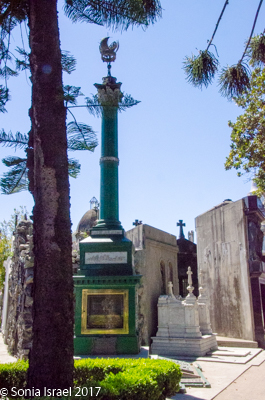 Another famous tomb is that of Admiral William Brown who was an Irish Admiral but founder of the Argentine Navy. His tomb is engraved with cravings of sailing and was built in part with melted down bronze from the canons of his battleships. The outside of the tomb is painted green in honor of his Irish heritage.
Another famous tomb is that of Admiral William Brown who was an Irish Admiral but founder of the Argentine Navy. His tomb is engraved with cravings of sailing and was built in part with melted down bronze from the canons of his battleships. The outside of the tomb is painted green in honor of his Irish heritage.
Never to see each other again
Another tomb was of a wealthy gentleman whose wife couldn’t stand him. He died first and a statue of him seated was built on his mausoleum. When she died, she had herself placed with her back to him so she never had to look at him again. Two young people, in their underwear, where posing at this mausoleum. Perhaps for an advertisement, or perhaps just for fun.
Argentinian Ice Cream
After all that walking around it was time for a break, and what better break to take in BA than an ice cream break. People in BA take their Ice cream very seriously. You don’t have look far as there is an ice cream parlor (heladaria) every few blocks. Why? Over the years more people emigrated from Italy than any other country (45% of immigrants were Italian) and they brought their gelato and pizza with them. And ice cream in BA is more like gelato than the ice cream we have in the US. One account I read said that in the past decade, ice cream consumption grew by 150%. And if you are too lazy to go to the heladaria, you can have your ice cream delivered. Now that is serious business! The most popular flavor, and the one that BA (probably all of Argentina) is best known for, is dulce de leche.
Dulce de Leche
Dulce de Leche (“jam made of milk” or “sweet milk”) is made from sweetened milk (condensed milk or milk with sugar) which is slowly heated which changes its color and creates the most amazing flavor. While it looks like caramel and tastes similar to caramel (but better), it differs from caramel which is made from sugar and water.
Freddo
So we stopped at the heladaria near the cemetery, Freddo’s, one of many popular ice cream parlors. Freddo handmakes all their ice cream using fresh milk, fresh fruit and no additives or preservatives, which means you have to enjoy it right away. No problem!
We walked in and were overwhelmed with the choices of flavors. Banana split (made with dulce de leche swirls), chocolate chip, coconut and dulce de leche, Italian mascarpone, Irish crème, mint chocolate chip, peanut butter with nougat chunks, strawberry, vanilla bean, mixed berry, zabaione, passion fruit mousse, chocolate mousse, brigadeiro (milk chocolate truffle with dulce de leche), and then, five additional flavors of dulce de leche (traditional, with almonds, with chocolate chips, with dulce de leche swirls, with almonds, pecan, gold raisins and caramel. And that doesn’t even count the sorbet flavors. It was a hard choice. No, actually it wasn’t. Dulce de leche it was! Over and over again, whenever we stopped for ice cream. Dulce de leche. And worth every calorie.
We sat on a bench outside, eating our ice cream and watching the people in the beautiful park setting.
Malba
We were starting to wear out; after all we had just arrived that morning. But we 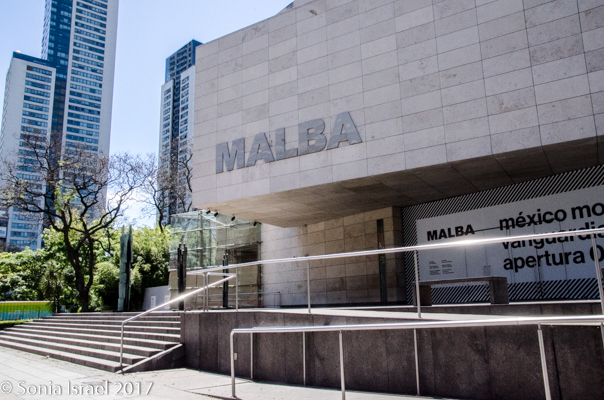 decided to make one more stop at the Malba, the Latin American Art Museum of Buenos Aires located in Palermo, not far from our hotel. We walked up to the front door, and lo and behold, it was closed for renovation. Ah well. It was back to the hotel instead.
decided to make one more stop at the Malba, the Latin American Art Museum of Buenos Aires located in Palermo, not far from our hotel. We walked up to the front door, and lo and behold, it was closed for renovation. Ah well. It was back to the hotel instead.
Our guide dropped us off, but we decided we better not stay in the room or we would just fall asleep. So we went for a walk in the area.
Street Fairs
Again, since it was Columbus Day, there was a small art fair just up the street from the hotel. We walked around admiring the art, but mostly watching the people.
We realized that other than ice cream, we had not eaten since getting off the plane, so we stopped for empanadas. And coffee. Argentinian coffee. Just the jolt we needed.
Balloons, balloons
We walked some more. There was almost a festive atmosphere everywhere, including one entrepreneur selling walking down the middle of the street with a huge bouquet of colorful, reflective balloons.
We finally made it back to the room to rest for a bit and to clean up for dinner. Yes, it was time for our first taste of Argentinian beef.
Where’s the Beef? It’s at La Cabrera
One of the things Argentina is known for is its beef. Cattle first landed on the shores of Argentina back in 1536, brought by the Spanish conquistadors. The Pampas (or plains/fertile lowlands) were perfect for the cattle to live on and the beef industry grew. Argentina now holds the world’s second highest consumption rate of beef (only after Uruguay), estimated at 121 pounds per person per year. That’s a lot of beef!
Our driver and our hotel both recommend La Cabrera, just a few blocks from the hotel. In 2017, among other awards, it made the list of Latin America’s 50 best restaurants. And given how tired and jet-lagged we were, it was convenient. We strolled over for our 830 reservation (early by Argentinian standards, and the time the restaurant was just opening).
It was easy to find as there was a line outside the front door. I by-passed the people and made my way up the few stairs to ask about our reservation. Although there are also outside tables, we were escorted through one room into another and were shown to a table by the window. The walls of the restaurant were brick and there were knick-knacks all over the place. Kitchen utensils hanging from chandeliers. Plates lines up against the wall. An small model airplane and hot air balloons hanging on strings, as if they were flying. The waiters were all in white shirts and ties with an apron and with blue caps.
We were immediately served a basket of bread with three condiments – olives, tapenade and more olives. We each ordered a glass of wine – the choices were white, red of rose, that is, there was one of each. Not much choice. And two empanadas. We then got to choose which cut of steak we wanted out of the 25 different cuts of beef on the menu (although there are other things on the menu as well). All the main courses come with dozens of side dishes, served in little bowls and a large salad with all sorts of fixings. The side dishes included sweet potatoes, regular potatoes, cooked apples, cabbage etc etc. The only problem was they brought out the side dishes about 20 minutes before our steaks, which meant they were all cold by then. I sent them back and had them bring fresh ones. The steaks themselves were huge (we could have easily shared one and still have had leftovers) and were served on a large wooden board and came with small dishes of sauces. Turns out that too is traditional in Argentina. Beef is always served with salsa provenzal (a garlic-parsley-olive oil mix that will leave you with happy taste buds and garlic breath), salsa criolla (a colorful, South American condiment consisting of onions, peppers, and tomatoes soaked in olive oil and vinegar or lemon/lime juice) or chimichurri (an Argentine classic, staple condiment).
Dessert was ice cream (dulce de leche of course) served with a cone sticking up like a clowns hat. And the check came with a lollipop tree. What flavor? Dulce de leche, of course!
As we walked out of the restaurant, stuffed to the gills, there were still people lined 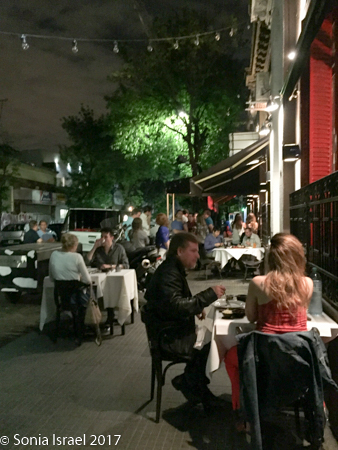 up waiting to get in. And for the locals, that was a much more reasonable time to have dinner.
up waiting to get in. And for the locals, that was a much more reasonable time to have dinner.
I fell in love with the Argentinian chimichurri sauce, so here is the recipe:
Argentine Chimichurri Sauce {Sauce Used for Grilled Meat} has a fresh parsley, lemon flavor and is a wonderful accompaniment to grilled meat. Servings: 2 cups;
Ingredients: 1 cup extra Virgin olive oil, 2/3 cup dry sherry wine; 2 Tablespoons lemon juice; 1 cup Fresh Flat Leaf Parsley chopped; 4 Tablespoons Fresh Basil Leaves chopped; 1 Tablespoon Fresh Oregano leaves, chopped; 3 Tablespoons fresh garlic, minced; 2 Tablespoons shallots minced; 1/4 teaspoon ground pepper, 1/2 teaspoons Kosher salt; 1/4 teaspoon crushed red pepper flakes, crushed. Place all ingredients into a food processor and pulse until well blended, but not pureed.
Day 2; Tuesday, October 17, 2017
Tour of Jewish Buenos Aires and more
This morning, after breakfast, another guide, Jessica Cymerman, and our driver met us. I don’t usually use last names in my blog, to protect people’s privacy. But Jessica was such a terrific guide, and is listed on TripAdvisor, so I want to give her a shout out. Jessica grew up in BA and was going to take us on primarily a Jewish tour of the city. There is a lot of Jewish history here. But that’s for its own post (please do check out that post too). Although the main focus was the Jewish history, Jessica showed us much more about BA.
Plaza Lavalle and the Teatre Colon
We made a quick stop at the Teatre Colon to pick up tickets for a performance that night. Outside the theater there were groups of young students, all in their white smocks. Seems that in the public elementary schools, the kids can wear whatever casual clothes they want (like jeans and t-shirts) but the all wear a white apron or smock. This is an Italian influence and the aprons can be bought in their local supermarkets. I stopped and asked a group of boys if I could take their pictures, and they all broke into huge grins and posed for me. I love doing that!
Across the street from the theater is Plaza Lavalle, the Palacio de Justicia which houses the Supreme Court, and the Excuela Presidente Roca, an educational facility. The Plaza is a large park which during the day is full of people including office workers who enjoy having their lunch outside. But at night, we were warned to walk around it and not through it. There was a statue of General Juan Lavalle, on the tallest monument in the city. General Lavalle was, among other things, governor of Buenos Aires. One of his unfortunate decisions was to execute one of the former governors which ignited a civil war. And yet, there is a large statue in his honor. Ironically, the statue stands in front on that executed governor’s daughter’s former home. The monument has 14 marble shields at its base, representing each province of the Plata River. Inscribed in the monument are different legends revolving around this Gen Lavalle, referring to his influence in the war and Argentina’s independence.
Plaza de Mayo and the Piramide de Mayo
Our driver next dropped us off at the Plaza de Mayo, in what is now the financial district of BA. At the center is the Piramide de Mayo, a white obelisk built to mark the first anniversary of Argentina’s independence from Spain. Right under it are flowers in the shape and colors of the Argentinian flag. Across the plaza is the BA Cabildo, now a museum but once the seat of government.
Casa Rosada (Pink House)
And in front of the Piramide de Mayo is the Casa Rosada (Pink House) with its famous balcony from where Evita gave her famous address to the throngs of impassioned supporters, packed into the square. This is the Argentine President’s offices, but not the residence. Why is the building pink? One theory is that this was the then President Sarmiento’s attempt in 1868 to make peace by mixing red, the color of the Federalists, and white, the color of the Unitarians. The truth more likely is that white paint was mixed with bovine blood which was a common way to color paint in the late 19th century.
Plaza de Mayo Demonstrations
Plaza de Mayo is considered the most important political square in the country as this is where the people come to protest again the government or to celebrate their freedom. And these demonstrations can occur almost any day at any time. In fact there are standing fences that are never moved as they are needed so frequently. Jessica was a bit nervous about whether we would be able to get close enough as there was a demonstration scheduled. The times of the demonstrations are advertised so those that want or need to, can avoid the traffic or plan their schedules around them.
Madres de Plaza de Mayo
One demonstration that occurs every week, on Thursdays, is the Madres de Plaza de Mayo (Mothers of the Disappeared). It had been these protesting mothers, with their white headscarves and carrying photos of their relatives (husbands, sons and daughters mostly) demanding that the government reveal the fate of these “disappeared” victims of the military dictatorship, that brought the issue to the attention of the general public around the world. And they are still protesting every week. On the ground around the plaza are stenciled white bonnets representing the white scarfs that the mothers wear.
This is good time to stop for some of the political background on BA and Argentina. It is not a pretty story.
Junta Rule and the Dirty War
Argentina has gone through many types of rulers. The years between 1976 and 1983 were a very dark time as Argentina was ruled by a military junta that was very oppressive. This period was called the “Dirty War.” Anyone who opposed the government was arrested, imprisoned and were subjected to torture and execution in detention centers. Once they entered a detention center, they “disappeared,” as no one knew where they were they were and usually they were never heard from again. And this is what the Madres de Plaza de Mayo are still protesting about. They march around holding photographs of the husbands, brothers, sons and daughters.
The Dirty War and select detention centers were notorious for mass murders. And then there was systematic work to remove all evidence of the torture that had transpired.
During this Dirty War, Jewish victims were especially singled out for harsh treatment. The number of Jewish victims may have been as high as 3,000, 12% of the victims of the military regime although they made up only 1% of the population.
A memorial site for The Disappeared – under an overpass
Later in the day, as we were driving around, we passed under an overpass and noticed a memorial for the Disappeared. One of the detention centers was located in the Club Atletico sports club, which now is more of an archeological dig site as the building was demolished. The site is now being excavated and many remains of the victims have been found. Across the street is another memorial park. While this noisy, busy location seems like a weird place for a memorial, it is fitting that it is on the spot where so much of the torture occurred and so many people “disappeared.” As an aside, as you walk around BA, you see lots of handmade monuments to the Disappeared.
Metropolitan Cathedral
From the Plaza de Mayo we walked towards the Metropolitan Cathedral. We were still across the street when we saw a group of soldiers, in full gear, marching in time towards the Cathedral. Jessica told us it was the start of the changing of the guard at the mausoleum of General San Martin. His remains were brought from France in 1880. So we followed the soldiers all the way to the mausoleum and had front row views of the changing of the guards. That is what you call good timing!
The mausoleum is made of marble of various colors with a black sarcophagus guarded by three life-size female figures representing Argentina, Peru and Chile, three of the regions freed by the General. Unfortunately, the walls are cracking and peeling and in need of repair.
The Cathedral itself is quite beautiful, but we were not there because of that. We were there to see a most unusual memorial. It is a Holocaust Memorial, known as the Commemorative Mural, the only one of its kind inside a Christian Cathedral. Please see the post on Jewish Buenos Aires to read more about it.
Empanadas in Argentina
And then it was time for lunch. We wanted to go somewhere local, so Jessica suggested her favorite place for empanadas.
The name empanada comes from the Spanish “empanar” meaning “to bread” or “to wrap something in bread.” But that description does not do it justice. Empanadas are a fast-food staple in BA. You can find them everywhere. In Argentina they dough is flour based (as opposed to maize or corn) and stuffed with ground beef, chicken, spinach, ham and cheese or, my favorite, humita (sweet corn with a white sauce). But this is not just beef or chicken. It is beef or chicken mixed with peppers, onions, hard boiled egg, olives. And then the whole thing is generally baked or fried. We ended up eating empanadas for lunch almost every day.
La Morada
Our driver dropped us off at La Morada. This restaurant opened in 1999 and is a family run business with Carlos who is the main chef, his wife Mabel who bakes, his daughter Marcela and his son Toto. The restaurant itself is not very large, with rows of wooden tables and a bar in the back. The walls are covered, COVERED, with old toys which makes it all very whimsical. On each table is a pad of yellow papers and a pencil. Just like in a sushi bar, you check off which and how many empanadas you want. We ordered some chicken, some beef and some sweet corn which are made with a white sauce. And the sweet corn was the most delicious of all. I asked Jessica how we knew which are which and she pointed out that each type had different crimps or edges. Observant!
Café Tortoni
After lunch, with full happy stomachs, we walked across the street to Café Tortoni. This café is very famous for it hot chocolate and churros. There is a long line to get in and get a table, but Jessica knew the owner and staff and they let us in just to look around. The café opened in 1858, so it has been there for a while! It was a popular hangout for painters, writers, journalists and musicians which the owner felt “gave it a bit of luster and fame” even though these artists did not spend much money. How famous is Café Tortoni? Well, visitors have included Albert Einstein, the King Juan Carlos of Spain, and Hillary Clinton. There are historical photos on the walls and so much more. In the back is a table with life-size realistic statues of writer Jorge Borges, tango singer Carlos Gardel and poet Alfonsina Storni who all frequented the cafe. And then there is the back room which is like a museum, full of more photos, momentos and other tributes to the Tango. They have a tango show there as well, but that is not the one we were going to. They don’t take reservations, so there is always a long line, unless you just want to tour through. The neighborhood there was a bit shady, but still great to walk around. We kept meaning to come back another time to taste the famous hot chocolate, but we never made it. Next visit.
The area around the cafe was full of great views, old buildings and statues. Well worth a walk-about.
Water Company Palace
We got back into the car and started driving to our next stop. Along the way we passed the incredible Water Company Palace. This building was originally designed as a water pumping station in 1877. It takes up a whole block and while it still functions as a pumping station, it looks like a French renaissance palace and is covered in over 300,000 glazed, multicolored terra cotta tiles made by Royal Doulton. The roof, known as a mansard or French roof, has four sloping sides, each of which becomes steeper halfway down and is decorated with shields representing the 14 Argentine provinces at the time. The entrance is surrounded by two caryatids (a stone carving of a draped female figure which serves as an architectural support instead of a column or pillar. We didn’t get to stop and gawk, as we might have, since we were just driving by. But what an unbelievably beautiful building.
Don Quixote Monument
The day was only half way done and we had already seen and done so much. Now it was time to head to La Boca (please see that post). On the way we drove on Avenida 9 de Julio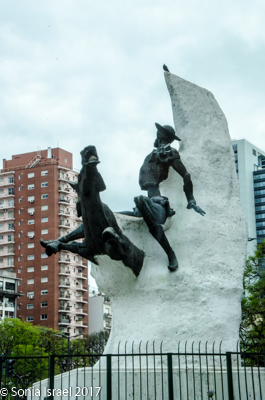 and passed the Don Quixote Monument, which depicts a bronze Don Quixote on his horse, leaping out of large, jagged white rock. I’m not sure why this monument exists, as Don Quixote was Spanish. So I looked it up. Turns out this was a gift from Spain in 1980 to celebrate the 400th anniversary of the founding of the city of BA. But nothing is ever simple. The locals found it unsightly, poorly located and irrelevant to Argentina. In other words, they hated it. One Argentinian artist called it “tasteless, vulgar and completely lacking in creativity.” A second called it the “ugliest thing in the city.” Others claimed it was imbalanced and out of proportion with one critic likening it to a scarecrow, while another referring to the white pedestal base as a giant sugar cube. Offended by the work and perhaps out of a national pride, many Argentines felt the statue represented a belittling of Buenos Aires by the Spanish and called for its relocation. But the statue has remained in its original place. I sort of liked it.
and passed the Don Quixote Monument, which depicts a bronze Don Quixote on his horse, leaping out of large, jagged white rock. I’m not sure why this monument exists, as Don Quixote was Spanish. So I looked it up. Turns out this was a gift from Spain in 1980 to celebrate the 400th anniversary of the founding of the city of BA. But nothing is ever simple. The locals found it unsightly, poorly located and irrelevant to Argentina. In other words, they hated it. One Argentinian artist called it “tasteless, vulgar and completely lacking in creativity.” A second called it the “ugliest thing in the city.” Others claimed it was imbalanced and out of proportion with one critic likening it to a scarecrow, while another referring to the white pedestal base as a giant sugar cube. Offended by the work and perhaps out of a national pride, many Argentines felt the statue represented a belittling of Buenos Aires by the Spanish and called for its relocation. But the statue has remained in its original place. I sort of liked it.
Health Ministry Building and Evita
We continued down the street and in the distance could see a huge portrait of Evita on the side of a building. This was the Health Ministry building which is covered on the north and south sides by forged steel portraits of Evita. Her official portrait faces the south while the image to the north depicts her giving a passionate speech. As I wrote above, Evita was well loved by most of Argentina.
Cartoon statues and Mafalda – Paseo de la Cartoon
As we continuing driving towards El Boca, we passed sculptures of cartoon characters. Turns out there is a street museum, called Paseo de la Cartoon, which pays homage to the characters of the most famous Argentinian comics. It all began with the sculpture of Mafalda. I haven’t written about Mafalda yet. Mafalda is a beloved comic strip character who is 6-years old. She was developed by a cartoonist Joaquin Salvador Lavado, known as Quino. Mafalda stole the hears of Argentinians during their most difficult time in the mid-60s to the mid-70s. Why? Because she reflected the Argentinian middle class and progressive youth, and was concerned about humanity and world peace. She loved the Beatles, Woody Woodpecker and pancakes. And she hated war, injustice, racism, and soup. At a time when Argentinians were not allowed to voice opinions, at a time when so many of them were disappearing, she was their insightful voice of social events. As a cartoon character, it was safe for her to question the state of the world at a time when real people could not. Thus, this little girl with her short black hair and a pet turtle named Bureaucracy (because it moves in slow motion) and restless mind became the symbol of many generations. We saw the image of Mafalda everywhere we went, on t-shirts, magnets, purses. To this day, she is still an icon.
So back to the street museum. A sculpture of Mafalda sitting on a bench became so popular that the legislature decided to add this museum for sculptures. And thus the Paseo de la Cartoon was born.
Buenos Aires and Art
On our way back tot he hotel, we drove past more beautiful houses and statues, including the Male Torso. It’s hard to miss this statue of a male torso with no head, located in Parque Thays, 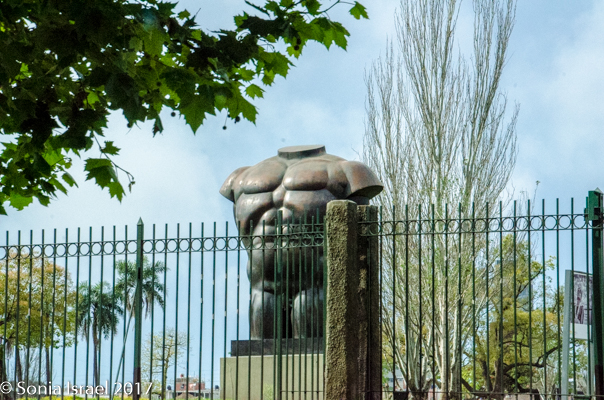 but clearly seen from the street as you drive by. It is made entirely of bronze, with a stone base, by a Colombian artist Fernando Botero. I recognized his work right away as I have always loved Botero and his round figures. I noticed another Bolero statue in another spot in BA as well.
but clearly seen from the street as you drive by. It is made entirely of bronze, with a stone base, by a Colombian artist Fernando Botero. I recognized his work right away as I have always loved Botero and his round figures. I noticed another Bolero statue in another spot in BA as well.
Palermo Park
We kept driving back through the Palermo park with its large statue that is a monument to the Spaniards, officially called Magna Carta and the Four Argentine Regions. It was donated by the Spanish community for the 100th anniversary of the May Revolution. One of the lovely things about this statue is that is stand at the intersection of two wide boulevards, Avenue del Libertador and Avenue Sarmiento, which gives it a majestic feeling.
I think however, that I liked Little Red Riding Hood better.
Little Red Riding Hood
Yes, Little Red Riding Hood. And the wolf. Why is there a statue of Little Red Riding Hood? And the Wolf? No one knows. All that is k nown is that is was brought over in 1937. And that, true to the story, it is located in the forest. Or at least the forest of Palermo, or Bosques de Palermo, i.e., the park.
nown is that is was brought over in 1937. And that, true to the story, it is located in the forest. Or at least the forest of Palermo, or Bosques de Palermo, i.e., the park.
Off to the ballet
We got back to the hotel in time for a short rest and change of clothes before we had to hit the road again. The hotel ordered a taxi for us (this was before I realized Uber was available here) and we headed off. The driver spoke no English and we essentially spoke no Spanish, so we showed him a piece of paper with the address of our destination. Before I knew it, we had pulled into a gas station for him to fill up the car’s tank. And the meter kept running! I noted the charge at the point we pulled and and pulled out and then refused to pay for his filling up with gas. All this was done with hand motions. He didn’t argue but I was pretty flabbergasted that he would do that in the middle of a ride.
El Cuartito
We had checked with Jessica about where to eat close to the Teatro Colon. We all decided that given the timing, and given the specialty, the answer was pizza at El Cuartito. As I mentioned previously, over the many years, there were a large number of Italians (more than any other country) who emigrated to Argentina and they brought pizza with them. El Cuartito is the oldest pizza restaurant in BA, founded in 1934. They have served a lot of pizza! There slogan is “La Beuna Pizza (The Good Pizza).” It is so famous, that it was been declared part of the cultural heritage of BA.
Jessica was sure to tell us what to order as some pizzas are more famous than others. I had my cheatsheet but luckily the menu was both in Spanish and English, so we could figure out what we wanted. Interestingly, at the bottom of the menu it clearly stated to watch out for your belongings. That fit in with all the warnings we were given about safety (or lack thereof) in BA.
One pizza not to be missed was the Fugazza, made with pizza dough, onion, parmesan and olive oil. The second was a Margarita with olives on it. Both were indeed delicious!
Another interesting thing that happened is that a man came in carrying a load of socks. He placed one pair on each table hoping someone would buy them. When he finished placing them all, he came back around and either took the money or took the socks back. Everyone finds a creative way to make a living.
After dinner we walked the few blocks to the Teatro Colon, being sure not to walk through the park which we were told was not safe at night.
The Teatro Colon (Columbus Theater)
We had been told not to miss seeing the Teatro Colon. We considered taking a tour, as tours are offered throughout the day in different languages, but we opted instead to get tickets to see a performance there. We lucked out as there was a ballet performance that night, and I love ballet.
The theater was all lit up and looked like a magical palace with the large crystal chandelier peeking through the windows. This is one of the world’s major opera houses with one of the best five acoustics in the world as well. It has been around for a long time, with the original theater having opened in 1857 and the newer, remodeled one having opened in 1908 and remodeled again and reopened in 2010.
We walked into the beautiful lobby, flanked by a large staircase and deep red carpet. There was a balcony and a large, beautiful cupola with stained glass. It looked like a palace inside as well. There was an old cage elevator, but we walked up the grand staircase to our box seats. We found the right door, walked through an anteroom and through some curtains to our seats in our box. The seats were red velvet, overlooked the orchestra area with a great view of the stage. The auditorium is horseshoe-shaped, has 2,487 seats and standing room for 1,000. The curtain was covered with paintings of opera characters and the auditorium itself was carved with tulip shaped light sconces every few feet, creating a magical ambiance. There was a dome here as well and this one had opera scenes painted on it.
The ballet was wonderful. They danced parts of different ballets rather than one full ballet. And I loved every minute of it.
 We grabbed a taxi back to the hotel and when we got to our room, we found a small plate with two French macaroons waiting for us. Lovely way to end a wonderful day.
We grabbed a taxi back to the hotel and when we got to our room, we found a small plate with two French macaroons waiting for us. Lovely way to end a wonderful day.
October 18, 2017
Today was a side-trip to Colonia Del Sacramento in Uruguay. Please see the blog on Colonia. But on the way there, we passed the Club de Pescadores (Fisherman’s Club).
Club de Pescadores (Fisherman’s Club)
On the way we passed the Club de Pescadores (Fisherman’s Club), which sits on 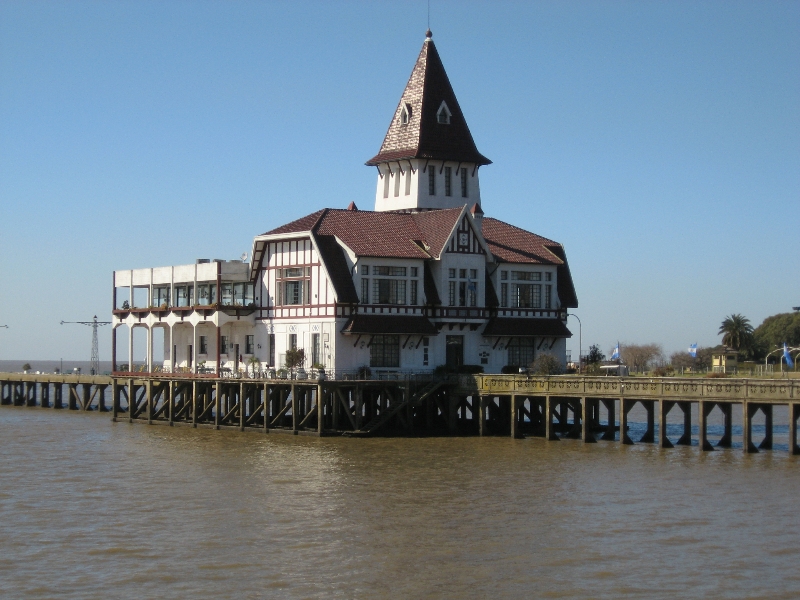 the banks of the Rio de lat Plata. In 1928 the President approved the plan to build a club for social activities. It Puerto Maderois now a national historical monument and an icon of BA.
the banks of the Rio de lat Plata. In 1928 the President approved the plan to build a club for social activities. It Puerto Maderois now a national historical monument and an icon of BA.
Puerto Madero
On the way back from the boat, we passed through the waterfront known as Puerto Madero, a revamped dockside area, with its yellow cranes rising above it. This area is on the banks of the Rio de la Plata, an area of BA that is a real mix of old and new. On one side of the river inlet, the banks are filled with new high-rise construction, sleek skyscrapers that are said to have modernized the entire city, and on the other, the original warehouses and cranes still stand. Personally, I prefer the old rather than the new high-risers. Progress?
Puente de la Mujer (Women’s Bridge)
And spanning the docks, is the Puente de la Mujer (Women’s Bridge) graceful suspension bridge. It is an unusual bridge in that it is a rotating footbridge. The single mast with cables which suspends a portion of the bridge, rotates 90 degrees in order to allow water traffic to pass under it. This suspension bridge represents a couple dancing, what else, but the tango. The white mast symbolizes the man and the curve of the bridge the woman. It is called the “Women’s Bridge” because quite a few of the streets in the Puerto Madero district have women’s names.
Flores
And then, not far from the glistening glass and glitzy buildings, were the Buenos Aires slums, where 70,000 people live in an area called Flores, and it shanty town, Villa 1-11-14, considered the most dangerous area of BA. We drove through and my heart broke looking at the poverty there. Every city has it. But it never gets easier to understand.
Mishiguene
But we got back in time for our dinner reservation at Mishiguene.
Mishiguene means crazy in Yiddish. Chef Tomas Kalika, who spent a year in Israel with Eyal Shani, one of Israel’s most famous chefs, serves Jewish style food like I’ve never had before. The large dining room is low lit with Klezmer music playing in the background. I was already happy. Since we came early (never did get used to eating late), it was not yet crowded, and I asked for the quietest table, which was in the back corner. This gave us a great view of the open kitchen and the table in the kitchen reserved for guests having the full tasting menu. The menu has lots of small plates and, in our experience, everything, even the main platters, are best shared. They served us a bread basket which included bagels and pita and was served with a jar of smaltz (duck fat). There was a pastrami sandwich, gefilte fish (nothing like you have ever had before. The fish was cooked sous-vide, wrapped in a sheet of cooked carrots and served over a horseradish and beet sauce), baba ghanoush (creamy eggplants intact, with a tahini sauce and a tomato sauce, like a bowl of chopped baba ghanoush that has somehow been pieced back together), a whole head of roasted cauliflower, varnenikes, borscht (made with ossu bucco). And just so you don’t compare the food to your grandmothers, he states right up front on the menu, “Bubbes are better!” Needless to say, we had a great meal! He also lists the desserts on the front page. Wise man.
We Ubered back to the hotel and crashed after another wonderful day.
October 21, 2018, Saturday
Sofitel
After a side trip to Uruguay and Iguazu falls (see those blogs), we returned to BA, this time to the Sofitel hotel in the center of town. The hotel itself is beautiful, old school and classic. We had a nice view of the west side of the city which meant we also got to see the sunset. Breakfast was in the main dining room and was a wonderful buffet plus menu (with crepes along side eggs etc). And the croissants were divine. In the afternoon we would visit the bar, called Bibliothec, where we would be served a platter with three dishes of olives, nuts and puffy cheese. One evening when we were too tired to go out, we had dinner in there and it was perfect for a light meal. The staff was knowledgeable, friendly and helpful. They helped us find a laundry (which turned out to be one block away). They sent us to a salon for a manicure. They made dinner reservations for us. They remembered us and welcomed us each time we returned.
Morning on the Tigre, afternoon in town
We spent today sailing to the Tigre (please see that post). On the way back, as we hit BA, we had the driver drop us off at Neuve de Julio so we could walk around and see some of the sights we had missed so far. Like the Gallery Pacifico to see the murals on the ceiling and to exchange some money.
Gallery Pacifico
It was easy to find the Gallery as the building itself is stunning. It sits on a corner and the curves and lines just stand out. That’s because the Gallery Pacifico is in the Beaux Arts building that in the late 1800s housed Argentine Bon Marche, similar to 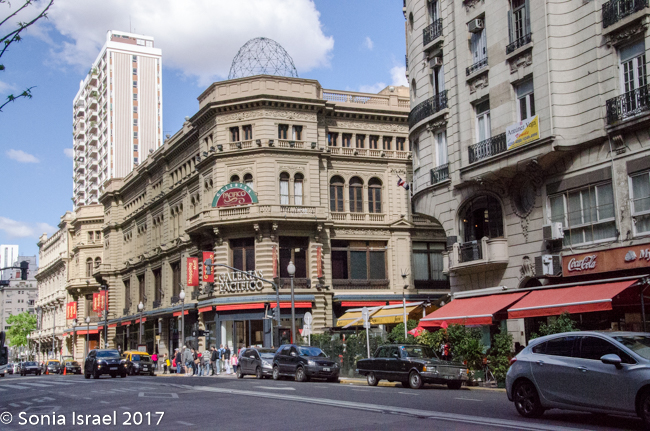 the one in Paris. It became a museum in the early 1900s, changed hands multiple times, was remodeled again and again, and then the large central cupola was constructed in 1945. This is what brings most tourists in to see it. And what brought us here.
the one in Paris. It became a museum in the early 1900s, changed hands multiple times, was remodeled again and again, and then the large central cupola was constructed in 1945. This is what brings most tourists in to see it. And what brought us here.
When we first walked in, it looked like any other shopping mall in any other city. But as we ventured further in, we could see people all standing about looking up. So we too raised our eyes. And there was this amazing cupola decorated with 12 frescos painted in 1946 by 5 Argentinian artists (and I think they deserve credit, so here are their names: Lino Enea Spilimbergo, Antonio Berni, Juan Carlos Casstagnino, Manuel Colmeiro and Demetrio Urruchua). In 1990, when the building was renovated, four more frescos were added (by Romulo Maccio, Josefina Robirosa, Cgullermo Roux and Carlos Alonso). There were Angels flying everywhere. The murals reflect universal themes like brotherhood and man’s relationship to nature, and it’s an interesting study in the unique styles of each artist within the same medium. These frescos are considered some of the most important art in BA.
But there is also a darker side to the building. In 1987 a film crew was shooting in the basement and stumbled upon an abandoned torture chamber. Seems that the First Army Corp used this during the dictatorship. The “disappeared” left desperate markings of names, dates and pleas for help. And for that reason, and for the art, the building was named a national historic monument in 1989.
We also tried to change some money here, as this is one of the places recommended for doing that. I stood in line patiently, slowly making my way up to the window. But as I got there I noticed a sign saying they would not change twenty dollar bills, which is what I had (I can’t remember now if they wanted only smaller bills or only $100 bills). So they sent me to their other location down the street.
More Tango
So off we went, which gave us an opportunity to walk down the pedestrian street, watching the people, window shopping, and enjoying the ambiance. I did get to change my money, and then we kept walking. We passed a church with a crowd standing around the outside. A wedding perhaps? No, it was a couple dancing the tango. Tango is synonymous with Argentina and Buenos Aires.
Demonstrations
We heard drums and thought it was a parade. Silly us. The other thing Buenos Aires is famous for is demonstrations, and this was one. I still don’t know what they were demonstrating about, but we kept our distance.
Fervor
That night we had a reservation at Fervor, another restaurant famous for its beef. It had started to rain so we took an Uber over. The restaurant itself was lovely. We were greeted at the door and shown to our table up in the balcony, overlooking the lower level. The floor was black and white tile in a checkerboard pattern. The bar was a typical old-fashioned beautiful wood bar covered with bottles. The chandeliers were simple, but elegant. And it was fun looking down at all of this. As we still were not used to eating late, we were one of the first to arrive and be seated. But slowly the whole place filled up. We were offered champagne, complementary, and bread with different toppings. We ordered wine, my favorite, Sauvignon Blanc, but an Argentinian one rather than my usual New Zealand. I ordered the beef with mashed potatoes and Andy the fish with spinach. As usual, the beef came with chimichurri sauce and was delicious. Tender, flavorful, and perfectly cooked. Andy reported that his fish was also excellent. We were too full for dessert, but they brought us some cookies anyway.
El Obelisco all lit up
It was still raining when we were ready to leave. Since there was Wi-Fi in the restaurant, I could order an Uber and off we went back to the hotel. And on the way “home,” we could see the symbol of Buenos Aires through the rear window of the car. El Obelisco all lit up.
